![]()
By Gypsy Blue Rose

| Author Note: | If You Would Like To Join the Japanese Poetry Club, please check my author notes |
As moonbeams
caress your bare skin
my recollection
of last night reverberates
over my mounds and valleys
How can I not touch
our yearning still in dreams
pinned to rekindle
our relentless desire
harbored in our starving hearts
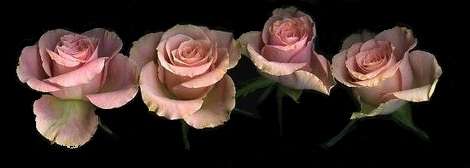
| Author Notes |
Tanka syllable count is 31 syllables or less in a short/long/short/long/long
Painting by Ikenaga Yasunari Reverberate = to excite or stir up: (Her singing reverberated through the house.) TANKA is a romantic Japanese poetic form that originated in the Japanese Imperial Court, where men and women engaged in courtship would exchange tanka. The form was created 1,200 years ago. Like haiku, it's written in a succinct manner in 31 syllables (5/7/5/7/7) OR LESS in a short/long/short/long/long format because Japanese and English syllables are different. Personification, metaphor, simile are permitted in Tanka. Capitalization and punctuation should only be used when necessary. No end rhymes. click here if you want to see tanka rules -- click here if you want to see modern tanka examples -- click here if you want to read free online tanka book -- click here to read Tanka Society of America Thank you very much for taking the time to read and review my poem. Gypsy *If you would like to join the Japanese Club, please click here and look for the Japanese club* RESERVE A SPOT /SUBMIT YOUR ENTRY |
![]()
By Gypsy Blue Rose

| Author Note: | If You Would Like To Join the Japanese Poetry Club, please check my author notes |
mournful loons
serenade me at twilight
outside my window —
instead of my beloved
who rides my yearning afar

| Author Notes |
Few birds sound as mournful as the Common Loon at night
TANKA is a romantic Japanese poetic form that originated in the Japanese Imperial Court, where men and women engaged in courtship would exchange tanka. The form was created 1,200 years ago. Like haiku, it's written in a succinct manner in 31 syllables (5/7/5/7/7) OR LESS in a short/long/short/long/long format because Japanese and English syllables are different. Personification, metaphor, simile are permitted in Tanka. Capitalization and punctuation should only be used when necessary. No end rhymes. click here if you want to see tanka rules -- click here if you want to see modern tanka examples -- click here if you want to read free online tanka book -- click here to read Tanka Society of America *If you would like to join the Japanese Club, please click here and look for the Japanese club* RESERVE A SPOT /SUBMIT YOUR ENTRY Thank you very much for taking the time to read and review my poem. Gypsy |
![]()
By Gypsy Blue Rose

My Beloved
Since you left my bed,
waves of longing drown my heart
midst our lovers-scent
in this gray foggy morning
waiting for you, my darling.
~~~~@~~~~
Time lost meaning, love
engulfed in this senseless war.
Suffering and hate
envelop my bleeding hands
that yearn to embrace you, love.
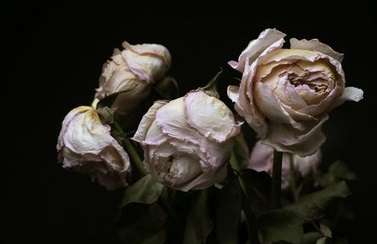
| Author Notes |
SOMONKA is a Japanese verse form of 2 tankas and carries a central theme of love. Created in the 1st century AD. They were the exchange of romantic poems between court lovers.
The elements of the Somonka are: 10 lines made of 2 TANKAS; syllable count: first stanza 5/7/5/7/7 and second stanza 5/7/5/7/7; composed in the form of statement-response; can be written between two poets or one. Start with a TITLE; UNRHYMED; ABOUT LOVE. The Somonka can be simply an exchange of romantic love poems but can be about all kinds of love: sisters, brothers, sons, daughters, friends, pets, etc ... SOURCE: click here to read source and more information *If you would like to join the Japanese Club, please click here and look for the Japanese club* RESERVE A SPOT /SUBMIT YOUR ENTRY Thank you very much for reading and reviewing my poem. Gypsy |
![]()
By Gypsy Blue Rose

As moonbeams
caresses your bare skin
my recollection
of last night reverberates
over my mounts and valleys
How can I not touch
our yearning still in dreams
pinned to rekindle
our relentless desire
harbored in our starving hearts

| Author Notes |
TANKA is a romantic Japanese poetic form that originated in the Japanese Imperial Court, where men and women engaged in courtship would exchange tanka. The form was created 1,200 years ago. Like haiku, it's written in a succinct manner in 31 syllables (5/7/5/7/7) OR LESS in a short/long/short/long/long format because Japanese and English syllables are different. Personification, metaphor, and simile are permitted in Tanka. Capitalization and punctuation should only be used when necessary. No end rhymes. click here if you want to see tanka rules -- click here if you want to see modern tanka examples -- click here if you want to read free online tanka book -- click here to read Tanka Society of America
Thank you very much for taking the time to read and review my poem. Gypsy |
![]()
By Gypsy Blue Rose

Middle of the Night –
My pillow is too lumpy,
the fan is too high,
and I think of you.
I wonder if you are dead
so I check your Facebook page
and your last post is old.
So I check hers
and there are your pictures
… you both look so happy.
Missing you seems wrong.
I tell myself that I am happy
for the two of you.
But a pain rises in my heart
as a small breeze
that grows into a tempest.
Hot tears run down my face
like a cleansing river
clearing old memories
of you and me,
laughing so much … so happy.
Dancing late at night in Spain
at a bar with too many waiters.
You looked at me with love
and held me tight.
I thought it would last forever.
Pain,
hello again,
I will take care of you.
Breathing in and out
I cradle you
and I put you to bed.
Moon shadows cascade over us,
and a soft rain lulls us to sleep.
Goodnight pain.
| Author Notes |
Painting: Ikenaga Yasunari
FREE VERSE is an open form of poetry, which in its modern form arose through the French vers libre form. It does not use consistent meter patterns, rhyme, or any musical pattern.[1] It thus tends to follow the rhythm of natural speech. Thank you for reading my free verse, Gypsy |
![]()
By Gypsy Blue Rose

| Author Note: | If You Would Like To Join the Japanese Poetry Club, please check my author notes |
her red hair ablaze
sprinkled with cherry blossoms
as the sunset dips
in the blazing horizon
where swans sing to dying dusk
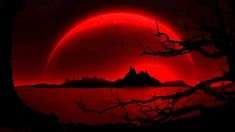
| Author Notes |
HAIKAI is a Japanese comic poetry form, a linked form that developed into a more serious form in the 17th century under the influence of MATSUO BASHO. Eventually, it became HAIKU. The form is 5/7/5/7/7 stanza that can be repeated if you like.
============================================================================== click here for more information ============================================================================== haikai rules and examples *If you would like to join the Japanese Club, please click here and look for the Japanese club* RESERVE A SPOT /SUBMIT YOUR ENTRY Thank you very much for taking the time to read and review my poem. Gypsy |
![]()
By Gypsy Blue Rose

| Author Note: | If You Would Like To Join the Japanese Poetry Club, please check my author notes |
Daydreaming, again,
by our tree covered with hope
and bittersweet fruit
in my deathly empty home
with delusional desires.
| Author Notes |
About lost love
KAIKAI is a Japanese comic poetry form, a linked form that developed into a more serious form in the 17th century under the influence of MATSUO BASHO. Eventually, it became HAIKU. The form is 5/7/5/7/7 stanza that can be repeated if you like. ==================================================== click here for more information ==================================================== haikai rules and examples ==================================================== *If you would like to join the Japanese Club, please click here and look for the Japanese club* RESERVE A SPOT /SUBMIT YOUR ENTRY Thank you for reading and reviewing my poem, Gypsy Painting -- The Day Dream, 1880 by Dante Gabriel Rossetti |
![]()
By Gypsy Blue Rose

| Author Note: | If You Would Like To Join the Haiku Club, please check my author notes |
Lucid dreams of you
dance in my tormented mind
invoking grief
that I thought was long gone
like footprints beneath the snow.
| Author Notes |
Lucid dreams happen when you are asleep but aware that you're dreaming, they feel vivid and real.
MODERN TANKA is a romantic Japanese poetic form that originated in the Japanese Imperial Court, where men and women engaged in courtship would exchange tanka. The form was created 1,200 years ago. Like haiku, it's written in a succinct manner in 31 syllables (5/7/5/7/7) OR LESS in a short/long/short/long/long format. Personification, metaphor, simile are permitted in Tanka. Capitalization and punctuation should only be used when necessary. No end rhymes. click here if you want to see modern tanka examples -- click here if you want to read free online tanka book -- click here to read Tanka Society of America Painting: Chie Yoshi Thank you for taking the time to read and review my poem. Gypsy *If you would like to join the Japanese Club, please click here and look for the Japanese club* RESERVE A SPOT /SUBMIT YOUR ENTRY |
![]()
By Gypsy Blue Rose
.jpeg)
| Author Note: | If You Would Like To Join the Japanese Poetry Club, please check my author notes |
Long after she's gone,
vanilla and sandalwood
linger lazily
at emperor’s bedchamber
amidst full bloom gardenias.

| Author Notes |
Of all the materials that go in fragrances, vanilla is the most liked globally. Vanilla is an aphrodisiac. Gardenias are the number one favorite flower in Japan. Scientists believe that smell and memory are so closely linked because the brain allows olfactory signals very quickly. Experts say the memories associated with smells tend to be older and very vivid when it happens.
TANKA is a romantic Japanese poetic form that originated in the Japanese Imperial Court, where men and women engaged in courtship would exchange tanka. The form was created 1,200 years ago. Like haiku, it's written in a succinct manner in 31 syllables (5/7/5/7/7) OR LESS in a short/long/short/long/long format because Japanese and English syllables are different. Personification, metaphor, simile are permitted in Tanka. Capitalization and punctuation should only be used when necessary. No end rhymes. click here if you want to see modern tanka examples -- click here if you want to read free online tanka book -- click here to read Tanka Society of America Painting: Chie Yoshi *If you would like to join the Japanese Club, please click here and look for the Japanese club* RESERVE A SPOT /SUBMIT YOUR ENTRY Thank you very much for taking the time to read and review my poem. Gypsy |
![]()
By Gypsy Blue Rose

| Author Note: | If You Would Like To Join the Japanese Poetry Club, please check my author notes |
I’m yearning to find
our lost love in this hot night
that sets bed on fire
I burn between sheets in flames
as the dark moon slits rough dusk
| Author Notes |
TANKA is a Japanese poetic form that originated in the Japanese Imperial Court, where nobles competed in tanka contests and for men and women engaged in courtship. Created 1,200 years ago, it can embrace all of the human experience in its brief space with emotions of love, pity, suffering, loneliness, or death.
Tanka is succinct and may not exceed 31 syllables (5/7/5/7/7) but it can be less than 31 syllables in a short/long/short/long/long format because English syllables are longer than Japanese. Personification, metaphor, simile are permitted in Tanka. Capitalization and punctuation should only be used when necessary. No end rhymes. Alliteration should be avoided or used sparingly. A pivot line, usually lines 3, can be read sensibly with lines 1 and 2, and also sensibly with lines 4 and 5, a property that can be used to introduce ambiguity and resonance into the poem. click here if you want to see tanka rules -- click here if you want to see modern tanka examples -- click here if you want to read free online tanka book -- click here to read Tanka Society of America Thank you very much for taking the time to read and review my poem. Gypsy Painting: click here if you would like to see Chie Yoshii art gallery click here if you would like to read Ono No Komachi, Ink Dark Moon, free online tanka book |
![]()
By Gypsy Blue Rose

| Author Note: | If You Would Like To Join the Japanese Poetry Club, please check my author notes |
white egret orchid
sways lazily in warm breeze –
a hothouse diva
in the plush emperor’s court
amidst envious flowers
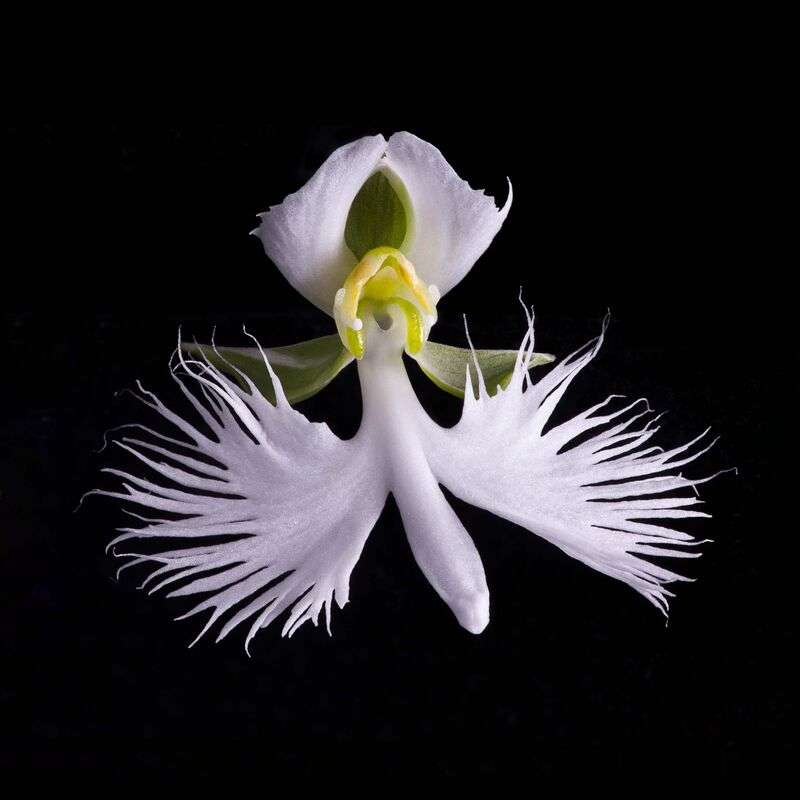
| Author Notes |
--The White Egret Flower is a species of orchid found in China, Japan, Korea and Russia.
--envious = envy, jealousy TANKA is a Japanese poetic form that originated in the Japanese Imperial Court, where nobles competed in tanka contests and for men and women engaged in courtship. Created 1,200 years ago, it can embrace all of the human experience in its brief space with emotions of love, pity, suffering, loneliness, or death. Tanka is succinct and may not exceed 31 syllables (5/7/5/7/7) but it can be less than 31 syllables in a short/long/short/long/long format because English syllables are longer than Japanese. Personification, metaphor, simile are permitted in Tanka. Capitalization and punctuation should only be used when necessary. No end rhymes. Alliteration should be avoided or used sparingly. A pivot line, usually line 3, can be read sensibly with lines 1 and 2, and also sensibly with lines 4 and 5, a property that can be used to introduce ambiguity and resonance into the poem. for rules click here Thank you very much for taking the time to read and review my poem. Gypsy *If you would like to join the Japanese Club, please click here and look for the Japanese club* RESERVE A SPOT /SUBMIT YOUR ENTRY |
![]()
By Gypsy Blue Rose

splendid coral rose
disrobes amidst dimmed moonlight
petal by petal
unfolds revealing pistil —
anxious virgin’s wedding night
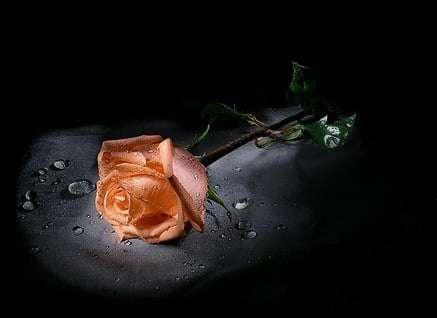
| Author Notes |
--Painting by Ikenaga Yasunari
--The pistil is part of the female reproductive structure of a flower. --Coral Roses represent desire. TANKA is a Japanese poetic form that originated in the Japanese Imperial Court, where nobles competed in tanka contests and for men and women engaged in courtship. Created 1,200 years ago, it can embrace all of the human experience in its brief space with emotions of love, pity, suffering, loneliness, or death. Tanka is succinct and may not exceed 31 syllables (5/7/5/7/7) but it can be less than 31 syllables in a short/long/short/long/long format because English syllables are longer than Japanese. Personification, metaphor, simile are permitted in Tanka. Capitalization and punctuation should only be used when necessary. No end rhymes. Alliteration should be avoided or used sparingly. A pivot line, usually line 3, can be read sensibly with lines 1 and 2, and also sensibly with lines 4 and 5, a property which can be used to introduce ambiguity and resonance into the poem. for rules click here Thank you for reading and reviewing my poem. Gypsy |
![]()
By Gypsy Blue Rose

| Author Note: | For Rules, Please Read My Author Notes |
four million
salty waves between them —
sprinkled with her tears
down under the same moon
and brilliant silver stars
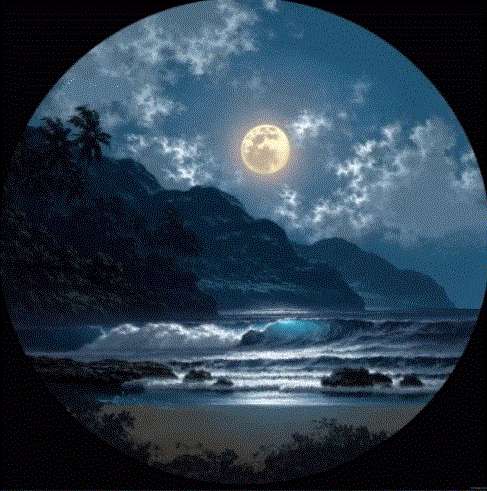
| Author Notes |
Australia is known as 'the land Down Under' for its position in the southern hemisphere.
TANKA is a Japanese poetic form that originated in the Japanese Imperial Court, where men and women engaged in courtship would exchange tanka. The form was created 1,200 years ago. Like haiku, it's written in a succinct manner in 31 syllables (5/7/5/7/7) OR LESS in a short/long/short/long/long format because Japanese and English syllables are different. Personification, metaphor, simile are permitted in Tanka. Capitalization and punctuation should only be used when necessary. No end rhymes. click here if you want to see tanka rules -- click here if you want to see modern tanka examples -- click here if you want to read free online tanka book -- click here to read Tanka Society of America √?¬¢?? click here to read Masterpiece Classes Thank you very much for taking the time to read and review my poem. Gypsy "The poet waits quietly to paint the unsaid." Atticus TANKA is a Japanese poetic form that originated in the Japanese Imperial Court, where men and women engaged in courtship would exchange tanka. The form was created 1,200 years ago. Like haiku, it's written in a succinct manner in 31 syllables (5/7/5/7/7) OR LESS in a short/long/short/long/long format because Japanese and English syllables are different. Personification, metaphor, simile are permitted in Tanka. Capitalization and punctuation should only be used when necessary. No end rhymes. click here if you want to see tanka rules -- click here if you want to see modern tanka examples -- click here if you want to read free online tanka book -- click here to read Tanka Society of America √?¬¢?? click here to read Masterpiece Classes Thank you very much for taking the time to read and review my poem. Gypsy "The poet waits quietly to paint the unsaid." Atticus |
![]()
By Gypsy Blue Rose

| Author Note: | For Rules, Please Read My Author Notes |
ripples of gray downy mane
as she stands alert
howling a mournful call
for her long-absent wolf
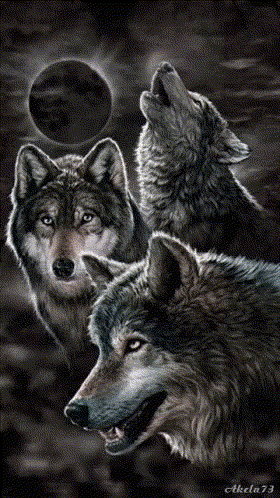
| Author Notes |
Gray Wolves are monogamous, often mating for life.
TANKA is a Japanese poetic form that originated in the Japanese Imperial Court, where men and women engaged in courtship would exchange tanka. The form was created 1,200 years ago. Like haiku, it's written in a succinct manner in 31 syllables (5/7/5/7/7) OR LESS in a short/long/short/long/long format because Japanese and English syllables are different. Personification, metaphor, and simile are permitted in Tanka. Capitalization and punctuation should only be used when necessary. No end rhymes. click here if you want to see tanka rules -- click here if you want to see modern tanka examples -- click here if you want to read free online tanka book -- click here to read Tanka Society of America √????√???√??√?¬¢?? click here to read Masterpiece Classes Thank you very much for taking the time to read and review my poem. Gypsy "The poet waits quietly to paint the unsaid." Atticus |
![]()
By Gypsy Blue Rose

That summer of youth,
when we climbed the beach boulder
pressing skin to skin —
holding on to each other
we were shocked by love’s lightning.
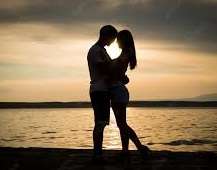
| Author Notes |
"The future for me is already a thing of the past. You were my first love and you will be my last" - Bob Dylan
"First cut is the deepest" is a song by Cat Stevens. It came out the summer I met my first boyfriend. I will never forget him. We did climb a boulder and every time we touched it felt like a little electric shock. TANKA is a Japanese poetic form that originated in the Japanese Imperial Court, where men and women engaged in courtship would exchange tanka. The form was created 1,200 years ago. Like haiku, it's written in a succinct manner in 31 syllables (5/7/5/7/7) OR LESS in a short/long/short/long/long format because Japanese and English syllables are different. Personification, metaphor, simile are permitted in Tanka. Capitalization and punctuation should only be used when necessary. No end rhymes. click here if you want to see tanka rules -- click here if you want to see modern tanka examples -- click here if you want to read free online tanka book -- click here to read Tanka Society of America √??√?¬¢?? click here to read Masterpiece Classes Thank you very much for taking the time to read and review my poem. Gypsy "The poet waits quietly to paint the unsaid." Atticus |
![]()
By Gypsy Blue Rose

Tangled in drenched sheets,
my longing for you grows fierce
as your scent mingles
with almonds and earthy musk —
tasting our delicious night

| Author Notes |
Painting by Ikenaga Yasunariclick here to see his artwork
TANKA is a Japanese poetic form that originated in the Japanese Imperial Court, where men and women engaged in courtship would exchange tanka. The form was created 1,200 years ago. Like haiku, it's written in a succinct manner in 31 syllables (5/7/5/7/7) OR LESS in a short/long/short/long/long format because Japanese and English syllables are different. Personification, metaphor, simile are permitted in Tanka. Capitalization and punctuation should only be used when necessary. No end rhymes. click here if you want to see tanka rules -- click here if you want to see modern tanka examples -- click here if you want to read free online tanka book -- click here to read Tanka Society of America √?¬¢?? click here to read Masterpiece Classes Thank you very much for taking the time to read and review my poem. Gypsy "The poet waits quietly to paint the unsaid." Atticus |
![]()
By Gypsy Blue Rose

| Author Note: | For Rules, Please Read My Author Notes |
tip tap goes the rain
outside my tree house
drip drip from the trees
and soaked falling leaves
knock knock pit-ta-pat
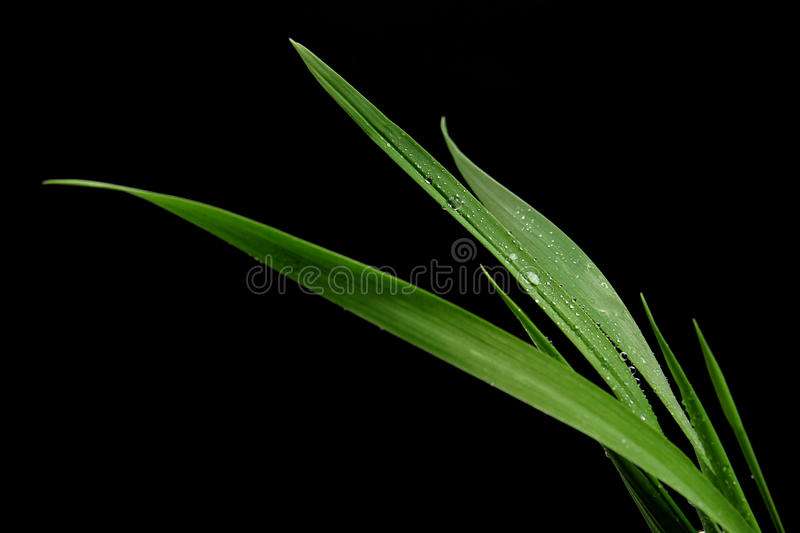
| Author Notes |
-Ekphrastic: poem inspired by a picture
-I used some Onomatopoeia (the formation of a word, such as cuckoo, meow, honk, or boom, by imitation of a sound made by or associated with its referent. Cinquain Tanka is a combination of a cinquain poem and a tanka. It's written using 5 lines with 5 syllables on each line. "Cinq" is French for the number 5. Tanka is a Japanese poem with five lines too. I created this new poem form. It never rhymes. You can use any subject. Line one: 5 syllables Line two: 5 syllables Line tree: 5 syllables Line four: 5 syllables Line five: 5 syllables Thank you very much for taking the time to read and review my poem. Gypsy |
![]()
By Gypsy Blue Rose

| Author Note: | For Rules, Please Read My Author Notes |
At the end of day,
laughter and passion slips away
as darkness envelopes
the dissipating memory
of our love
| Author Notes |
"Outside, daylight was bleeding slowly toward dusk." - Stephen King
MODERN TANKA is a Japanese poetic form. The form was created 1,200 years ago. It used to be written between lovers but now you can write about anything you want. Like haiku, it's written in a succinct manner in 31 syllables (5/7/5/7/7) OR LESS. Personification, metaphor, and simile are permitted in Tanka. Capitalization and punctuation should only be used when necessary. No end rhymes. click here if you want to see modern tanka examples -- click here if you want to read free online tanka book -- click here to read Tanka Society of America Thank you very much for your time and kind review. Gypsy "The poet waits quietly to paint the unsaid." --Atticus |
![]()
By Gypsy Blue Rose

My love waits for me
where the ocean meets the sky
and my passion burns
like the splendid setting sun
that darkly dies every night
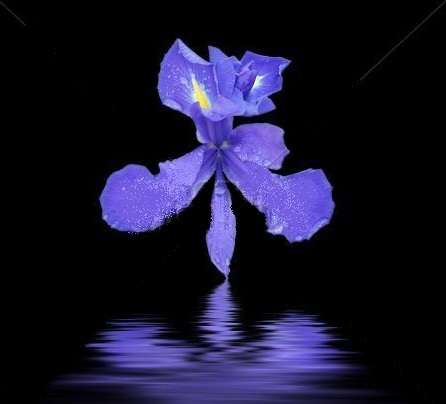
| Author Notes |
"A sunset is the sun's fiery kiss to the night." -Crystal Woods
TANKA is a romantic Japanese poetic form that originated in the Japanese Imperial Court, where men and women engaged in courtship would exchange tanka. The form was created 1,200 years ago. Like haiku, it's written in a succinct manner in 31 syllables (5/7/5/7/7) OR LESS in a short/long/short/long/long format because Japanese and English syllables are different. Personification, metaphor, simile are permitted in Tanka. Capitalization and punctuation should only be used when necessary. No end rhymes. click here if you want to see tanka rules -- click here if you want to see modern tanka examples -- click here if you want to read free online tanka book -- click here to read Tanka Society of America √??√?¬¢?? click here to read Masterpiece Classes Thank you very much for taking the time to read and review my poem. Gypsy "A sunset is the sun's fiery kiss to the night." -Crystal Woods |
![]()
By Gypsy Blue Rose

| Author Note: | For Rules, Please Read My Author Notes |
chasing jupiter rings
and kneeled aquarius
at her feet —
the moon reflects on calm creek
nudging along empty dreams

| Author Notes |
"Ever has it been that love knows not its own depth until the hour of separation." -- Kahlil Gibran
TANKA is a romantic Japanese poetic form that originated in the Japanese Imperial Court, where men and women engaged in courtship would exchange tanka. The form was created 1,200 years ago. Like haiku, it's written in a succinct manner in 31 syllables (5/7/5/7/7) OR LESS in a short/long/short/long/long format because Japanese and English syllables are different. Personification, metaphor, simile are permitted in Tanka. Capitalization and punctuation should only be used when necessary. No end rhymes. click here if you want to see tanka rules -- click here if you want to see modern tanka examples -- click here if you want to read free online tanka book -- click here to read Tanka Society of America -- click here to read Masterpiece Classes Thank you very much for taking the time to read and review my poem. Gypsy "The poet waits quietly to paint the unsaid." Atticus |
![]()
By Gypsy Blue Rose

| Author Note: | For Rules, Please Read My Author Notes |
relentless whine
of cicadas summer dance
in fields of barley
as salty sweat-drops fall
over rosette cheeks
| Author Notes |
MODERN TANKA is a Japanese poetic form. The form was created 1,200 years ago. It used to be written between lovers but now you can write about anything you want. Like haiku, it's written in a succinct manner in 31 syllables (5/7/5/7/7) OR LESS. Personification, metaphor, and simile are permitted in Tanka. Capitalization and punctuation should only be used when necessary. No end rhymes. click here if you want to see modern tanka examples -- click here if you want to read free online tanka book -- click here to read Tanka Society of America
Thank you very much for your time and kind review. Gypsy "The poet waits quietly to paint the unsaid." --Atticus |
![]()
By Gypsy Blue Rose

| Author Note: | For Rules, Please Read My Author Notes |

dad's rampant rage
thrusts through child’s broken heart
and slaughters his innocence —
silent witness
of mom and siblings’ painful life

| Author Notes |
--Based on my friend's life.
National Domestic Violence Hotline 800-799-7233 TANKA is a romantic Japanese poetic form that originated in the Japanese Imperial Court, where men and women engaged in courtship would exchange tanka. The form was created 1,200 years ago. Like haiku, it's written in a succinct manner in 31 syllables (5/7/5/7/7) OR LESS in a short/long/short/long/long format because Japanese and English syllables are different. Personification, metaphor, simile are permitted in Tanka. Capitalization and punctuation should only be used when necessary. No end rhymes. click here if you want to see tanka rules -- click here if you want to see modern tanka examples -- click here if you want to read free online tanka book -- click here to read Tanka Society of America √??????????√?????????√????????√???????√??????√?????√????√???√??√?¬¢?? click here to read Masterpiece Classes Thank you very much for taking the time to read and review my poem. Gypsy "The poet waits quietly to paint the unsaid." Atticus |
![]()
By Gypsy Blue Rose

| Author Note: | For Rules, Please Read My Author Notes |
dreary messenger
cloaked in black plumes
drenched in starless sky
it brings unwelcome thoughts
entangled in painful sharp shards
aggrieved inner child
feels responsible for his sins,
and undeserving of love,
wed to man after man
to get it right 'that one time'
the revelation
brings tears to her aged eyes
forgiving her child
enveloped in His loving arms
no longer entrapped

| Author Notes |
for Child Help Hotline click here 800 422 4453
MODERN TANKA is a Japanese poetic form. The form was created 1,200 years ago. It used to be written between lovers but now you can write about anything you want. Like haiku, it's written in a succinct manner in 31 syllables (5/7/5/7/7) OR LESS. Personification, metaphor, and simile are permitted in Tanka. Capitalization and punctuation should only be used when necessary. No end rhymes. click here if you want to see modern tanka examples -- click here if you want to read free online tanka book -- click here to read Tanka Society of America Thank you very much for your time and kind review. Gypsy "The poet waits quietly to paint the unsaid." --Atticus |
![]()
By Gypsy Blue Rose

| Author Note: | For Rules, Please Read My Author Notes |
one last chance
to save our marriage —
we rake
dying amber embers
in the feeble fireplace
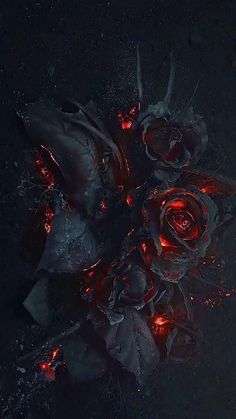
| Author Notes |
Bleak Lake, Alberta, Canada
MODERN TANKA is a Japanese poetic form. The form was created 1,200 years ago. It used to be written between lovers but now you can write about anything you want. Like haiku, it's written in a succinct manner in 31 syllables (5/7/5/7/7) OR LESS. Personification, metaphor, and simile are permitted in Tanka. Capitalization and punctuation should only be used when necessary. No end rhymes. click here if you want to see modern tanka examples -- click here if you want to read free online tanka book -- click here to read Tanka Society of America Thank you very much for your time and kind review. Gypsy "The poet waits quietly to paint the unsaid." --Atticus |
![]()
By Gypsy Blue Rose

| Author Note: | For Rules, Please Read My Author Notes |
in a world of chaos —
splendid sunrises and sunsets
come and go
over open sea and land
consistently without fail
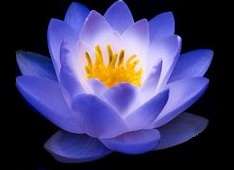
| Author Notes |
MODERN TANKA is a Japanese poetic form. The form was created 1,200 years ago. It used to be written between lovers but now you can write about anything you want. Like haiku, it's written in a succinct manner in 31 syllables (5/7/5/7/7) OR LESS. Personification, metaphor, and simile are permitted in Tanka. Capitalization and punctuation should only be used when necessary. No end rhymes. click here if you want to see modern tanka examples -- click here if you want to read free online tanka book -- click here to read Tanka Society of America
Thank you very much for your time and kind review. Gypsy "The poet waits quietly to paint the unsaid." --Atticus pictures from google public domain |
![]()
By Gypsy Blue Rose

crowned by amber sky
above curvy rolling hills
of soft lush green grass
peppered with violet buds
outside moist and fragrant caves

| Author Notes |
TANKA is a romantic Japanese poetic form that originated in the Japanese Imperial Court, where men and women engaged in courtship would exchange tanka. The form was created 1,200 years ago. Like haiku, it's written in a succinct manner in 31 syllables (5/7/5/7/7) OR LESS in a short/long/short/long/long format because Japanese and English syllables are different. Personification, metaphor, simile are permitted in Tanka. Capitalization and punctuation should only be used when necessary. No end rhymes. click here if you want to see tanka rules -- click here if you want to see modern tanka examples -- click here if you want to read free online tanka book *** click here to read Tanka Society of America *** click here to read Masterpiece Classes
Thank you very much for taking the time to read and review my poem. Gypsy "The poet waits quietly to paint the unsaid." Atticus |
![]()
By Gypsy Blue Rose

| Author Note: | For the King of Hearts |
I miss you most,
when the dying sun descends
to rise by your bed
as I lie on bur-reeds bed
listening to mourning doves cry
| Author Notes |
Painting by Ikenaga Yasunari
Mourning Doves mate for life. The mourning dove is named for its haunting and sad cooing sound. MODERN TANKA is a Japanese poetic form. The form was created 1,200 years ago. It used to be written between lovers but now you can write about anything you want. Like haiku, it's written in a succinct manner in 31 syllables (5/7/5/7/7) OR LESS. Personification, metaphor, and simile are permitted in Tanka. Capitalization and punctuation should only be used when necessary. No end rhymes. click here if you want to see modern tanka examples -- click here if you want to read free online tanka book -- click here to read Tanka Society of America Thank you very much for your time and kind review. Gypsy "The poet waits quietly to paint the unsaid." --Atticus |
![]()
By Gypsy Blue Rose

| Author Note: | For Rules, Please Read My Author Notes |
while I sleep,
cherry blossoms bloom
and petals fall in the creek —
never ending
river of life
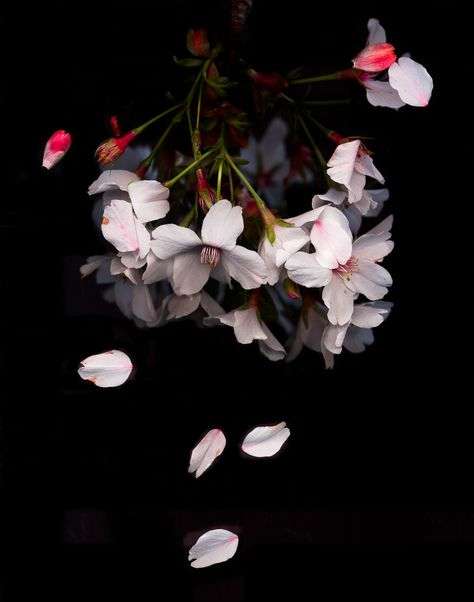
| Author Notes |
3/5/7/4/4 = 23 Modern Tanka is 31 or LESS syllables
MODERN TANKA is a Japanese poetic form. The form was created 1,200 years ago. It used to be written between lovers but now you can write about anything you want. Like haiku, it's written in a succinct manner in 31 syllables (5/7/5/7/7) OR LESS. Personification, metaphor, and simile are permitted in Tanka. Capitalization and punctuation should only be used when necessary. No end rhymes. click here if you want to see modern tanka examples -- click here if you want to read free online tanka book -- click here to read Tanka Society of America Thank you very much for your time and kind review. Gypsy "The poet waits quietly to paint the unsaid." --Atticus |
![]()
By Gypsy Blue Rose

| Author Note: | For Rules, Please Read My Author Notes |
unwelcomed
magical enchantment
that pulls it across the lake
amidst a myriad of lights —
lonely firefly
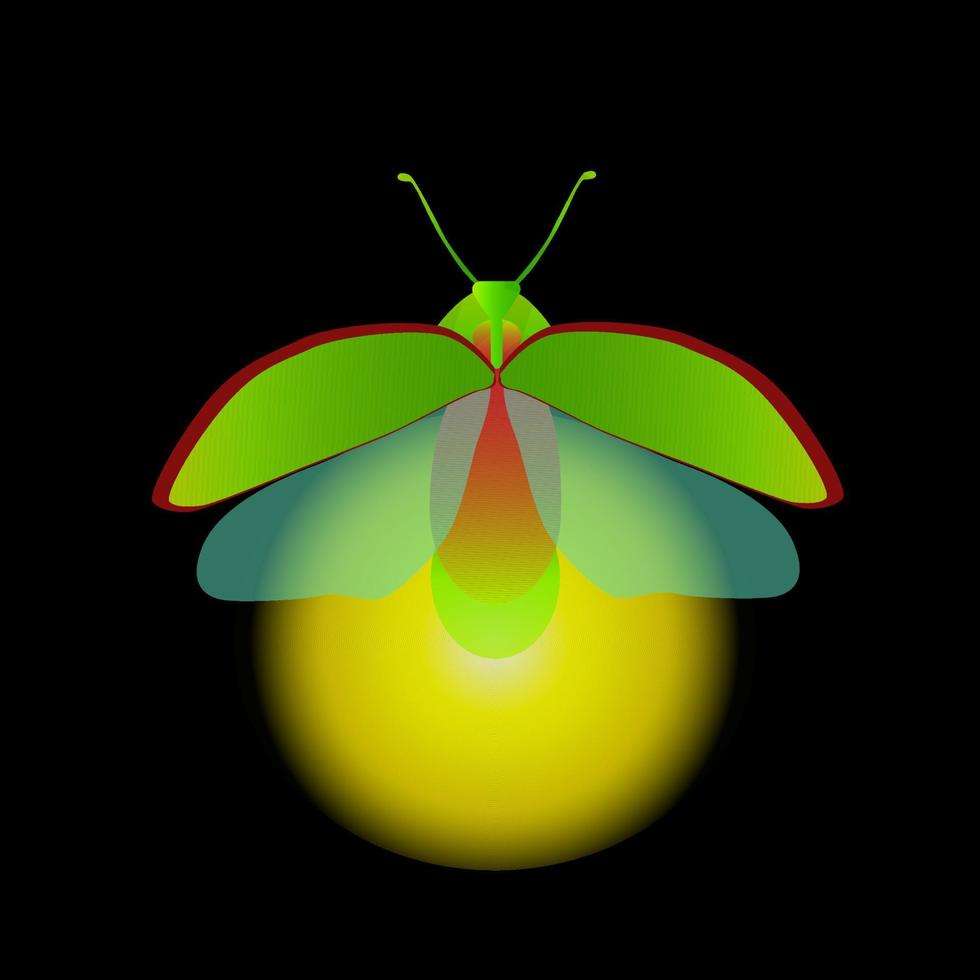
| Author Notes |
Some people feel alone in a crowd even when we seek company and love. I used imagery, personification, and metaphor for my tanka, which is permitted for this poetic form.
"I inhale loneliness like it is the sweet smell of virgin earth conquered by fiery rain drops. Within me, I'm a thousand others." = Faraaz Kazi, Truly, Madly, Deeply MODERN TANKA is a Japanese poetic form. The form was created 1,200 years ago. It used to be written between lovers but now you can write about anything you want. Like haiku, it's written in a succinct manner in 31 syllables (5/7/5/7/7) OR LESS. Personification, metaphor, and simile are permitted in Tanka. Capitalization and punctuation should only be used when necessary. No end rhymes. click here if you want to see modern tanka examples -- click here if you want to read free online tanka book -- click here to read Tanka Society of America Thank you very much for your time and kind review. Gypsy "The poet waits quietly to paint the unsaid." --Atticus |
![]()
By Gypsy Blue Rose

| Author Note: | For Rules, Please Read My Author Notes |
would you hold me,
the way he used to hold me,
tenderly and kind —
I won't ask you about her
on this cruel and cold night
let's pretend
you're mine and hold my hand —
I promise not to fuss
about who you've been with and why
I just need to be held tight
dreams dwindle and die,
sometimes...for some of us —
all we have left
is remembrance of romance
amidst straits in dimmin light

| Author Notes |
End of tanka rhyme happened organically, I didn't plan it.
TANKA is a romantic Japanese poetic form that originated in the Japanese Imperial Court, where men and women engaged in courtship would exchange tanka. The form was created 1,200 years ago. Like haiku, it's written in a succinct manner in 31 syllables (5/7/5/7/7) OR LESS in a short/long/short/long/long format because Japanese and English syllables are different. Personification, metaphor, simile are permitted in Tanka. Capitalization and punctuation should only be used when necessary. No end rhymes. click here if you want to see tanka rules -- click here if you want to see modern tanka examples -- click here if you want to read free online tanka book -- click here to read Tanka Society of America √???????√??????√?????√????√???√??√?¬¢?? click here to read Masterpiece Classes Thank you very much for taking the time to read and review my poem. Gypsy "The poet waits quietly to paint the unsaid." Atticus |
![]()
By Gypsy Blue Rose

splendid love
woven into my untouched
woman curves —
yearning for your caress
and susurrous in my ear

| Author Notes |
susurrous- whispers
syllable count 3/7/3/6/7 painting by ikenaga yasunari TANKA is a romantic Japanese poetic form that originated in the Japanese Imperial Court, where men and women engaged in courtship would exchange tanka. The form was created 1,200 years ago. Like haiku, it's written in a succinct manner in 31 syllables (5/7/5/7/7) OR LESS in a short/long/short/long/long format because Japanese and English syllables are different. Personification, metaphor, simile are permitted in Tanka. Capitalization and punctuation should only be used when necessary. No end rhymes. click here if you want to see tanka rules -- click here if you want to see modern tanka examples -- click here if you want to read free online tanka book -- click here to read Tanka Society of America √????√???√??√?¬¢?? click here to read Masterpiece Classes Thank you very much for taking the time to read and review my poem. Gypsy "The poet waits quietly to paint the unsaid." Atticus |
![]()
By Gypsy Blue Rose

Intoxicating
roses in a vase of dreams
tangled up in blue —
as I lie here alone
daydreaming of you
Faraway,
the sound of your pounding heart
is a lighthouse
that guides me out of the dark
and into your arms
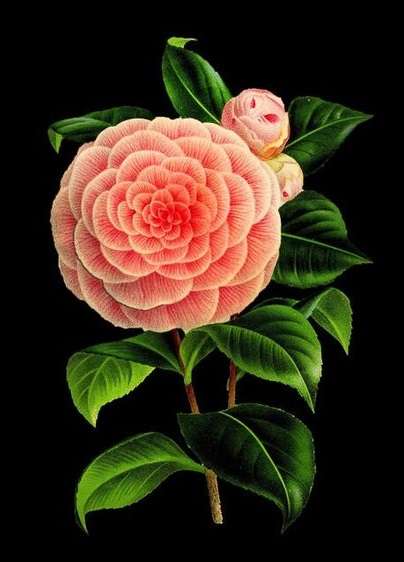
| Author Notes |
Syllables count is 31 OR LESS= 5/7/5/6/5 & 3/7/4/7/5
TANKA is a romantic Japanese poetic form that originated in the Japanese Imperial Court, where men and women engaged in courtship would exchange tanka. The form was created 1,200 years ago. Like haiku, it's written in a succinct manner in 31 syllables (5/7/5/7/7) OR LESS in a short/long/short/long/long format because Japanese and English syllables are different. Personification, metaphor, simile are permitted in Tanka. Capitalization and punctuation should only be used when necessary. No end rhymes. click here if you want to see tanka rules -- click here if you want to see modern tanka examples -- click here if you want to read free online tanka book -- click here to read Tanka Society of America √?¬¢?? click here to read Masterpiece Classes Thank you very much for taking the time to read and review my poem. Gypsy "The poet waits quietly to paint the unsaid." -- Atticus 'Tangled up in blue' is a Bob Dylan song, no relation to the poem, I just liked the phrase Painting by Ikenaga Yasunari |
![]()
By Gypsy Blue Rose

| Author Note: | Dedicated to my friend Helen (lyenochka) who loves plants |
Today, I won’t get up!
I resent chirping birds
and annoying bright sun —
even the morning glories
seem to have tousled hair.
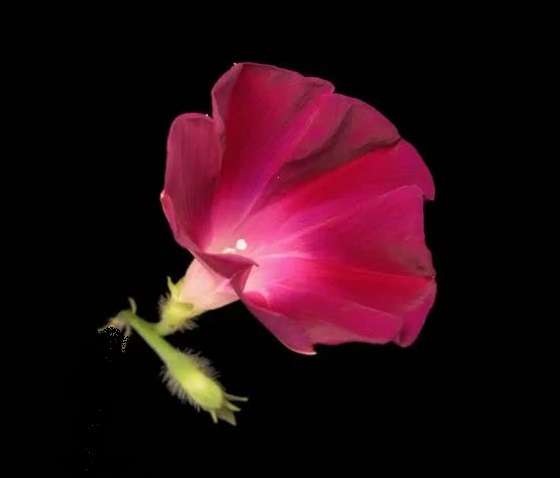
| Author Notes |
Top picture: the Split Second Red, Morning Glory flowers have tousled and twisted red and white petals
Bottom picture: is a regular morning glory flower. MODERN TANKA is a Japanese poetic form. The form was created 1,200 years ago. It used to be written between lovers but now you can write about anything you want. Like haiku, it's written in a succinct manner in 31 syllables (5/7/5/7/7) OR LESS. Personification, metaphor, and simile are permitted in Tanka. Capitalization and punctuation should only be used when necessary. No end rhymes. click here if you want to see modern tanka rules and examples -- click here if you want to read free online tanka book -- click here to read definitions and examples Thank you very much for taking the time to read and review my poem. Gypsy "Poetry heals the wounds inflicted by reason." - Novalis |
![]()
By Gypsy Blue Rose

since the day you left,
my ship has fought raging winds
and turbulent seas –
amidst swelling tidal waves
of terminal proportions
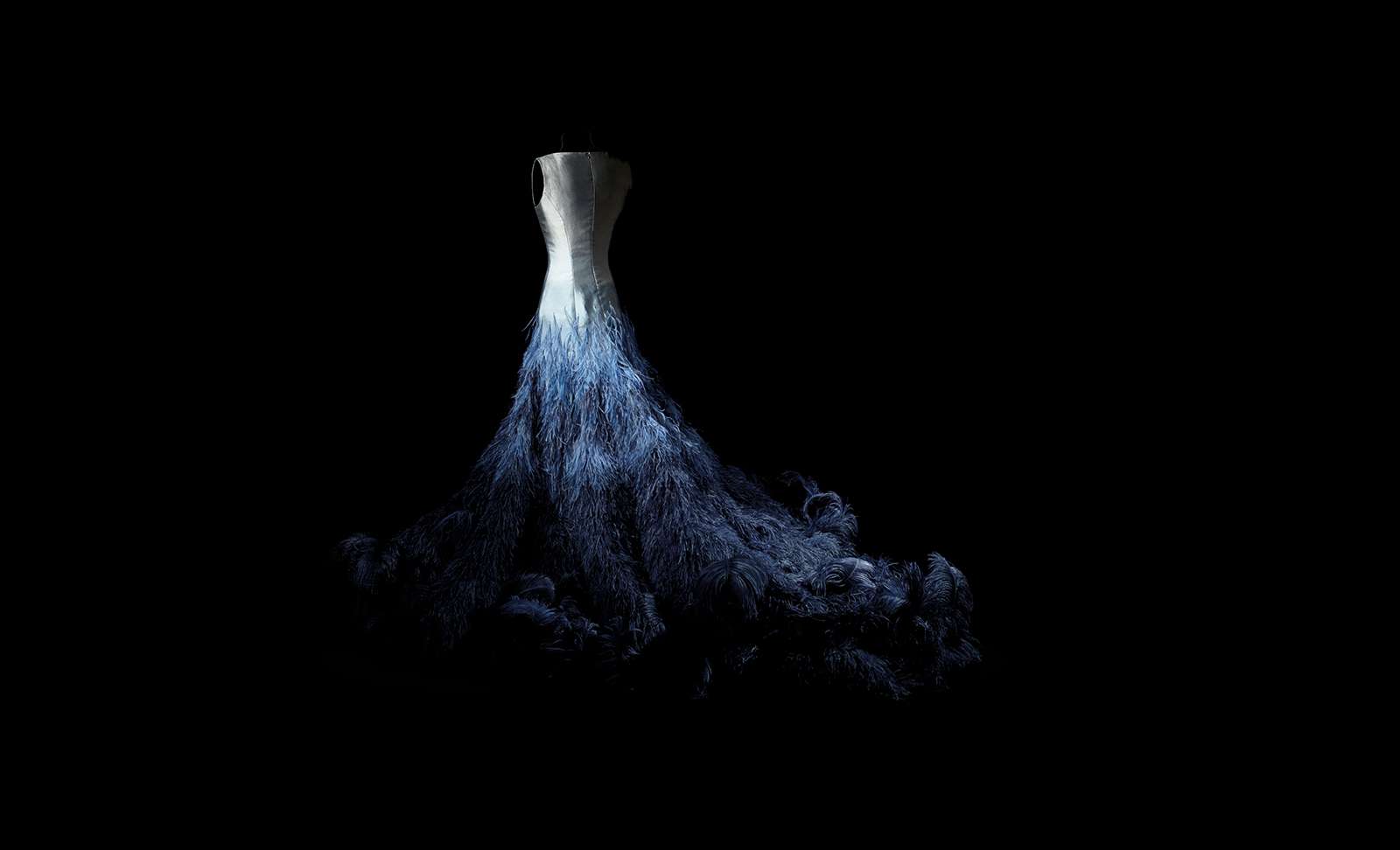
| Author Notes |
MODERN TANKA is a Japanese poetic form. The form was created 1,200 years ago. It used to be written between lovers but now you can write about anything you want. Like haiku, it's written in a succinct manner in 31 syllables (5/7/5/7/7) OR LESS. Personification, metaphor, and simile are permitted in Tanka. Capitalization and punctuation should only be used when necessary. No end rhymes. click here if you want to see modern tanka rules and examples -- click here if you want to read free online tanka book -- click here to read definitions and examples
Thank you very much for taking the time to read and review my poem. Gypsy "Learn the rules like a pro, so you can break them like an artist." --Pablo Picasso Print painting by Japanese artist Hokusai. |
![]()
By Gypsy Blue Rose

| Author Note: | for Dean Kuch, may he rest in peace. |
~ Days of Darkness ~
frightening thoughts of death
sprinkled over my morning joe —
choking me
like a pill too hard to swallow
as I dawdle through dreadful days
demise clings to my skin
like ticks stick to dogs in skid row
where the Grim Reaper follows me close


| Author Notes |
Fictional/ I mixed two forms of poetry, Tanka and Tercet, to express the way a person with Depression may feel. (National Suicide Prevention Lifeline 800-273-8255)
MODERN TANKA is a Japanese poetic form. The form was created 1,200 years ago. It used to be written between lovers but now you can write about anything you want. Like haiku, it's written in a succinct manner in 31 syllables (5/7/5/7/7) OR LESS. Personification, metaphor, and simile are permitted in Tanka. Capitalization and punctuation should only be used when necessary. No end rhymes. click here if you want to see tanka rules -- click here if you want to see modern tanka examples -- click here if you want to read free online tanka book -- click here to read Tanka Society of America √??????????√?????????√????????√???????√??????√?????√????√???√??√?¬¢?? click here to read Masterpiece Classes TERCET is brief poem composed of three lines, forming a stanza or a complete poem. Like in a haiku, poets use minimal language to convey an idea or paint a picture. The effect is a memorable poem that invites the reader to fill in the blanks. The tercet lines are connected grammatically for a better flow. You can use alliteration, metaphor, and personification. Free verse or rhyme. click here to read RULES picture: burak ulker Thank you for reading and reviewing my poem. Gypsy "Poetry heals the wounds inflicted by reason." - Novalis |
![]()
By Gypsy Blue Rose

| Author Note: | for rules, please see my author notes |
Life passes by
faster and faster each day,
like river rapids
rush towards the vast ocean,
where drops await ascension.
| Author Notes |
River Rapids are areas of shallow, fast-flowing water in a stream. Rapids tend to form in younger streams, with water flow that is straighter and faster than in older streams. how water rapids form guidebook
Ascension = to move upward or rise; going up towards the source or beginning; the bodily ascending of Christ from earth to heaven. Ocean saltwater is exposed to the sun everyday. This creates some evaporation of the water. The water is evaporated into the air, forms or goes into clouds, and then returns in the form of precipitation. This is what is called the water cycle. MODERN TANKA is a Japanese poetic form. The form was created 1,200 years ago. It used to be written between lovers but now you can write about anything you want. Like haiku, it's written in a succinct manner in 31 syllables (5/7/5/7/7) OR LESS. Personification, metaphor, and simile are permitted in Tanka. Capitalization and punctuation should only be used when necessary. No end rhymes. click here if you want to see tanka rules -- click here if you want to see modern tanka examples -- click here if you want to read free online tanka book -- click here to read Tanka Society of America √???√??√?¬¢?? click here to read Masterpiece Classes Thank you very much for taking the time to read and review my poem. Gypsy "The poet waits quietly to paint the unsaid." Atticus |
![]()
By Gypsy Blue Rose

Lying on damp sheets
stained with loneness and bad wine
as street cats in heat
meow unashamedly outside —
we both yearn for a good catch
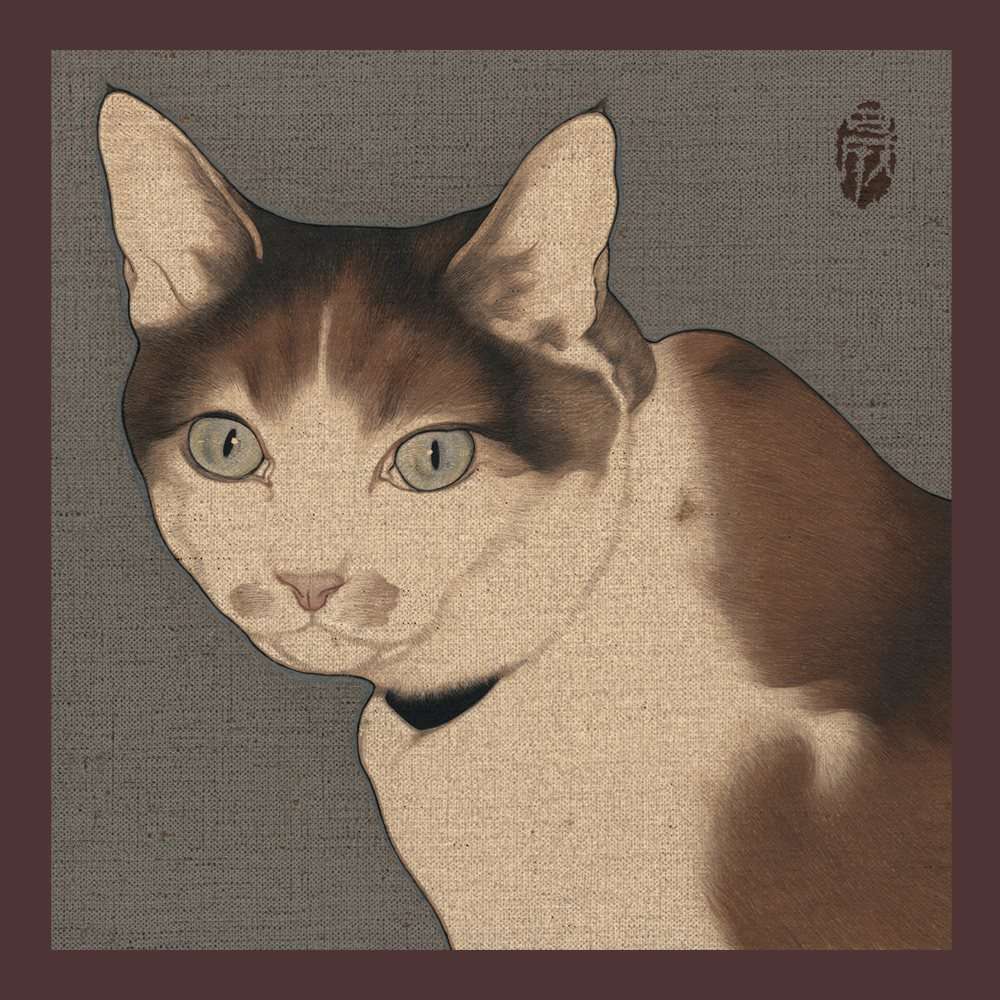
| Author Notes |
TANKA is a romantic Japanese poetic form that originated in the Japanese Imperial Court, where men and women engaged in courtship would exchange tanka. The form was created 1,200 years ago. Like haiku, it's written in a succinct manner in 31 syllables (5/7/5/7/7) OR LESS in a short/long/short/long/long format because Japanese and English syllables are different. Personification, metaphor, simile are permitted in Tanka. Capitalization and punctuation should only be used when necessary. No end rhymes. click here if you want to see tanka rules -- click here if you want to see modern tanka examples -- click here if you want to read free online tanka book -- click here to read Tanka Society of America
Paintings by Ikenaga Yasunari Thank you very much for taking the time to read and review my poem. Gypsy |
![]()
By Gypsy Blue Rose

| Author Note: | For Rules, Please Read My Author Notes |
Golden sunset
is warm and heavy
with eucalyptus scent —
a promise of tomorrow
hangs in the air
| Author Notes |
Modern tanka:
Tanka poetry refers to a Japanese 31-syllable poem, traditionally written in 5/7/5/7/7 Japanese syllables. In english is 31 syllables or less without strict form. Tanka use many literary devices, including personification, metaphors and similes to allow ample visualization. examples of modern tanka Thank you very much for reading and reviewing my poem. Gypsy |
![]()
By Gypsy Blue Rose

| Author Note: | If You Would Like To Join the Japanese Poetry Club, please check my author notes |
Flying high
over the highest mountains —
my soul soars with eagles,
leaving behind
withered fields.
| Author Notes |
In Japan, the eagle is a symbol of the great power of nature that has existed since ancient times.
For Native Americans, the eagle is a symbol of honor, bravery, and mystical powers. JISEI can be written in haiku or tanka form. This one is a Modern Tanka is 31 syllables or less in five lines JISEI is a Japanese poem written by the poet before their own death. These poems reflect the final reflections of one's life. It was generally a tradition with zen monks but were written by poets as well. These poems originated in Japanese, Chinese and Korean cultures as far back as the 7th Century, and can be written in any poetry form, but were traditionally written in tanka or haiku style. for more information click here ====== for more information click here *If you would like to join the Japanese Club, please click here and look for the Japanese club* RESERVE A SPOT /SUBMIT YOUR ENTRY Thank you very much for taking the time to read and review my poem. Gypsy |
![]()
By Gypsy Blue Rose

| Author Note: | for rules, please check my author notes |
x
xx
xxxx
xxxxxx
xxxxxxxx
xxxxxxxxx
xxxxxxxxxxx
Evergreen pines
stitch a quilt of needles
scented with minty myrrh.
Do they know autumn arrived
by fall’s wind .............. crispy and cold?
xxxxxx
xxxxxx
xxxxxx
xxxxxx
xxxxxx
xxxxxx
xxxxxx
xxxxxx
xxxxxx
| Author Notes |
Myrrh is an aromatic scent, especially in pine trees
TANKA is a romantic Japanese poetic form that originated in the Japanese Imperial Court, where men and women engaged in courtship would exchange tanka. The form was created 1,200 years ago. Like haiku, it's written in a succinct manner in 31 syllables (5/7/5/7/7) OR LESS format because Japanese and English syllables are different. Personification, metaphor, simile are permitted in Tanka. Capitalization and punctuation should only be used when necessary. No end rhymes. click here if you want to see tanka rules -- click here if you want to see modern tanka examples -- click here if you want to read free online tanka book -- click here to read Tanka Society of America Thank you very much for taking the time to read and review my poem. Gypsy |
![]()
By Gypsy Blue Rose

| Author Note: | for rules, please check my author notes |
Enveloped in pain
and wretched remembrance,
while bathed in darkness,
with my cicada-companions,
and their solace sonata.
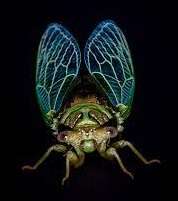
| Author Notes |
Sonata is a musical composition for one or two instruments
TANKA is a romantic Japanese poetic form that originated in the Japanese Imperial Court, where men and women engaged in courtship would exchange tanka. The form was created 1,200 years ago. Like haiku, it's written in a succinct manner in 31 syllables (5/7/5/7/7) OR LESS in a short/long/short/long/long format because Japanese and English syllables are different. Personification, metaphor, simile are permitted in Tanka. Capitalization and punctuation should only be used when necessary. No end rhymes. click here if you want to see tanka rules -- click here if you want to see modern tanka examples -- click here if you want to read free online tanka book -- click here to read Tanka Society of America Thank you very much for taking the time to read and review my poem. Gypsy |
![]()
By Gypsy Blue Rose

| Author Note: | A New Form I Created |
Where luscious ground grew
amber embers burn —
our Mother Nature
tries to heal herself
as dicks’ cig-butts fly
| Author Notes |
*A new poetic form I created.
Cinquain Tanka is a combination of a cinquain poem and a tanka. It's written using 5 lines with 5 syllables on each line. "Cinq" is French for the number 5. Tanka is a Japanese poem with five lines too. I created this new poem form. It never rhymes. You can use any subject. Line one: 5 syllables Line two: 5 syllables Line tree: 5 syllables Line four: 5 syllables Line five: 5 syllables Thank you for reading my poem. Gypsy |
![]()
By Gypsy Blue Rose

In your absence,
I hold on to the moonlight,
that covers my flesh,
with dreamy silver stardust,
to quell my yearning till tonight.

| Author Notes |
Painting by Ikenaga Yasunari
TANKA is a romantic Japanese poetic form that originated in the Japanese Imperial Court, where men and women engaged in courtship would exchange tanka. The form was created 1,200 years ago. Like haiku, it's written in a succinct manner in 31 syllables (5/7/5/7/7) OR LESS in a short/long/short/long/long format because Japanese and English syllables are different. Personification, metaphor, simile are permitted in Tanka. Capitalization and punctuation should only be used when necessary. No end rhymes. click here if you want to see tanka rules -- click here if you want to see modern tanka examples -- click here if you want to read free online tanka book -- click here to read Tanka Society of America Thank you very much for taking the time to read and review my poem. Gypsy |
![]()
By Gypsy Blue Rose

| Author Note: | If You Would Like To Join the Japanese Poetry Club, please check my author notes |
awake with longing
of your tight and gentle hug
dipped in love tonight —
daydreaming of your moist lips
and clear aquamarine eyes
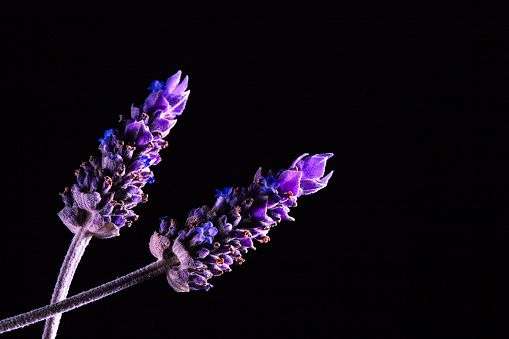
| Author Notes |
TANKA is a romantic Japanese poetic form that originated in the Japanese Imperial Court, where men and women engaged in courtship would exchange tanka. The form was created 1,200 years ago. Like haiku, it's written in a succinct manner in 31 syllables (5/7/5/7/7) OR LESS in a short/long/short/long/long format because Japanese and English syllables are different. Personification, metaphor, simile are permitted in Tanka. Capitalization and punctuation should only be used when necessary. No end rhymes. click here if you want to see tanka rules -- click here if you want to see modern tanka examples -- click here if you want to read free online tanka book -- click here to read Tanka Society of America
Thank you very much for taking the time to read and review my poem. Gypsy *If you would like to join the Japanese Club, please click here and look for the Japanese club* RESERVE A SPOT /SUBMIT YOUR ENTRY |
![]()
By Gypsy Blue Rose

| Author Note: | For Rules, Please Read My Author Notes |
Geisha glides gracefully
across bamboo floor
as breeze brushes
her jet-black hair off her face ~
gentle jasmine scent follows
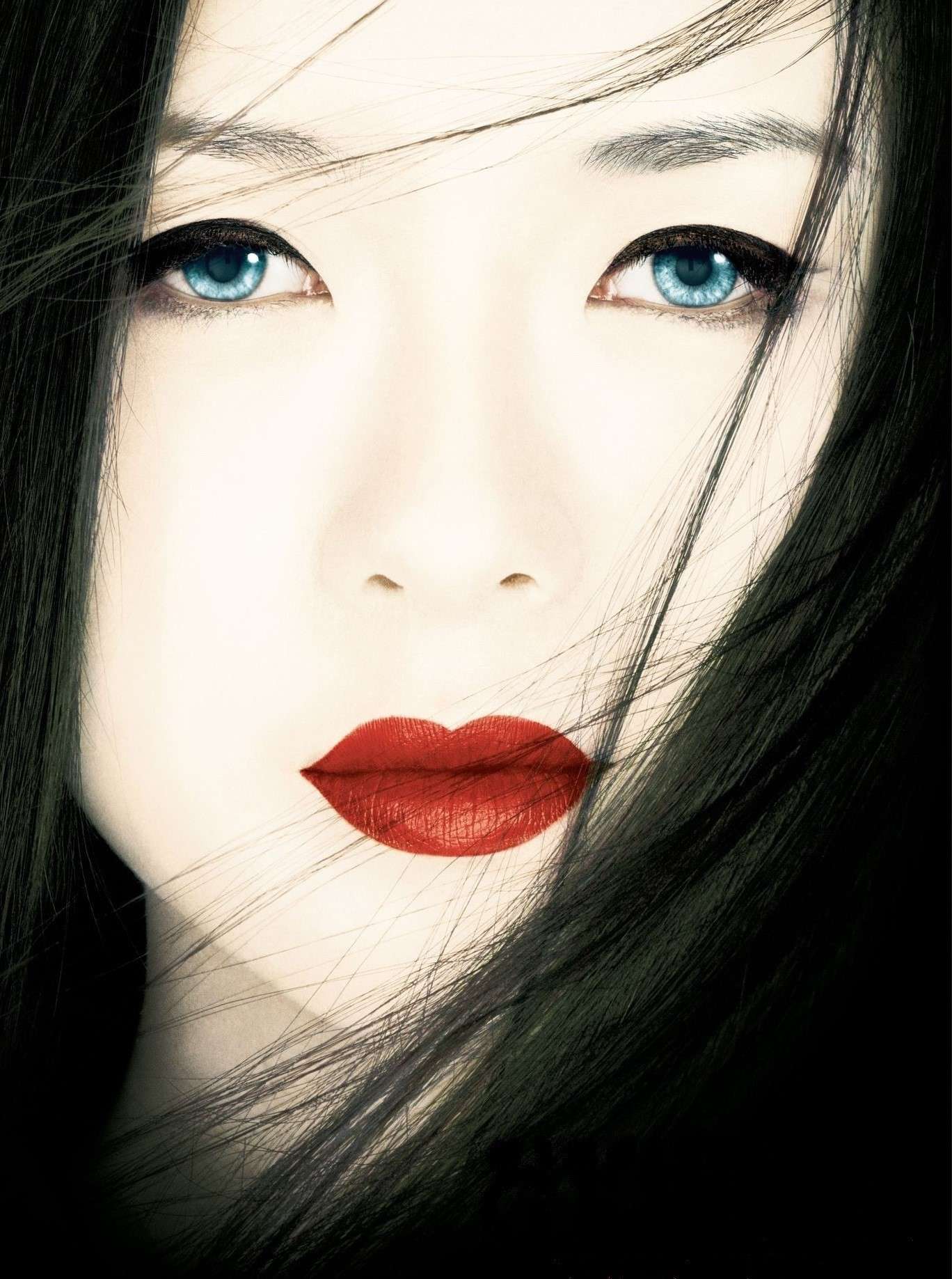
| Author Notes |
Geisha are a class of female Japanese performing artists and entertainers trained in traditional Japanese performing arts styles, such as dance, music, and singing, as well as proficient conversationalists and hosts. for more information click here
TANKA is a Japanese poetic form that originated in Japan's Imperial Court, where the men and women engaged in courtship would exchange tanka after an intimate night. This poetic form was created 1,200 years ago. FORM: It's written in a succinct manner of 31 syllables (5/7/5/7/7) OR LESS because Japanese and English syllables are different. Personification, metaphor, and simile are permitted in Tanka. Capitalization and punctuation should only be used when necessary. No end rhymes. ============================================================================== click here if you want to see tanka rules ============================================================================== click here if you want to see modern tanka examples ============================================================================== click here if you want to read free online tanka book ============================================================================== click here to read Tanka Society of America ============================================================================== click here to read Masterpiece Classes Thank you very much for taking the time to read and review my poem. Gypsy "The poet waits quietly to paint the unsaid." Atticus |
![]()
By Gypsy Blue Rose

| Author Note: | For Rules, Please Read My Author Notes |
Dusk deepens
with vixen’s cries for her mate,
as my tears free fall
on lily-scented pillow
musing about one-sided love

| Author Notes |
-- When a female fox (or 'vixen') calls for her mate (or dog) sounds like a woman crying.
-- Vixen = a female fox; an attractive woman -- Artwork by Chie Yoshii click here if you want to see more TANKA is a Japanese poetic form that originated in Japan's Imperial Court, where the men and women engaged in courtship would exchange tanka after an intimate night. This poetic form was created 1,200 years ago. FORM: It's written in a succinct manner of 31 syllables (5/7/5/7/7) OR LESS because Japanese and English syllables are different. Personification, metaphor, and simile are permitted in Tanka. Capitalization and punctuation should only be used when necessary. No end rhymes. ============================================================================== click here if you want to see tanka rules ============================================================================== click here if you want to see modern tanka examples ============================================================================== click here if you want to read free online tanka book ============================================================================== click here to read Tanka Society of America ============================================================================== click here to read Masterpiece Classes Thank you very much for taking the time to read and review my poem. Gypsy "The poet waits quietly to paint the unsaid." Atticus |
![]()
By Gypsy Blue Rose

| Author Note: | Tanka Using All 5 Senses: |
Natal plum thorns
have risen between us
and if I can't have you
my life has no meaning
bitter saps taste like the end
Light gray mist
drifts over crashing waves
that sound like rage
with fierce grief of lost love
tangled in salty pungent scent
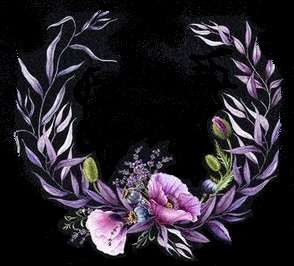
| Author Notes |
"Come, bitter conduct, come, unsavory guide.
Thou desperate pilot, now at once run on The dashing rocks thy seasick, weary bark. Here's to my love" (drinks the poison) om - 'Romeo and Juliet' Most Tanka poems are written by women poets. Natal Plum is a hardy barrier shrub with edible fruit. The shrub produces two-inch forked thorns covered in glossy green poisonous white sap when broken. Barbara Wilkey challenge me to use all senses. In these tankas, I use "touch, hearing. sight, smell and taste". TANKA is a Japanese poetic form that originated in Japan's Imperial Court, where the men and women engaged in courtship would exchange tanka after an intimate night. This poetic form was created 1,200 years ago. FORM: It's written in a succinct manner of 31 syllables (5/7/5/7/7) OR LESS because Japanese and English syllables are different. Personification, metaphor, and simile are permitted in Tanka. Capitalization and punctuation should only be used when necessary. No end rhymes. ============================================================================== click here if you want to see tanka rules ============================================================================== click here if you want to see modern tanka examples ============================================================================== click here to read Tanka Society of America ============================================================================= click here to read Masterpiece Classes Thank you very much for taking the time to read and review my poem. Gypsy "The poet waits quietly to paint the unsaid." Atticus Painting by Chie Yoshii click here if you want to see more |
![]()
By Gypsy Blue Rose

| Author Note: | For Rules, Please Read My Author Notes |

| Author Notes |
TANKA is a Japanese poetic form that originated in Japan's Imperial Court, where the men and women engaged in courtship would exchange tanka after an intimate night. This poetic form was created 1,200 years ago.
FORM: It's written in a concise manner of 31 syllables (5/7/5/7/7) OR LESS because Japanese and English syllables are different. Personification, metaphor, and simile are permitted in Tanka. Capitalization and punctuation should only be used when necessary and it never rhymes. ============================================================================== click here if you want to see tanka rules ============================================================================== click here if you want to see modern tanka examples ============================================================================== click here to read Tanka Society of America ============================================================================== click here to read why is 5/7/5 OR LESS rule ============================================================================== click here to read Masterpiece Classes ============================================================================== Thank you very much for taking the time to read and review my poem. Gypsy "The poet waits quietly to paint the unsaid." Atticus |
![]()
By Gypsy Blue Rose

| Author Note: | For Rules, Please Read My Author Notes |

| Author Notes |
"Love is patient and kind; love does not envy or boast; it is not arrogant or rude. It does not insist on its own way; it is not irritable or resentful; it does not rejoice at wrongdoing, but rejoices with the truth. Love bears all things, believes all things, hopes all things, endures all things." -- Corinthians 13:4-7
TANKA is a Japanese poetic form that originated in Japan's Imperial Court, where the men and women engaged in courtship would exchange tanka after an intimate night. This poetic form was created 1,200 years ago. FORM: It's written succinctly with 31 syllables (5/7/5/7/7) OR LESS because Japanese and English syllables are different. Personification, metaphor, and simile are permitted in Tanka. Capitalization and punctuation should only be used when necessary. No end rhymes. ============================================================================== click here if you want to see tanka rules ============================================================================== click here if you want to see modern tanka examples ============================================================================== click here to read Tanka Society of America ============================================================================== click here to read why is 5/7/5 OR LESS rule ============================================================================== click here to read Masterpiece Classes ============================================================================== Thank you very much for taking the time to read and review my poem. Gypsy "The poet waits quietly to paint the unsaid." Atticus |
![]()
By Gypsy Blue Rose


| Author Notes |
Modern Tanka is a Japanese short free verse poem written in 5 lines and 31 syllables OR LESS. If you want to read more, please check the rules and source links below.
MODERN TANKA is a Japanese poetic form. The form was created 1,200 years ago. It used to be written between lovers but now you can write about anything you want. Like haiku, it's written in a concise manner in 31 syllables (5/7/5/7/7) OR LESS. Personification, metaphor, and simile are permitted in Tanka. Capitalization and punctuation should only be used when necessary. No end rhymes. ==================================================== click here if you want to read modern tanka examples ==================================================== click here to read Tanka Society of America ==================================================== click here if you want to read modern tanka rules Thank you very much for your time and kind review. Gypsy "The poet waits quietly to paint the unsaid." --Atticus |
![]()
By Gypsy Blue Rose

| Author Note: | For Rules, Please Read My Author Notes |
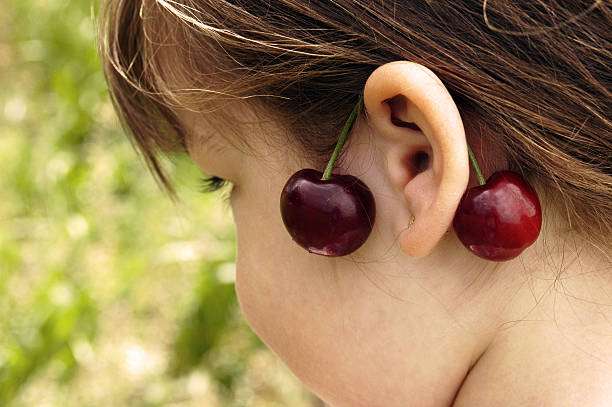
| Author Notes |
Modern Tanka is a Japanese short free verse poem written in 5 lines and 31 syllables OR LESS. This tanka has 4/5/5/7/6 = 27 syllables. If you want to read more, please check the rules and source links below.
MODERN TANKA is a Japanese poetic form. The form was created 1,200 years ago. It used to be written between lovers but now you can write about anything you want. Like haiku, it's written in a concise manner in 31 syllables (5/7/5/7/7) OR LESS. Personification, metaphor, and simile are permitted in Tanka. Capitalization and punctuation should only be used when necessary. No end rhymes. ==================================================== click here if you want to read modern tanka examples ==================================================== click here to read Tanka Society of America ==================================================== click here if you want to read modern tanka rules Thank you very much for your time and kind review. Gypsy "The poet waits quietly to paint the unsaid." --Atticus |
![]()
By Gypsy Blue Rose

| Author Note: | For Rules, Please Read My Author Notes |
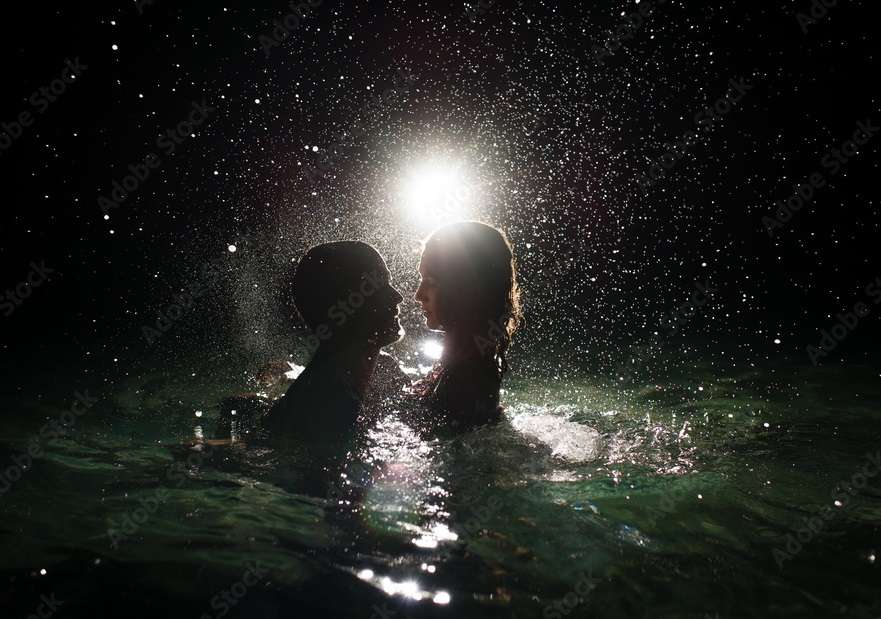
| Author Notes |
Strawberry moon happens in June.
I'm inspired by Japanese women poets. Tanka Poems are written primarily by women. One of them was, Yosano Akiko. Besides writing tanka, she was also an essayist, autobiographer, and novelist. Her first tanka collection was called -Tangled Hair -. She wrote prolifically to help support her family. (She gave birth to 13 children, 11 of whom survived to adulthood.) A prominent pacifist and feminist. She later founded a women's college, in 1921, and advocated for women's rights and education. She was a socialist sympathizer, and openly opposed the war in the twentieth century. for more information click here TANKA is a Japanese poetic form that originated in Japan's Imperial Court, where the men and women engaged in courtship would exchange tanka after an intimate night. This poetic form was created 1,200 years ago. FORM: It's written in a concise manner of 31 syllables (5/7/5/7/7) OR LESS because Japanese and English syllables are different. Personification, metaphor, and simile are permitted in Tanka. Capitalization and punctuation should only be used when necessary and it never rhymes. ============================================================================== click here if you want to see tanka rules ============================================================================== click here if you want to see modern tanka examples ============================================================================== click here to read Tanka Society of America ============================================================================== click here to read why is 5/7/5 OR LESS rule ============================================================================== click here to read Masterpiece Classes ============================================================================== Thank you very much for taking the time to read and review my poem. Gypsy Hand over the chocolate and nobody gets hurt. |
![]()
By Gypsy Blue Rose

| Author Note: | For Rules, Please Read My Author Notes |
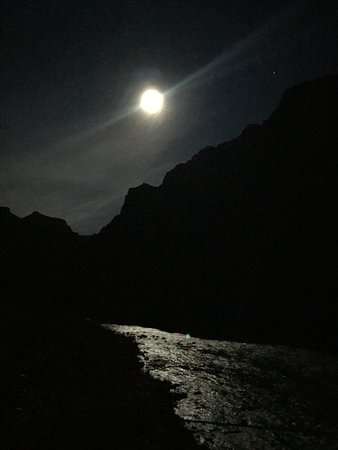
| Author Notes |
TANKA is a Japanese poetic form that originated in Japan's Imperial Court, where the men and women engaged in courtship would exchange tanka after an intimate night. This poetic form was created 1,200 years ago.
FORM: It's written in a concise manner of 31 syllables (5/7/5/7/7) OR LESS because Japanese and English syllables are different. Personification, metaphor, and simile are permitted in Tanka. Capitalization and punctuation should only be used when necessary and it never rhymes. ============================================================================== click here if you want to see tanka rules ============================================================================== click here if you want to see modern tanka examples ============================================================================== click here to read Tanka Society of America ============================================================================== click here to read why is 5/7/5 OR LESS rule ============================================================================== click here to read Masterpiece Classes ============================================================================== Thank you very much for taking the time to read and review my poem. Gypsy "The poet waits quietly to paint the unsaid." Atticus |
![]()
By Gypsy Blue Rose

| Author Note: | For Rules, Please Read My Author Notes |

| Author Notes |
Clandestine = executed with secrecy or concealment
TANKA is a Japanese poetic form that originated in Japan's Imperial Court, where the men and women engaged in courtship would exchange tanka after an intimate night. This poetic form was created 1,200 years ago. FORM: It's written in a concise manner of 31 syllables (5/7/5/7/7) OR LESS because Japanese and English syllables are different. Personification, metaphor, and simile are permitted in Tanka. Capitalization and punctuation should only be used when necessary and it never rhymes. ============================================================================== click here if you want to see tanka rules ============================================================================== click here if you want to see modern tanka examples ============================================================================== click here to read Tanka Society of America ============================================================================== click here to read why is 5/7/5 OR LESS rule ============================================================================== click here to read Masterpiece Classes ============================================================================== Thank you very much for taking the time to read and review my poem. Gypsy "The poet waits quietly to paint the unsaid." Atticus 6gh |
![]()
By Gypsy Blue Rose

| Author Note: | For Rules, Please Read My Author Notes |
| Author Notes |
4/8/3/8/8 = 31 syllables *** picture from google public domain
TANKA is a Japanese poetic form that originated in Japan's Imperial Court, where the men and women engaged in courtship would exchange tanka after an intimate night. This poetic form was created 1,200 years ago. FORM: It's written in a concise manner of 31 syllables (5/7/5/7/7) OR LESS because Japanese and English syllables are different. Personification, metaphor, and simile are permitted in Tanka. Capitalization and punctuation should only be used when necessary and it never rhymes. ============================================================================== click here if you want to see tanka rules ============================================================================== click here if you want to see modern tanka examples ============================================================================== click here to read Tanka Society of America ============================================================================== click here to read why is 5/7/5 OR LESS rule ============================================================================== click here to read Masterpiece Classes ============================================================================== Thank you very much for taking the time to read and review my poem. Gypsy "The poet waits quietly to paint the unsaid." Atticus |
![]()
By Gypsy Blue Rose

| Author Note: | If You Would Like To Join the Japanese Poetry Club, please check my author notes |
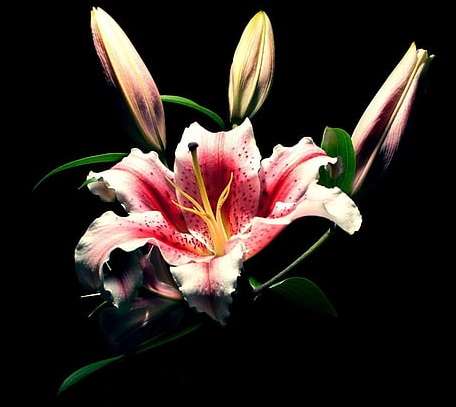
| Author Notes |
5/6/7/7/5 = 30 syllables
Stargazer lily is part of an oriental group of lilies. They are known for their fragrant perfume. They bloom mid-to-late summer. Heavy flowers bow pointed down to the ground. MANYOSHU is the oldest poem collection in Japan in the 8th century. FORM = written in 5 lines with 31 syllables or less. They are dedicated to a loved one ( romantic, missing, losing, or deeply depressed.) ============================================================================== to read more, click here ============================================================================== to see examples, click here Gypsy hugs "Love the ones who understand you and forget the ones that don't." - Nikki Rowe |
![]()
By Gypsy Blue Rose

| Author Note: | If You Would Like To Join the Japanese Poetry Club, please check my author notes |
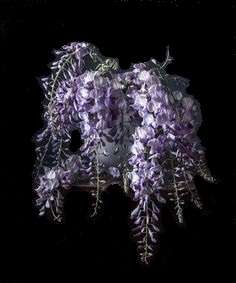
| Author Notes |
Capricious = unpredictable
MANYOSHU is the oldest poem collection in Japan in the 8th century. FORM = written in 5 lines with 31 syllables or less. They are dedicated to a loved one ( romantic, missing, losing, or deeply depressed.) ============================================================================== to read more, click here ============================================================================== to see examples, click here Gypsy hugs "Love the ones who understand you and forget the ones that don't." - Nikki Rowe |
![]()
By Gypsy Blue Rose

| Author Note: | For Rules, Please Read My Author Notes |
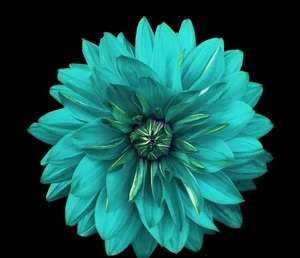
| Author Notes |
Celeste is a shade of blue; in Latin means 'heavenly'
TANKA is a Japanese poetic form that originated in Japan's Imperial Court, where the men and women engaged in courtship would exchange tanka after an intimate night. This poetic form was created 1,200 years ago. FORM: It's written in a concise manner of 31 syllables (5/7/5/7/7) OR LESS because Japanese and English syllables are different. Personification, metaphor, and simile are permitted in Tanka. Capitalization and punctuation should only be used when necessary and it never rhymes. ============================================================================== click here if you want to see tanka rules ============================================================================== click here if you want to see modern tanka examples ============================================================================== click here to read Tanka Society of America ============================================================================== click here to read why is 5/7/5 OR LESS rule ============================================================================== click here to read Masterpiece Classes ============================================================================== Thank you very much for taking the time to read and review my poem. Gypsy Word Weaver stitching a quilt of joy, laughter, and tears |
![]()
By Gypsy Blue Rose

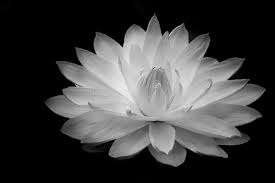
| Author Notes |
The new moon in June is known in some cultures as 'The Lotus Moon'
Tanka is mostly written by women. These poetesses inspire me to write tanka poems: Ono no Komachi ( 825 - 900) was a Japanese tanka poet, one of the six best poets of the early Heian period. She was renowned for her unusual beauty. Wikipedia Izumi Shikibu ( born in 976 ) is a member of the Thirty-six Medieval Poetry Immortals. She "is considered the greatest woman poet of the Heian period. Wikipedia Murasaki Shikibu "Lady Murasaki"; (973 -1025) was a Japanese poet and lady-in-waiting at the Imperial court. She is widely considered to be one of the world's first novels, written in Japanese between about 1000 and 1012. Wikipedia Yosano Akiko (1878 - 1942) was a Japanese poet, pioneering feminist, pacifist, and social reformer, She is one of the most noted, and most controversial, post-classical woman poets of Japan. Wikipedia TANKA is a Japanese poetic form that originated in Japan's Imperial Court, where the men and women engaged in courtship would exchange tanka after an intimate night. This poetic form was created 1,200 years ago. FORM: It's written in a concise manner of 31 syllables (5/7/5/7/7) OR LESS because Japanese and English syllables are different. Personification, metaphor, and simile are permitted in Tanka. Capitalization and punctuation should only be used when necessary and it never rhymes. click here if you want to see tanka rules - click here if you want to see modern tanka examples - click here to read Tanka Society of America Thank you very much for taking the time to read and review my poem. Gypsy Word Weaver |
![]()
By Gypsy Blue Rose

| Author Note: | For Rules, Please Read My Author Notes |

| Author Notes |
TANKA is a Japanese poetic form that originated in Japan's Imperial Court, where the men and women engaged in courtship would exchange tanka after an intimate night. This poetic form was created 1,200 years ago. FORM: It's written in a concise manner of 31 syllables (5/7/5/7/7) OR LESS because Japanese and English syllables are different. Personification, metaphor, and simile are permitted in Tanka. Capitalization and punctuation should only be used when necessary and it never rhymes. click here if you want to see tanka rules - click here if you want to see modern tanka examples - click here to read Tanka Society of America
Thank you very much for taking the time to read and review my poem. Gypsy Word Weaver Art is the language of the soul picture from google public domain |
![]()
By Gypsy Blue Rose

| Author Note: | For Rules, Please Read My Author Notes |

| Author Notes |
The phrase, "of the soul's dark night" is used to describe an extremely difficult and painful period in one's life, for example, after the death of a loved one; the break-up of a marriage; or the diagnosis of a life-threatening illness.
TANKA is a Japanese poetic form that originated in Japan's Imperial Court, where the men and women engaged in courtship would exchange tanka after an intimate night. This poetic form was created 1,200 years ago. FORM: It's written in a concise manner of 31 syllables (5/7/5/7/7) OR LESS because Japanese and English syllables are different. Personification, metaphor, and simile are permitted in Tanka. Capitalization and punctuation should only be used when necessary and it never rhymes. click here if you want to see tanka rules - click here if you want to see modern tanka examples - click here to read Tanka Society of America Thank you very much for taking the time to read and review my poem. Gypsy Word Weaver |
![]()
By Gypsy Blue Rose

| Author Note: | For Rules, Please Read My Author Notes |

| Author Notes |
TANKA is a Japanese poetic form that originated in Japan's Imperial Court, where the men and women engaged in courtship would exchange tanka after an intimate night. This poetic form was created 1,200 years ago. FORM: It's written in a concise manner of 31 syllables (5/7/5/7/7) OR LESS because Japanese and English syllables are different. Personification, metaphor, and simile are permitted in Tanka. Capitalization and punctuation should only be used when necessary and it never rhymes. click here if you want to see tanka rules - click here if you want to see modern tanka examples - click here to read Tanka Society of America
Thank you very much for taking the time to read and review my poem. Gypsy Word Weaver Tanka is mostly written by women. These poetesses inspire me to write tanka poems. Ono no Komachi ( 825 - 900) was a Japanese tanka poet, one of the six best poets of the early Heian period. She was renowned for her unusual beauty. Wikipedia Izumi Shikibu ( born in 976 ) is a member of the Thirty-six Medieval Poetry Immortals. She "is considered the greatest woman poet of the Heian period. Murasaki Shikibu "Lady Murasaki"; (973 - 1025) was a Japanese poet and lady-in-waiting at the Imperial court. She is widely considered to be one of the world's first novels, written in Japanese between about 1000 and 1012. Wikipedia Yosano Akiko (1878 - 1942) was a Japanese poet, pioneering feminist, pacifist, and social reformer, She is one of the most noted, and most controversial, post-classical woman poets of Japan. Wikipedia pictures from google public domain |
![]()
By Gypsy Blue Rose

| Author Note: | For Rules, Please Read My Author Notes |

| Author Notes |
TANKA is a Japanese poetic form that originated in Japan's Imperial Court, where the men and women engaged in courtship would exchange tanka after an intimate night. This poetic form was created 1,200 years ago. FORM: It's written in a concise manner of 31 syllables (5/7/5/7/7) OR LESS because Japanese and English syllables are different. Personification, metaphor, and simile are permitted in Tanka. Capitalization and punctuation should only be used when necessary and it never rhymes. click here if you want to see tanka rules - click here if you want to see modern tanka examples - click here to read Tanka Society of America
Thank you very much for taking the time to read and review my poem. Gypsy Word Weaver |
![]()
By Gypsy Blue Rose

| Author Note: | For Rules, Please Read My Author Notes |
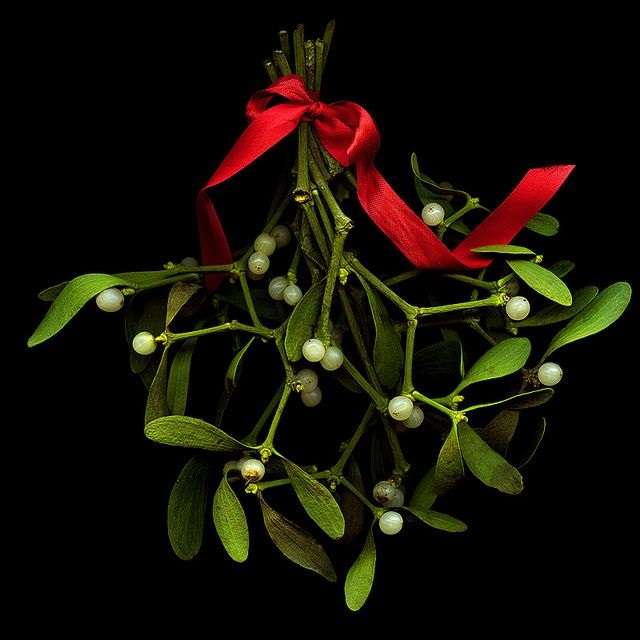
| Author Notes |
TANKA is a Japanese poetic form that originated in Japan's Imperial Court, where the men and women engaged in courtship would exchange tanka after an intimate night. This poetic form was created 1,200 years ago. FORM: It's written in a concise manner of 31 syllables (5/7/5/7/7) OR LESS because Japanese and English syllables are different. Personification, metaphor, and simile are permitted in Tanka. Capitalization and punctuation should only be used when necessary and it never rhymes. click here if you want to see tanka rules - click here if you want to see modern tanka examples - click here to read Tanka Society of America
Thank you very much for taking the time to read and review my poem. Gypsy The poet waits quietly to paint the unsaid. Atticus |
![]()
By Gypsy Blue Rose

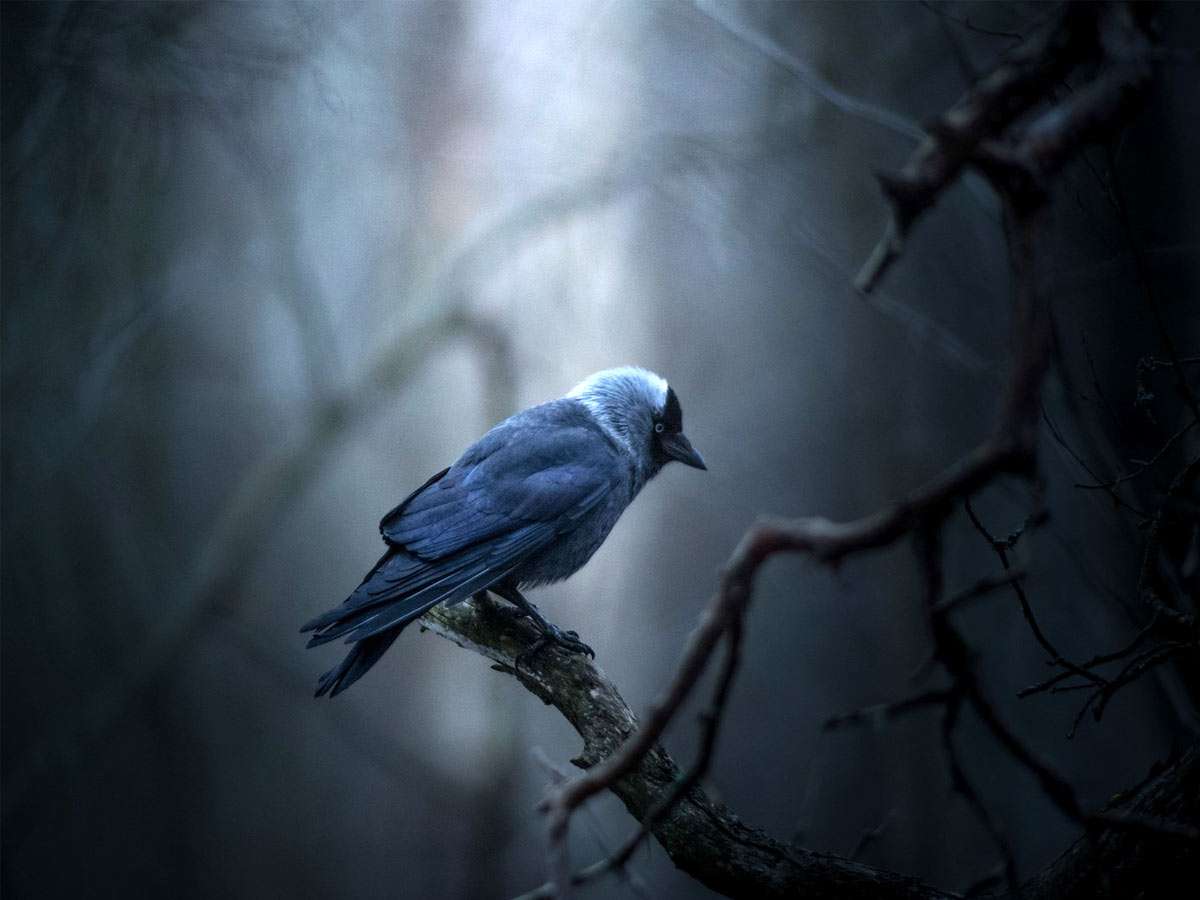
| Author Notes |
Juliet: "Believe me, love, it was the nightingale."
Romeo: "It was the lark, the herald of the morn". TANKA is a Japanese poetic form that originated in Japan's Imperial Court, where the men and women engaged in courtship would exchange tanka after an intimate night. This poetic form was created 1,200 years ago. FORM: It's written in a concise manner of 31 syllables (5/7/5/7/7) OR LESS because Japanese and English syllables are different. Personification, metaphor, and simile are permitted in Tanka. Capitalization and punctuation should only be used when necessary and it never rhymes. click here if you want to see tanka rules - click here if you want to see modern tanka examples - click here to read Tanka Society of America Picture Chie Yoshii Click here if you want to see Chie Yoshii art collection Thank you very much for taking the time to read and review my poem. Gypsy Word Weaver ============================================== Tanka is mostly written by women. These poetesses inspire me to write tanka poems. Ono no Komachi ( 825 √????√???√??√?¬¢?? 900) was a Japanese tanka poet, one of the six best poets of the early Heian period. She was renowned for her unusual beauty. Wikipedia Izumi Shikibu ( born in 976 ) is a member of the Thirty-six Medieval Poetry Immortals. She "is considered the greatest woman poet of the Heian period. Murasaki Shikibu "Lady Murasaki"; (.√????√???√??√?¬¢??973 √????√???√??√?¬¢?? 1025) was a Japanese poet and lady-in-waiting at the Imperial court. She is widely considered to be one of the world's first novels, written in Japanese between about 1000 and 1012. Wikipedia Yosano Akiko (1878 √????√???√??√?¬¢?? 1942) was a Japanese poet, pioneering feminist, pacifist, and social reformer, She is one of the most noted, and most controversial, post-classical woman poets of Japan. Wikipedia |
![]()
By Gypsy Blue Rose

| Author Note: | If You Would Like To Join the Japanese Poetry Club, please check my author notes |

| Author Notes |
GOGYOHKA is a five line free-style Japanese poetic form with no strict rules on syllables count but as brief as possible. Any theme. Lines are grammatically connected. Alliteration, personification, and metaphor are okay but never rhyme. Japanese poets have written gogyohka since the 1910s. However, they did not name the form until 1983 by poet Enta Kusakabe. wikipedia
for more info click here Thank you, my friend, you are a wonderful reviewer. I appreciate that you took the time to read and review my poem. Have a great day, Gypsy Word Weaver Art is the language of the heart |
![]()
By Gypsy Blue Rose

| Author Note: | for Dean Kuch |
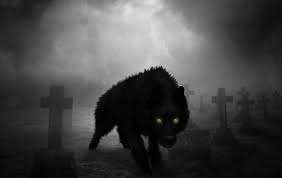
| Author Notes |
-The Grim = is an omen of death, a shape-shifting black dog in the 17th-century.
-The Danse Macabre is a strange tradition from the Late Middle Ages. Artists depicted people dancing with decaying corpses and skeletons, to express their fascination with death. GOGYOHKA is a five line free-style Japanese poetic form with no strict rules on syllables count but as brief as possible. Any theme. Lines are grammatically connected. Alliteration, personification, metaphor are okay but never rhymes. Japanese poets have written gogyohka since the 1910s. However, they did not name the form until 1983 by poet Enta Kusakabe. wikipedia for more info click here Thank you very much for taking the time to read and review my poem. Gypsy Word Weaver |
![]()
By Gypsy Blue Rose

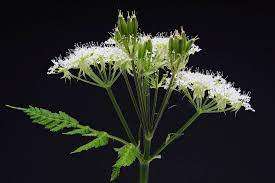
| Author Notes |
Mountain Sweet Cicely is a flowering plant native to western North America‚??s forested areas. Many Native American groups used this plant for a great variety of medicinal purposes.
MODERN TANKA is a Japanese poetic form created 1,200 years ago. FORM: It's written in a concise manner of 31 syllables (5/7/5/7/7) OR LESS because Japanese and English syllables are different thank English syllables. Personification, metaphor, and simile are permitted in Tanka. Capitalization and punctuation should only be used when necessary and it never rhymes. click here if you want to see tanka rules - click here if you want to see modern tanka examples - click here to read Tanka Society of America Thank you very much for taking the time to read and review my poem. Gypsy Word Weaver |
![]()
By Gypsy Blue Rose

| Author Note: | If You Would Like To Join the Japanese Poetry Club, please check my author notes |

| Author Notes |
GOGYOHKA is a five-line free-style Japanese poetic form with no strict rules on syllables count but as brief as possible. Any theme. Lines are grammatically connected. Alliteration, personification, and metaphor are okay but it never rhymes. Japanese poets have written gogyohka since the 1910s. However, they did not name the form until 1983 by poet Enta Kusakabe. wikipedia
for more info click here Thank you for reading my poem, Gypsy Word Weaver |
![]()
By Gypsy Blue Rose

| Author Note: | For Rules, Please Read My Author Notes |
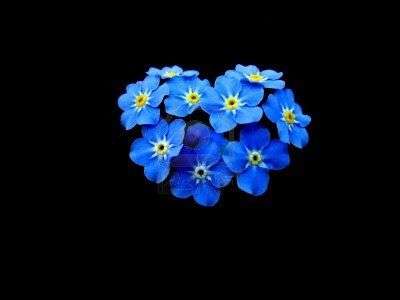
| Author Notes |
The title is inspired by Gaea, the Earth Goddess, but is not necessarily what the poem is about.
TANKA is a Japanese poetic form that originated in Japan's Imperial Court, where the men and women engaged in courtship would exchange tanka after an intimate night. This poetic form was created 1,200 years ago. FORM: It's written in a concise manner of 31 syllables (5/7/5/7/7) OR LESS because Japanese and English syllables are different. Personification, metaphor, and simile are permitted in Tanka. Capitalization and punctuation should only be used when necessary and it never rhymes. click here if you want to see tanka rules - click here if you want to see modern tanka examples - click here to read Tanka Society of America Thank you very much for taking the time to read and review my poem. Gypsy Word Weaver ============================================== TANKA is mostly written by women. These poetesses, among others, inspire me to write tanka poems. Ono no Komachi ( 825 - 900) was a Japanese tanka poet, one of the six best poets of the early Heian period. She was renowned for her unusual beauty. Wikipedia Izumi Shikibu ( born in 976 ) is a member of the Thirty-six Medieval Poetry Immortals. She "is considered the greatest woman poet of the Heian period. Murasaki Shikibu "Lady Murasaki"; (973 - 1025) was a Japanese poet and lady-in-waiting at the Imperial court. She is widely considered to be one of the world's first novels, written in Japanese between about 1000 and 1012. Wikipedia Yosano Akiko (1878 -1942) was a Japanese poet, pioneering feminist, pacifist, and social reformer, She is one of the most noted, and most controversial, post-classical woman poets of Japan. Wikipedia |
![]()
By Gypsy Blue Rose



| Author Notes |
Fiction
Loons make a mournful sound. When darkness falls, Loons make wolf-like wails that are haunting GOGYOHKA is a five-line free-style Japanese poetic form with no strict rules on syllables count but as brief as possible. Any theme. Lines are grammatically connected. Alliteration, personification, and metaphor are okay but never rhyme. Japanese poets have written gogyohka since the 1910s. However, they did not name the form until 1983 by poet Enta Kusakabe. wikipediafor more info click here Thank you for taking the time to read and review my poem. Gypsy Word Weaver "Ever has it been that love knows not its own depth until the hour of separation." - Kahlil Gibran |
![]()
By Gypsy Blue Rose

| Author Note: | For Rules, Please Read My Author Notes |


| Author Notes |
TANKA is a Japanese poetic form that originated in Japan's Imperial Court, where the men and women engaged in courtship would exchange tanka after an intimate night. This poetic form was created 1,200 years ago. FORM: It's written in a concise manner of 31 syllables (5/7/5/7/7) OR LESS because Japanese and English syllables are different. Personification, metaphor, and simile are permitted in Tanka. Capitalization and punctuation should only be used when necessary and it never rhymes. click here if you want to see tanka rules - click here if you want to see modern tanka examples - click here to read Tanka Society of America
Thank you very much for taking the time to read and review my poem. Gypsy Word Weaver ============================================== WOMEN TANKA was primarily written by women. These poetesses inspire me to write tanka poems. Ono no Komachi ( 825 - 900) was a Japanese tanka poet, one of the six best poets of the early Heian period. She was renowned for her unusual beauty. Wikipedia Izumi Shikibu ( born in 976 ) is a member of the Thirty-six Medieval Poetry Immortals. She "is considered the greatest woman poet of the Heian period. Murasaki Shikibu "Lady Murasaki"; (973 -1025) was a Japanese poet and lady-in-waiting at the Imperial court. She is widely considered one of the world's first novels, written in Japanese between about 1000 and 1012. Wikipedia Yosano Akiko (1878 - 1942) was a Japanese poet, pioneering feminist, pacifist, and social reformer, She is one of the most noted, and most controversial, post-classical woman poets of Japan. Wikipedia |
![]()
By Gypsy Blue Rose

| Author Note: | For Rules, Please Read My Author Notes |
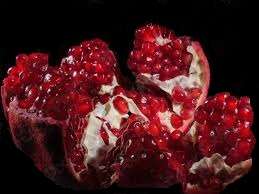
| Author Notes |
PERSEPHONE is a character in a Greek myth. In reality, it would be a horror story about a kidnapping, an incestual relationship, and statutory rape. The story is about a girl kidnapped by her uncle and taken to hell. He was 2000 years old and she was 19 years old.
Persephone's Greek Myth: Persephone, is the daughter of Zeus and Demeter. She became the queen of the underworld after her abduction by her uncle Hades, the king of the underworld. She missed her mother, Demeter, Goddess of Nature and the Seasons. Hades was in-love with Persophony and to make her happy, he allowed her to go back to the surface to visit Demeter six months out of the year. In time, Persephone came to love Hades. The myth of taking her to the underworld and temporarily returning her to the surface represents the embodiment of spring and her return to the underworld represents winter. In Classical Greek art, Persephone is invariably portrayed as robed, often carrying a pomegranate. Painting by Chie Yoshii TANKA is a Japanese poetic form that originated in Japan's Imperial Court, where the men and women engaged in courtship would exchange tanka after an intimate night. This poetic form was created 1,200 years ago. FORM: It's written in a concise manner of 31 syllables (5/7/5/7/7) OR LESS because Japanese and English syllables are different. Personification, metaphor, and simile are permitted in Tanka. Capitalization and punctuation should only be used when necessary and it never rhymes. click here if you want to see tanka rules - click here if you want to see modern tanka examples - click here to read Tanka Society of America Thank you very much for taking the time to read and review my poem. Gypsy Word Weaver "Every sunset brings the promise of a new dawn." - Ralph Waldo Emerson |
![]()
By Gypsy Blue Rose

On dragon wings
dreams travel to faraway lands
where a myriad of stars
in winter skies
dance in her eyes
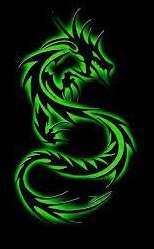
| Author Notes |
Myriad is a very great or indefinitely great number of persons or things.
GOGYOHKA is a five-line free-style Japanese poetic form with no strict rules on syllables count but as brief as possible. Any theme. Lines are grammatically connected. Alliteration, personification, and metaphor are okay but never rhyme. Japanese poets have written gogyohka since the 1910s. However, they did not name the form until 1983 by poet Enta Kusakabe. wikipediafor more info click here Thank you for taking the time to read and review my poem. Gypsy Word Weaver "Ever has it been that love knows not its own depth until the hour of separation." - Kahlil Gibran |
![]()
By Gypsy Blue Rose

| Author Notes |
Ambiguity = doubtfulness or uncertainty of meaning or intention:
Ebbing tide = is the tidal phase during which the tidal current is flowing seaward TANKA is a romantic Japanese poetic form that originated in the Japanese Imperial Court, where men and women engaged in courtship would exchange tanka. The form was created 1,200 years ago. Like haiku, it's written in a succinct manner in 31 syllables (5/7/5/7/7) OR LESS in a short/long/short/long/long format because Japanese and English syllables are different. Personification, metaphor, simile are permitted in Tanka. Capitalization and punctuation should only be used when necessary. No end rhymes. click here if you want to see tanka rules -- click here if you want to see modern tanka examples -- click here if you want to read free online tanka book -- click here to read Tanka Society of America *If you would like to join the Japanese Club, please click here and look for the Japanese club* RESERVE A SPOT /SUBMIT YOUR ENTRY Thank you very much for taking the time to read and review my poem. Gypsy |
![]()
By Gypsy Blue Rose

| Author Note: | for rules and information, please check my author notes |
| Author Notes |
Tanka is one of the oldest types of Japanese poetry. It begun in the Emperial Court, where lovers exchanged a tanka after a night of lovemaking.
Tanka in Japan, is 31 syllables in a 5/7/5/7/7 form, but in English is 31 syllables OR LESS format. For examples click here Thank you very much for taking the time to read and review my poem. Gypsy Sensei Word Weaver |
![]()
By Gypsy Blue Rose

| Author Note: | for rules and information, please check my author notes |
| Author Notes |
Mount Love is a real mountain close to my home in southern California.
Tanka is one of the oldest types of Japanese poetry. It begun in the Emperial Court, where lovers exchanged a tanka after a night of lovemaking. Tanka in Japan, is 31 syllables in a 5/7/5/7/7 form, but in English is 31 syllables OR LESS in a short/long/short/long/long format. For examples click here Thank you very much for taking the time to read and review my poem. Gypsy Sensei Word Weaver |
![]()
By Gypsy Blue Rose

| Author Note: | for rules and information, please check my author notes |
| Author Notes |
Tanka is one of the oldest types of Japanese poetry. It begun in the Emperial Court, where lovers exchanged a tanka after a night of lovemaking. Modern tanka can be any subject.
Tanka in Japan, is 31 syllables in a 5/7/5/7/7 form, but in English is 31 syllables OR LESS in a short/long/short/long/long format. For examples click here |
![]()
By Gypsy Blue Rose

| Author Notes |
Manic nights reference is about my bipolar manic episodes.
Metaphor of Silk cocoon and butterflies symbol of change Caterpillars move in a wave motion I liked the imagery Tanka is one of the oldest types of Japanese poetry. It begun in the Emperial Court, where lovers exchanged a tanka after a night of lovemaking. Tanka in Japan, is 31 syllables in a 5/7/5/7/7 form, but in English is 31 syllables OR LESS in a short/long/short/long/long format. For examples click here Thank you very much for taking the time to read and review my poem. Gypsy Sensei "The poet waits quietly to paint the unsaid." - Atticus |
![]()
By Gypsy Blue Rose

| Author Note: | for rules and information, please check my author notes |
| Author Notes |
Tanka is one of the oldest types of Japanese poetry.
Tanka in Japan, is 31 syllables in a 5/7/5/7/7 form, but in English is 31 syllables OR LESS format. For examples click here Thank you very much for taking the time to read and review my poem. Gypsy Sensei |
![]()
By Gypsy Blue Rose

| Author Note: | for rules and information, please check my author notes |
| Author Notes |
Tanka is one of the oldest types of Japanese poetry. It begun in the Emperial Court, where lovers exchanged a tanka after a night of lovemaking.
Tanka in Japan, is 31 syllables in a 5/7/5/7/7 form, but in English is 31 syllables OR LESS in a short/long/short/long/long format. For examples click here Thank you very much for taking the time to read and review my poem. Gypsy Sensei, Word Weaver |
![]()
By Gypsy Blue Rose

| Author Note: | for rules and information, please check my author notes |
| Author Notes |
Gorge is a narrow valley between mountains, with steep rocky walls and a stream running through it.
Tanka is one of the oldest types of Japanese poetry. It begun in the Emperial Court, where lovers exchanged a tanka after a night of lovemaking. Tanka in Japan, is 31 syllables in a 5/7/5/7/7 form, but in English is 31 syllables OR LESS For examples click here Thank you very much for taking the time to read and review my poem. Gypsy "Poetry heals the wounds inflicted by reason" -- Novalis Picture is the Grand Canyon National Park, Utah |
![]()
By Gypsy Blue Rose

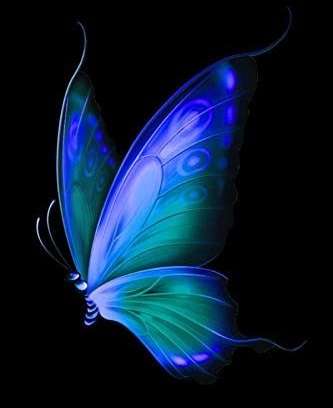
| Author Notes |
MODERN TANKA is a Japanese poetic form. The form was created 1,200 years ago. It used to be written between lovers but now you can write about anything you want. Like haiku, it's written in a succinct manner in 31 syllables (5/7/5/7/7) OR LESS. Personification, metaphor, and simile are permitted in Tanka. Capitalization and punctuation should only be used when necessary. No end rhymes. click here if you want to see modern tanka examples -- click here if you want to read free online tanka book -- click here to read Tanka Society of America
Thank you very much for your time and kind review. Gypsy "The poet waits quietly to paint the unsaid." --Atticus |
![]()
By Gypsy Blue Rose

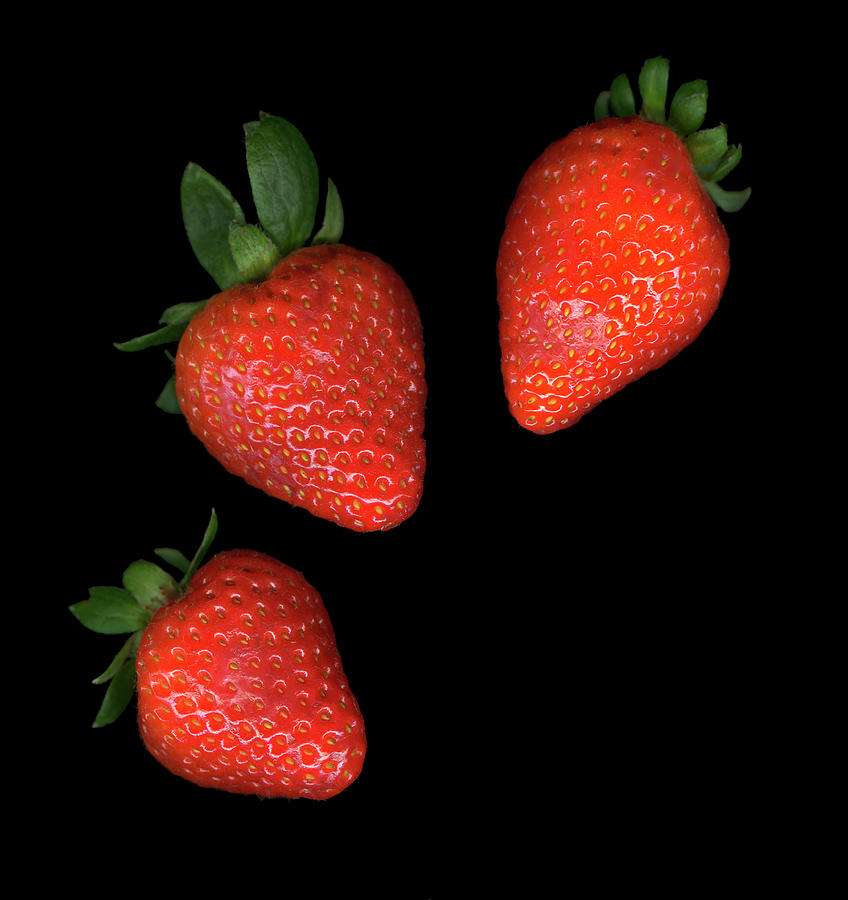
| Author Notes |
Pulp is the major raw material used in papermaking; handmade paper is thicker than normal with the pulp more visible; you can add any color you want.
MODERN TANKA is a Japanese poetic form written in 31 syllables or less. The Japanese form is 5/7/5/7/7 but in English it's usually shorter than that due to the difference in Japanese and English syllables. The form was created 1,300 years ago in the Imperial Court where lovers would exchange tanka after a night together. With modern tanka you can write about any subject you chose. You may use poetic devices: personification, metaphor, alliteration, and simile are permitted in Tanka. Keep capitalization and punctuation to a minimum. No end rhymes. === click here if you want to read modern tanka examples === click here to read Tanka Society of America === click here if you want to read modern tanka rules Thank you very much for your time and kind review. Gypsy "The poet waits quietly to paint the unsaid." --Atticus |
![]()
By Gypsy Blue Rose

| Author Note: | For Rules, Please Read My Author Notes |

| Author Notes |
In the last line, "I" means a woman (an observer). She waits for love (mate) with the crane.
Cranes are solitary birds during the breeding season but during the non-breeding season, most species are gregarious, forming large flocks. Cranes give loud, rattling bugle calls. They also give moans, hisses, gooselike honks, and snoring sounds. MODERN TANKA is a Japanese poetic form written in 31 syllables or less. The Japanese form is 5/7/5/7/7 but in English it√???√??√?¬¢??s usually shorter than that due to the difference in Japanese and English syllables. The form was created 1,300 years ago in the Imperial Court where lovers would exchange tanka after a night together. With modern tanka you can write about any subject you chose. You may use poetic devices: personification, metaphor, alliteration, and simile are permitted in Tanka. Keep capitalization and punctuation to a minimum. No end rhymes. === click here if you want to read modern tanka examples === click here to read Tanka Society of America === click here if you want to read modern tanka rules Thank you very much for your time and kind review. Gypsy "The poet waits quietly to paint the unsaid." --Atticus |
![]()
By Gypsy Blue Rose

| Author Note: | For Rules, Please Read My Author Notes |
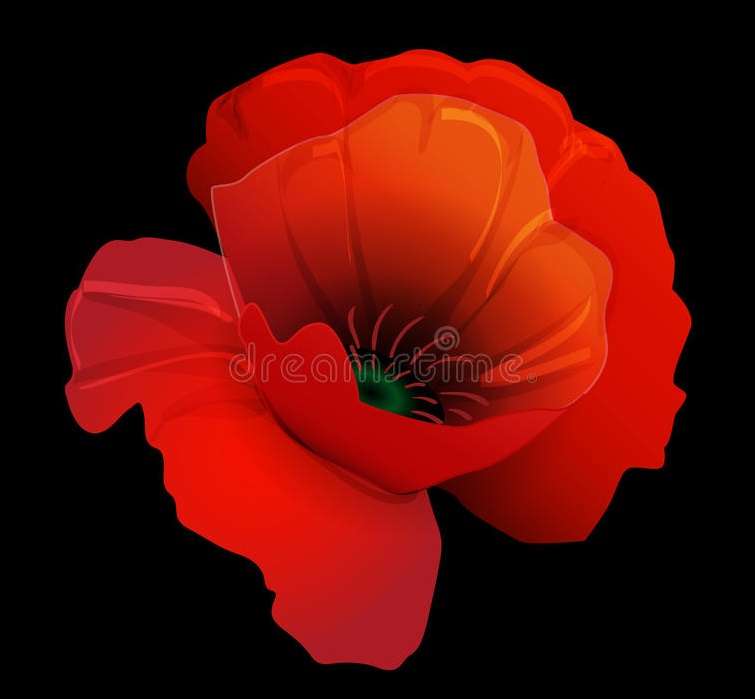
| Author Notes |
I grew up in Spain and moved to America on my 16th birthday. As a child, I dreamed about moving to California, where my aunt lived.
TANKA is a Japanese poetic form written in 31 syllables or less. The Japanese form is 5/7/5/7/7 but in English, it's usually shorter than that due to the difference in Japanese and English syllables. The form was created 1,300 years ago in the Imperial Court where lovers would exchange tanka after a night together. With tanka, you can write about any subject you chose. You may use poetic devices: personification, metaphor, alliteration, and simile are permitted in Tanka. Keep capitalization and punctuation to a minimum. No end rhymes. === click here if you want to read modern tanka examples === click here to read Tanka Society of America === click here if you want to read modern tanka rules Thank you very much for your time and kind review. Gypsy "The poet waits quietly to paint the unsaid." --Atticus |
![]()
By Gypsy Blue Rose

| Author Note: | For the Temptation Contest |

| Author Notes |
MODERN TANKA is a Japanese poetic form written in 31 syllables or less. The Japanese form is 5/7/5/7/7 but in English it's usually shorter than that due to the difference in Japanese and English syllables. The form was created 1,300 years ago in the Imperial Court where lovers would exchange tanka after a night together. With modern tanka you can write about any subject you chose. You may use poetic devices: personification, metaphor, alliteration, and simile are permitted in Tanka. Keep capitalization and punctuation to a minimum. No end rhymes. === click here if you want to read modern tanka examples === click here to read Tanka Society of America === click here if you want to read modern tanka rules
Thank you very much for your time and kind review. Gypsy "The poet waits quietly to paint the unsaid." --Atticus |
![]()
By Gypsy Blue Rose

I’m carried away
tangled in a southern wind
hoping to reach you
as you awake with the sun
and I'm still wrapped in the night
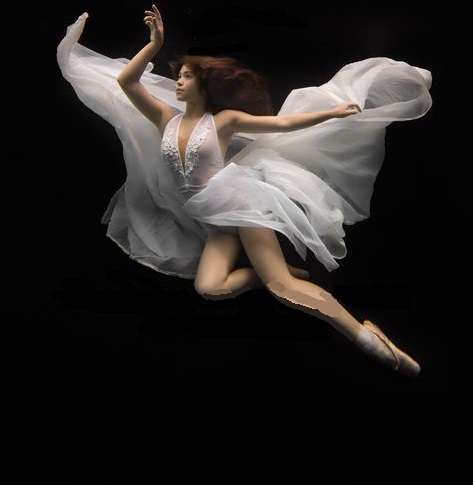
| Author Notes |
Tanka (which means short poetry) originated 1300 years ago in Japan's Imperial Court where lovers exchanged tanka after a night together. Tanka evokes vivid imagery and reflection for the reader. They are free verse without meter and rhyme. They follow a 5 lines pattern of 5/7/5/7/7 (31) syllables in Japanese and 31 syllables or LESS in the English language. The goal, as with most Japanese poetry, is to write as succinctly as possible. Usually, the third line must transition from the descriptive and image-focused beginning lines into a reflective last two lines, using metaphor, simile, or personification. The subject matter can vary, but many poets choose a subject that's emotionally stirring or quietly profound. Traditionally, tanka has addressed a limited number of themes -seasons, love, travel, and death; but contemporary tanka tackles a much wider range of topics. Tanka is usually written in the first-person narrator's point of view. Moreover, in most cases, the "I" in the text closely resembles the poet's private life. click here if you want to read modern tanka examples === click here to read Tanka Society of America === click here if you want to read modern tanka rules Thank you very much for your time and kind review. Gypsy "The poet waits quietly to paint the unsaid." --Atticus |
![]()
By Gypsy Blue Rose

| Author Note: | For Rules, Please Read My Author Notes |
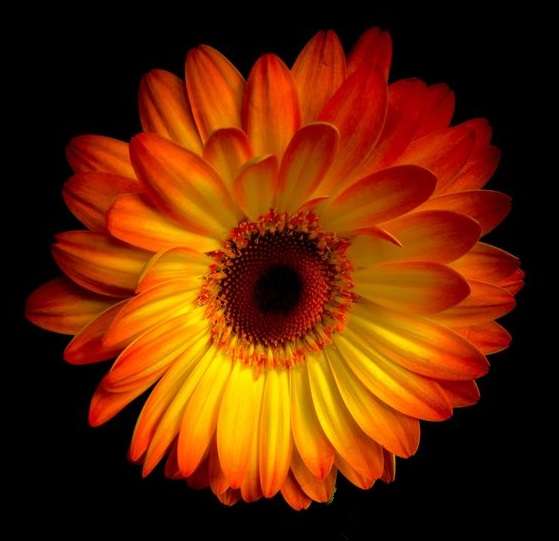
| Author Notes |
Tanka (means short poetry) originated 1300 years ago in Japan's Imperial Court where lovers exchanged tanka after a night together. Tanka evokes vivid imagery and reflection for the reader. They are free verse without meter or rhyme. They follow a 5 lines pattern of 5/7/5/7/7 (31) syllables or LESS because English syllables are different than Japanese syllables. The goal, as with most Japanese poetry, is to write as succinctly as possible. Tanka transitions from the descriptive top two lines into the reflective bottom three lines, using metaphor, simile, or personification. Modern Tanka rules are not as strict. The subject matter can vary, but most tanka are emotionally stirring or profound, and many are about love. Tanka is usually written in the first-person narrator's point of view. === click here if you want to read modern tanka examples === click here to read Tanka Society of America === click here if you want to read modern tanka rules
Thank you very much for your time and kind review. Gypsy "The poet waits quietly to paint the unsaid." --Atticus |
![]()
By Gypsy Blue Rose

| Author Note: | For Rules, Please Read My Author Notes |

| Author Notes |
Modern Tanka (means short poetry) originated 1300 years ago in Japan. It evokes vivid imagery and reflection for the reader. They are free verse without meter or rhyme. They follow a 5 lines pattern of 5/7/5/7/7 (31) syllables or LESS because English syllables are different than Japanese syllables. The goal, as with most Japanese poetry, is to write as succinctly as possible. Modern Tanka doesn't always transition in the third line, like in classic tanka, But it does include descriptive and reflective structure. Tanka uses metaphor, simile, or personification. Modern Tanka rules are not as strict. The subject matter can vary, but most tanka are emotionally stirring or profound, and many are about love. Tanka is usually written in the first-person narrator's point of view. === click here if you want to read modern tanka examples === click here to read Tanka Society of America === click here if you want to read modern tanka rules
Thank you very much for your time and kind review. Gypsy "The poet waits quietly to paint the unsaid." --Atticus |
![]()
By Gypsy Blue Rose

| Author Note: | For Rules, Please Read My Author Notes |

| Author Notes |
Tanka (means short poetry) originated 1300 years ago in Japan's Imperial Court where lovers exchanged tanka after a night together. Tanka evokes vivid imagery and reflection for the reader. They are free verse without meter or rhyme. They follow a 5 lines pattern of 5/7/5/7/7 (31) syllables or LESS because English syllables are different than Japanese syllables. The goal, as with most Japanese poetry, is to write as succinctly as possible. Tanka transitions from the descriptive top two lines into the reflective bottom three lines, using metaphor, simile, or personification. Modern Tanka rules are not as strict. The subject matter can vary, but most tanka are emotionally stirring or profound, and many are about love. Tanka is usually written in the first-person narrator's point of view. === click here if you want to read modern tanka examples === click here to read Tanka Society of America === click here if you want to read modern tanka rules
Thank you very much for your time and kind review. Gypsy "The poet waits quietly to paint the unsaid." --Atticus |
![]()
By Gypsy Blue Rose

| Author Note: | For Rules, Please Read My Author Notes |
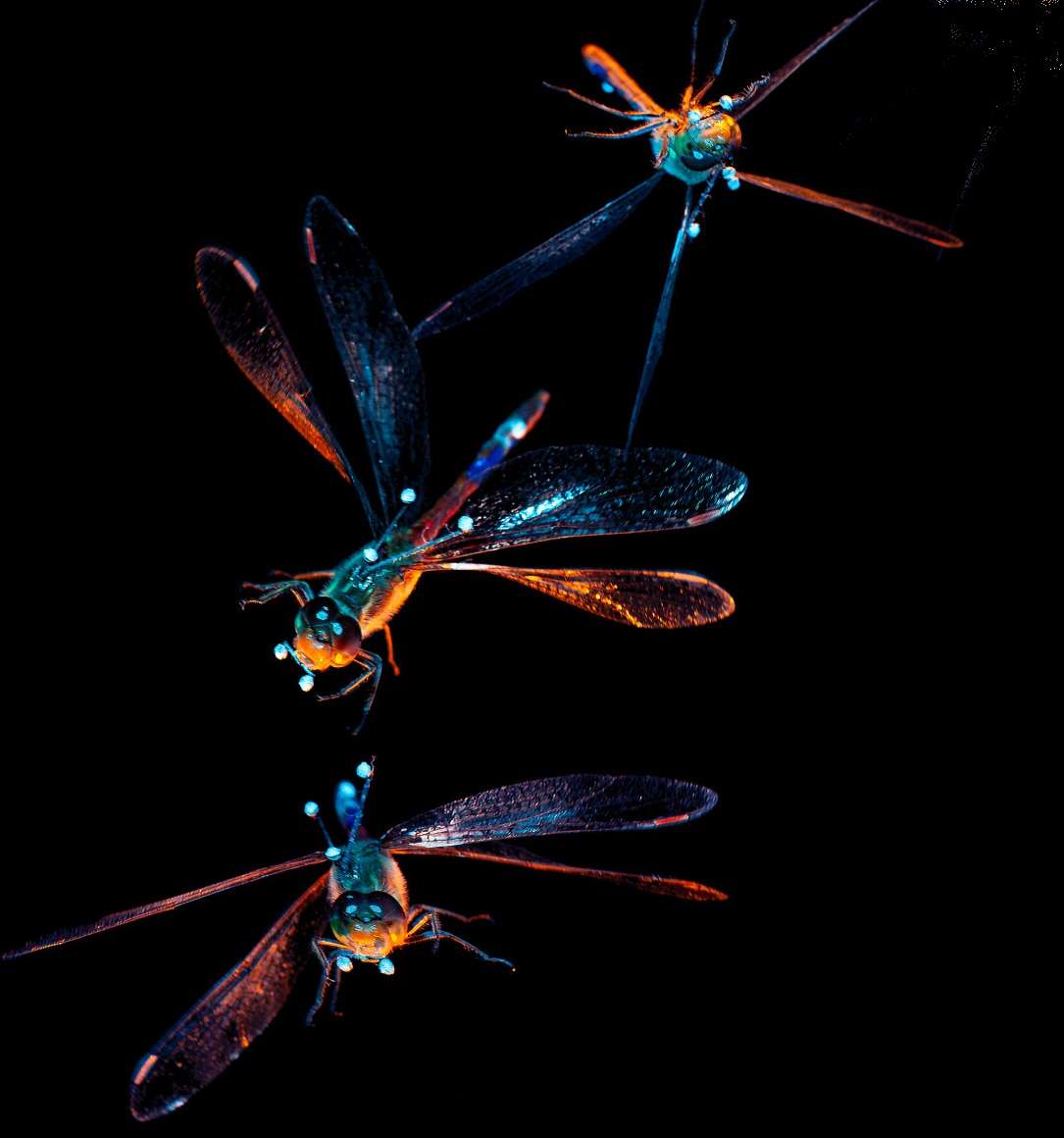
| Author Notes |
Amorous = expressing love
Tanka (means short poetry) originated 1300 years ago in Japan's Imperial Court where lovers exchanged tanka after a night together. Tanka evokes vivid imagery and reflection for the reader. They are free verse without meter or rhyme. They follow a 5 lines pattern of 5/7/5/7/7 (31) syllables or LESS because English syllables are different than Japanese syllables. The goal, as with most Japanese poetry, is to write as succinctly as possible. Tanka transitions from the descriptive top two lines into the reflective bottom three lines, using metaphor, simile, or personification. Modern Tanka rules are not as strict. The subject matter can vary, but most tanka are emotionally stirring or profound, and many are about love. Tanka is usually written in the first-person narrator's point of view. === click here if you want to read modern tanka examples === click here to read Tanka Society of America === click here if you want to read modern tanka rules Thank you very much for your time and kind review. Gypsy "The poet waits quietly to paint the unsaid." --Atticus |
![]()
By Gypsy Blue Rose

| Author Note: | For Rules, Please Read My Author Notes |
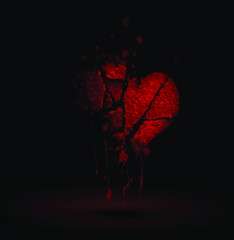
| Author Notes |
"If you love somebody, let them go, for if they return, they were always yours. If they don't, they never were. Let there be spaces in your togetherness, And let the winds of the heavens dance between you." - Kahlil Gibran
Tanka (means short poetry) originated 1300 years ago in Japan's Imperial Court where lovers exchanged tanka after a night together. Tanka evokes vivid imagery and reflection for the reader. They are free verse without meter or rhyme. They follow a 5 lines pattern of 5/7/5/7/7 (31) syllables or LESS because English syllables are different than Japanese syllables. The goal, as with most Japanese poetry, is to write as succinctly as possible. Tanka transitions from the descriptive top two lines into the reflective bottom three lines, using metaphor, simile, or personification. Modern Tanka rules are not as strict. The subject matter can vary, but most tanka are emotionally stirring or profound, and many are about love. Tanka is usually written in the first-person narrator's point of view. === click here if you want to read modern tanka examples === click here to read Tanka Society of America === click here if you want to read modern tanka rules Thank you very much for your time and kind review. Gypsy "The poet waits quietly to paint the unsaid." --Atticus |
![]()
By Gypsy Blue Rose

| Author Note: | For Rules, Please Read My Author Notes |

| Author Notes |
Modern Tanka (means short poetry) originated 1300 years ago in Japan's Imperial Court where lovers exchanged tanka after a night together. Tanka evokes vivid imagery and reflection for the reader. They are free verse without meter or rhyme. In Japan they follow a 5 lines pattern of 5/7/5/7/7 -- 31 syllables or LESS because English syllables are different than Japanese syllables. The goal, as with most Japanese poetry, is to write as succinctly as possible. Tanka transitions from the descriptive top two lines into the reflective bottom three lines, using metaphor, simile, or personification. Modern Tanka rules are not as strict. The subject matter can vary, but most tanka are emotionally stirring or profound, and many are about love. Tanka is usually written in the first-person narrator's point of view. === click here if you want to read modern tanka examples === click here to read Tanka Society of America === click here if you want to read modern tanka rules
Thank you very much for your time and kind review. Gypsy "The poet waits quietly to paint the unsaid." --Atticus |
![]()
By Gypsy Blue Rose

| Author Note: | Happy Valentine's Day |
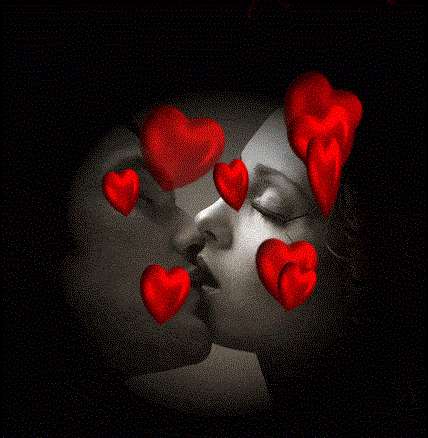
| Author Notes |
Ambrosia = food of the gods; something delicious to taste or smell.
Tanka (means short poetry) originated 1300 years ago in Japan's Imperial Court where lovers exchanged tanka after a night together. Tanka evokes vivid imagery and reflection for the reader. They are free verse without meter or rhyme. They follow a 5 lines pattern of 5/7/5/7/7 (31) syllables or LESS because English syllables are different than Japanese syllables. The goal, as with most Japanese poetry, is to write as succinctly as possible. Tanka transitions from the descriptive top two lines into the reflective bottom three lines, using metaphor, simile, or personification. Modern Tanka rules are not as strict. The subject matter can vary, but most tanka are emotionally stirring or profound, and many are about love. Tanka is usually written in the first-person narrator's point of view. === click here if you want to read modern tanka examples === click here to read Tanka Society of America === click here if you want to read modern tanka rules Thank you very much for your time and kind review. Gypsy "The poet waits quietly to paint the unsaid." --Atticus |
![]()
By Gypsy Blue Rose

| Author Note: | Happy Valentine's Day |

| Author Notes |
Modern Tanka (means short poetry) originated 1300 years ago in Japan's Imperial Court where lovers exchanged tanka after a night together. Tanka evokes vivid imagery and reflection for the reader. They are free verse without meter or rhyme. They follow a 5 lines pattern of 5/7/5/7/7 (31) syllables or LESS because English syllables are different than Japanese syllables. The goal, as with most Japanese poetry, is to write as succinctly as possible. Tanka poets use metaphor, simile, or personification. Modern Tanka rules are not as strict. The subject matter can vary, but most tanka are emotionally stirring or profound, and many are about love. Tanka is usually written in the first-person narrator's point of view. === click here if you want to read modern tanka examples === click here to read Tanka Society of America === click here if you want to read modern tanka rules
Thank you very much for your time and kind review. Gypsy "The poet waits quietly to paint the unsaid." --Atticus |
![]()
By Gypsy Blue Rose

| Author Note: | For Rules, Please Read My Author Notes |
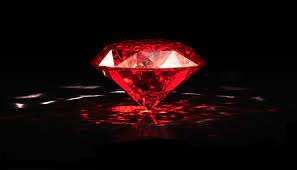
| Author Notes |
Red diamonds are the rarest and some of the most expensive in the world. Also known as Fancy Reds. The majority of the world's red diamonds come from Australia
TankaTanka (means short poetry) originated 1300 years ago in Japan's Imperial Court where lovers exchanged tanka after a night together. Tanka evokes vivid imagery and reflection for the reader. They are free verse without meter or rhyme. They follow a 5 lines pattern of 5/7/5/7/7 (31) syllables or LESS because English syllables are different than Japanese syllables. The goal, as with most Japanese poetry, is to write as succinctly as possible. Tanka transitions from the descriptive top two lines into the reflective bottom three lines, using metaphor, simile, or personification. Modern Tanka rules are not as strict. The subject matter can vary, but most tanka are emotionally stirring or profound, and many are about love. Tanka is usually written in the first-person narrator's point of view. === click here if you want to read modern tanka examples === click here to read Tanka Society of America === click here if you want to read modern tanka rules Thank you very much for your time and kind review. Gypsy "The poet waits quietly to paint the unsaid." --Atticus |
![]()
By Gypsy Blue Rose
 Warning: The author has noted that this contains the highest level of sexual content.
Warning: The author has noted that this contains the highest level of sexual content.
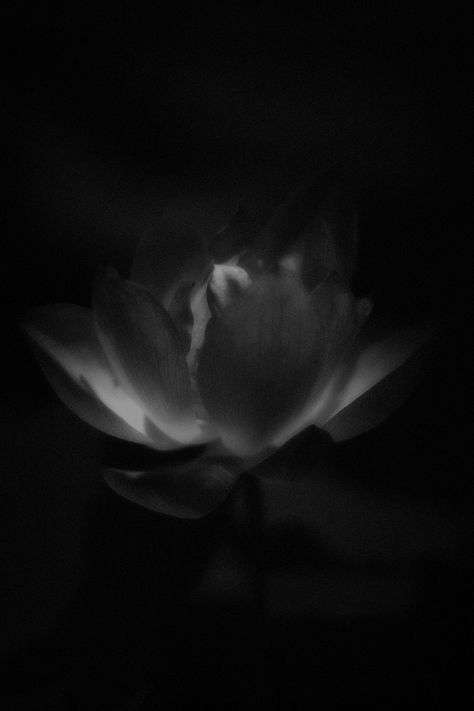
| Author Notes |
Tanka (means short poetry) originated 1300 years ago in Japan's Imperial Court where lovers exchanged tanka after a night together. Tanka evokes vivid imagery and reflection for the reader. They are free verse without meter or rhyme. They follow a 5 lines pattern of 5/7/5/7/7 (31) syllables or LESS because English syllables are different than Japanese syllables. The goal, as with most Japanese poetry, is to write as succinctly as possible. Tanka transitions from the descriptive top two lines into the reflective bottom three lines, using metaphor, simile, or personification. Modern Tanka rules are not as strict. The subject matter can vary, but most tanka are emotionally stirring or profound, and many are about love. Tanka is usually written in the first-person narrator's point of view. === click here if you want to read modern tanka examples === click here to read Tanka Society of America === click here if you want to read modern tanka rules
Thank you very much for your time and kind review. Gypsy "The poet waits quietly to paint the unsaid." --Atticus |
![]()
By Gypsy Blue Rose

| Author Note: | For Rules, Please Read My Author Notes |

| Author Notes |
A nymph in ancient Greek folklore is a female personification of nature depicted as a maiden.
Tanka (means short poetry) originated 1300 years ago in Japan's Imperial Court where lovers exchanged tanka after a night together. Tanka evokes vivid imagery and reflection for the reader. They are free verse without meter or rhyme. They follow a 5 lines pattern of 5/7/5/7/7 (31) syllables or LESS because English syllables are different than Japanese syllables. The goal, as with most Japanese poetry, is to write as succinctly as possible. Tanka transitions from the descriptive top two lines into the reflective bottom three lines, using metaphor, simile, or personification. Modern Tanka rules are not as strict. The subject matter can vary, but most tanka are emotionally stirring or profound, and many are about love. Tanka is usually written in the first-person narrator's point of view. === click here if you want to read modern tanka examples === click here to read Tanka Society of America === click here if you want to read modern tanka rules Thank you very much for your time and kind review. Gypsy "The poet waits quietly to paint the unsaid." --Atticus |
![]()
By Gypsy Blue Rose

| Author Note: | For Rules, Please Read My Author Notes |

| Author Notes |
Moribund = in a dying state; near death:
Tanka (means short poetry) originated 1300 years ago in Japan's Imperial Court where lovers exchanged tanka after a night together. Tanka evokes vivid imagery and reflection for the reader. They are free verse without meter or rhyme. They follow a 5 lines pattern of 5/7/5/7/7 (31) syllables or LESS because English syllables are different than Japanese syllables. The goal, as with most Japanese poetry, is to write as succinctly as possible. Tanka transitions from the descriptive top two lines into the reflective bottom three lines, using metaphor, simile, or personification. Modern Tanka rules are not as strict. The subject matter can vary, but most tanka are emotionally stirring or profound, and many are about love. Tanka is usually written in the first-person narrator's point of view. === click here if you want to read modern tanka examples === click here to read Tanka Society of America === click here if you want to read modern tanka rules Thank you very much for your time and kind review. Gypsy "The poet waits quietly to paint the unsaid." --Atticus |
![]()
By Gypsy Blue Rose

| Author Note: | For Rules, Please Read My Author Notes |

| Author Notes |
-- Ekphrastic poems are inspired by a picture or painting
-- Syllables count: 4/8/6/6/5 = 29 -- the rule is 31 syllables OR LESS -- Considering all the stars visible in all directions around Earth, it's estimated to be about 10,000 stars. -- The new moon is not visible because it's behind the sun. Tanka (means short poetry) originated 1300 years ago in Japan's Imperial Court where lovers exchanged tanka after a night together. Tanka evokes vivid imagery and reflection for the reader. They are free verse without meter or rhyme. They follow a 5 lines pattern of 5/7/5/7/7 (31) syllables or LESS because English syllables are different than Japanese syllables. The goal, as with most Japanese poetry, is to write as succinctly as possible. Tanka transitions from the descriptive top two lines into the reflective bottom three lines, using metaphor, simile, or personification. Modern Tanka rules are not as strict. The subject matter can vary, but most tanka are emotionally stirring or profound, and many are about love. Tanka is usually written in the first-person narrator's point of view. === click here if you want to read modern tanka examples === click here to read Tanka Society of America === click here if you want to read modern tanka rules Thank you very much for your time and kind review. Gypsy "The poet waits quietly to paint the unsaid." --Atticus |
![]()
By Gypsy Blue Rose

| Author Note: | For Rules, Please Read My Author Notes |

| Author Notes |
4/6/4/7/6 = 28 syllables, the rule is 31 syllables or less
Tanka (means short poetry) originated 1300 years ago in Japan's Imperial Court where lovers exchanged tanka after a night together. Tanka evokes vivid imagery and reflection for the reader. They are free verse without meter or rhyme. They follow a 5 lines pattern of 5/7/5/7/7 (31) syllables or LESS because English syllables are different than Japanese syllables. The goal, as with most Japanese poetry, is to write as succinctly as possible. Tanka transitions from the descriptive top two lines into the reflective bottom three lines, using metaphor, simile, or personification. Modern Tanka rules are not as strict. The subject matter can vary, but most tanka are emotionally stirring or profound, and many are about love. Tanka is usually written in the first-person narrator's point of view. === click here if you want to read modern tanka examples === click here to read Tanka Society of America === click here if you want to read modern tanka rules Thank you very much for your time and kind review. Gypsy "The poet waits quietly to paint the unsaid." --Atticus |
![]()
By Gypsy Blue Rose

| Author Note: | For Rules, Please Read My Author Notes |

| Author Notes |
4/8/6/7/4 = 29 syllables, rules are 31 syllables OR LESS
Tanka (means short poetry) originated 1300 years ago in Japan's Imperial Court where lovers exchanged tanka after a night together. Tanka evokes vivid imagery and reflection for the reader. They are free verse without meter or rhyme. They follow a 5 lines pattern of 5/7/5/7/7 (31) syllables or LESS because English syllables are different than Japanese syllables. The goal, as with most Japanese poetry, is to write as succinctly as possible. Tanka transitions from the descriptive top two lines into the reflective bottom three lines, using metaphor, simile, or personification. Modern Tanka rules are not as strict. The subject matter can vary, but most tanka are emotionally stirring or profound, and many are about love. Tanka is usually written in the first-person narrator's point of view. === click here if you want to read modern tanka examples === click here to read Tanka Society of America === click here if you want to read modern tanka rules Thank you very much for your time and kind review. Gypsy "The poet waits quietly to paint the unsaid." --Atticus |
![]()
By Gypsy Blue Rose

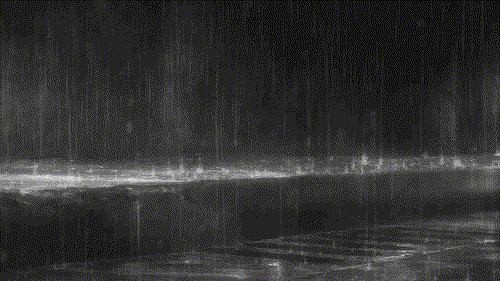
| Author Notes |
Tanka (means short poetry) originated 1300 years ago in Japan's Imperial Court where lovers exchanged tanka after a night together. Tanka evokes vivid imagery and reflection for the reader. They follow a 5 lines pattern of 5/7/5/7/7 (31) syllables or LESS because English syllables are different than Japanese syllables. The goal, as with most Japanese poetry, is to write as succinctly as possible. Tanka transitions from the descriptive top two lines into the reflective bottom three lines, using metaphor, simile, or personification. Modern Tanka rules are not as strict. The subject matter can vary, but most tanka are emotionally stirring or profound, and many are about love. Tanka is usually written in the first-person narrator's point of view. === click here if you want to read modern tanka examples === click here to read Tanka Society of America === click here if you want to read modern tanka rules
Thank you very much for your time and kind review. Gypsy "The poet waits quietly to paint the unsaid." --Atticus ============================================ Tanka (means short poetry) originated 1300 years ago in Japan's Imperial Court where lovers exchanged tanka after a night together. Tanka evokes vivid imagery and reflection for the reader. They are free verse without meter or rhyme. They follow a 5 lines pattern of 5/7/5/7/7 (31) syllables or LESS because English syllables are different than Japanese syllables. The goal, as with most Japanese poetry, is to write as succinctly as possible. Tanka transitions from the descriptive top two lines into the reflective bottom three lines, using metaphor, simile, or personification. Modern Tanka rules are not as strict. The subject matter can vary, but most tanka are emotionally stirring or profound, and many are about love. Tanka is usually written in the first-person narrator's point of view. === click here if you want to read modern tanka examples === click here to read Tanka Society of America === click here if you want to read modern tanka rules Thank you very much for your time and kind review. Gypsy "The poet waits quietly to paint the unsaid." --Atticus |
![]()
By Gypsy Blue Rose

| Author Note: | For Rules, Please Read My Author Notes |

| Author Notes |
Inspired by a song by Linda Ronstadt- Long Long Time
" 'Cause I've done everything I know To try and make you mine And I think I'm gonna love you For a long long time" Tanka (means short poetry) originated 1300 years ago in Japan's Imperial Court where lovers exchanged tanka after a night together. Tanka evokes vivid imagery and reflection for the reader. They are free verse without meter or rhyme. They follow a 5 lines pattern of 5/7/5/7/7 (31) syllables or LESS because English syllables are different than Japanese syllables. The goal, as with most Japanese poetry, is to write as succinctly as possible. Tanka transitions from the descriptive top two lines into the reflective bottom three lines, using metaphor, simile, or personification. Modern Tanka rules are not as strict. The subject matter can vary, but most tanka are emotionally stirring or profound, and many are about love. Tanka is usually written in the first-person narrator's point of view. === click here if you want to read modern tanka examples === click here to read Tanka Society of America === click here if you want to read modern tanka rules Thank you very much for your time and kind review. Gypsy "The poet waits quietly to paint the unsaid." --Atticus |
![]()
By Gypsy Blue Rose

| Author Note: | For Rules, Please Read My Author Notes |
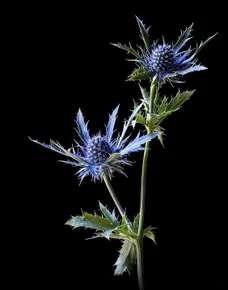
| Author Notes |
Tanka (means short poetry) originated 1300 years ago in Japan's Imperial Court where lovers exchanged tanka after a night together. Tanka evokes vivid imagery and reflection for the reader. They are free verse without meter or rhyme. They follow a 5 lines pattern of 5/7/5/7/7 (31) syllables or LESS because English syllables are different than Japanese syllables. The goal, as with most Japanese poetry, is to write as succinctly as possible. Tanka transitions from the descriptive top two lines into the reflective bottom three lines, using metaphor, simile, or personification. Modern Tanka rules are not as strict. The subject matter can vary, but most tanka are emotionally stirring or profound, and many are about love. Tanka is usually written in the first-person narrator's point of view. === click here if you want to read modern tanka examples === click here to read Tanka Society of America === click here if you want to read modern tanka rules
Thank you very much for your time and kind review. Gypsy "The poet waits quietly to paint the unsaid." --Atticus The pictures: Sea Holly, is a species of flowering plant native to central and southeastern Europe and Central Asia. |
![]()
By Gypsy Blue Rose

| Author Note: | For Rules, Please Read My Author Notes |

| Author Notes |
moribund = near death
Tanka (means short poetry) originated 1300 years ago in Japan's Imperial Court where lovers exchanged tanka after a night together. Tanka evokes vivid imagery and reflection for the reader. They are free verse without meter or rhyme. They follow a 5 lines pattern of 5/7/5/7/7 (31) syllables or LESS because English syllables are different than Japanese syllables. The goal, as with most Japanese poetry, is to write as succinctly as possible. Tanka transitions from the descriptive top two lines into the reflective bottom three lines, using metaphor, simile, or personification. Modern Tanka rules are not as strict. The subject matter can vary, but most tanka are emotionally stirring or profound, and many are about love. Tanka is usually written in the first-person narrator's point of view. === click here if you want to read modern tanka examples === click here to read Tanka Society of America === click here if you want to read modern tanka rules Thank you very much for your time and kind review. Gypsy "The poet waits quietly to paint the unsaid." --Atticus pictures from pinterest.com |
![]()
By Gypsy Blue Rose


| Author Notes |
Tanka (means short poetry) originated 1300 years ago in Japan's Imperial Court where lovers exchanged tanka after a night together. Tanka evokes vivid imagery and reflection for the reader. They are free verse without meter or rhyme. They follow a 5 lines pattern of 5/7/5/7/7 (31) syllables or LESS because English syllables are different than Japanese syllables. The goal, as with most Japanese poetry, is to write as succinctly as possible. Tanka transitions from the descriptive top two lines into the reflective bottom three lines, using metaphor, simile, or personification. Modern Tanka rules are not as strict. The subject matter can vary, but most tanka are emotionally stirring or profound, and many are about love. Tanka is usually written in the first-person narrator's point of view. === click here if you want to read modern tanka examples === click here to read Tanka Society of America === click here if you want to read modern tanka rules
Thank you very much for your time and kind review. Gypsy "The poet waits quietly to paint the unsaid." --Atticus pictures from pinterest.com |
![]()
By Gypsy Blue Rose

| Author Note: | For Rules, Please Read My Author Notes |

| Author Notes |
Modern Tanka (tanka means short poetry) originated 1300 years ago in Japan's Imperial Court where lovers exchanged tanka after a night together. Tanka evokes vivid imagery and reflection for the reader. They are free verse without meter or rhyme. They follow a 5 lines pattern of 5/7/5/7/7 (31) syllables or LESS because English syllables are different than Japanese syllables. The goal, as with most Japanese poetry, is to write as succinctly as possible. Tanka uses metaphor, simile, or personification. The subject matter can vary, but most tanka are emotionally stirring or profound, and many are about love. Tanka is usually written in the first-person narrator's point of view. === click here if you want to read modern tanka examples === click here to read Tanka Society of America === click here if you want to read modern tanka rules
Thank you very much for your time and kind review. Gypsy "The poet waits quietly to paint the unsaid." --Atticus pictures from google public domain |
![]()
By Gypsy Blue Rose

| Author Note: | For Rules, Please Read My Author Notes |
condolence
to lingering late winter —
my shriveled plants
and murder of crows say goodbye
to soon-to-be ‘dearly departed’
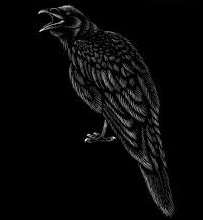
| Author Notes |
Looking forward to Spring that starts on Monday, March 20, 2023
A murder of crows is a group of crows Tanka (means short poetry) originated 1300 years ago in Japan's Imperial Court where lovers exchanged tanka after a night together. Tanka evokes vivid imagery and reflection for the reader. They are free verse without meter or rhyme. They follow a 5 lines pattern of 5/7/5/7/7 (31) syllables or LESS because English syllables are different than Japanese syllables. The goal, as with most Japanese poetry, is to write as succinctly as possible. Tanka transitions from the descriptive top two lines into the reflective bottom three lines, using metaphor, simile, or personification. Modern Tanka rules are not as strict. The subject matter can vary, but most tanka are emotionally stirring or profound, and many are about love. Tanka is usually written in the first-person narrator's point of view. === click here if you want to read modern tanka examples === click here to read Tanka Society of America === click here if you want to read modern tanka rules Thank you very much for your time and kind review. Gypsy "The poet waits quietly to paint the unsaid." --Atticus pictures from google public domain |
![]()
By Gypsy Blue Rose

| Author Note: | For Rules, Please Read My Author Notes |

| Author Notes |
Suicide Prevention Crisis Line = 988
A black hole is a region of space where gravity is so strong that nothing escapes. Tanka (means short poetry) originated 1300 years ago in Japan's Imperial Court where lovers exchanged tanka after a night together. Tanka evokes vivid imagery and reflection for the reader. They are free verse without meter or rhyme. They follow a 5 lines pattern of 5/7/5/7/7 (31) syllables or LESS because English syllables are different than Japanese syllables. The goal, as with most Japanese poetry, is to write as succinctly as possible. Tanka transitions from the descriptive top two lines into the reflective bottom three lines, using metaphor, simile, or personification. Modern Tanka rules are not as strict. The subject matter can vary, but most tanka are emotionally stirring or profound, and many are about love. Tanka is usually written in the first-person narrator's point of view. === click here if you want to read modern tanka examples === click here to read Tanka Society of America === click here if you want to read modern tanka rules Thank you very much for your time and kind review. Gypsy "The poet waits quietly to paint the unsaid." --Atticus picture from google public domain |
![]()
By Gypsy Blue Rose

| Author Note: | For Rules, Please Read My Author Notes |
surrendered
to capricious lunar tides
as they rise and fall —
over brilliant golden shores
tangled in turbulent love
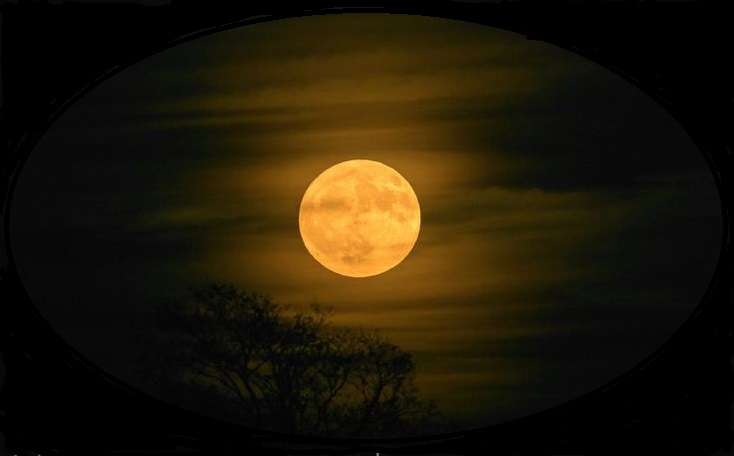
| Author Notes |
Capricious = led by a sudden an unpredictable change
Lunar tides = are the mutual attraction between the sea and the moon Tanka (means short poetry) originated 1300 years ago in Japan's Imperial Court where lovers exchanged tanka after a night together. Tanka evokes vivid imagery and reflection for the reader. They are free verse without meter or rhyme. They follow a 5 lines pattern of 5/7/5/7/7 (31) syllables or LESS because English syllables are different than Japanese syllables. The goal, as with most Japanese poetry, is to write as succinctly as possible. Tanka transitions from the descriptive top two lines into the reflective bottom three lines, using metaphor, simile, or personification. Modern Tanka rules are not as strict. The subject matter can vary, but most tanka are emotionally stirring or profound, and many are about love. Tanka is usually written in the first-person narrator's point of view. === click here if you want to read modern tanka examples === click here to read Tanka Society of America === click here if you want to read modern tanka rules Thank you very much for your time and kind review. Gypsy "The poet waits quietly to paint the unsaid." --Atticus |
![]()
By Gypsy Blue Rose

| Author Note: | Dedicated to my son |

| Author Notes |
My son had a teddy bear called 'Scotty' when he was little. He took it everywhere. Now my son is all grown up with a family of his own.
Tanka is a Japanese unrhymed poem having about 12 to 31 syllables usually arranged in five lines. The first English-speaking poets imitated the Japanese models of 5-7-5-7-7 syllabic structure in five lines, but because Japanese syllables are shorter than English syllables the poems were too wordy and choppy. The beginning two lines are descriptive and image-focused, and the third line serves as a transition to the bottom two lines which are reflective using metaphor, simile, or personification. The subject matter varies, but most tanka are emotionally stirring or profound, and many are about love. Tanka originated in the seventh century in the Japanese Imperial Court, where women and men engaged in courtship. click here if you want to read modern tanka examples === click here to read Tanka Society of America === click here if you want to read modern tanka rules Thank you very much for taking the time to read and review my poem. Gypsy "Poetry heals the wounds inflicted by reason." - Novalis Picture by_arsenixc, deviantart.com |
![]()
By Gypsy Blue Rose

| Author Note: | For Rules, Please Read My Author Notes |

| Author Notes |
TANKA is a Japanese unrhymed poem having about 12 to 31 syllables usually arranged in five lines. The first English-speaking poets imitated the Japanese models of 5-7-5-7-7 syllabic structure in five lines, but because Japanese syllables are shorter than English syllables the poems were too wordy and choppy. The beginning two lines are descriptive and image-focused, and the third line serves as a transition to the bottom two lines which are reflective using metaphor, simile, or personification. The subject matter varies, but most tanka are emotionally stirring or profound, and many are about love. Tanka originated in the seventh century in the Japanese Imperial Court, where women and men engaged in courtship. click here if you want to read modern tanka examples === click here to read Tanka Society of America === click here if you want to read modern tanka rules
Thank you very much for taking the time to read and review my poem. Gypsy "Poetry heals the wounds inflicted by reason." - Novalis picture from deviantart.com |
![]()
By Gypsy Blue Rose

| Author Note: | For Rules, Please Read My Author Notes |
the sexy black dress
I bought to celebrate
your return
hangs in the closet untouched —
dried petals scattered on the floor

| Author Notes |
MODERN TANKA is a Japanese unrhymed poem is not as structured as the classic tanka. The syllables and number of lines vary but it's a short poem. The first English-speaking poets imitated the Japanese models of 5-7-5-7-7 syllabic structure in five lines, but because Japanese syllables are shorter than English syllables the poems were too wordy and choppy. Modern Tanka poets can use any of the following: punctuation, alliteration, metaphor, simile, and personification. The subject matter varies, but most tanka are emotionally stirring or profound, and many are about love. Modern Tanka originated in the twenty century click here if you want to read modern tanka examples === click here to read Tanka Society of America === click here if you want to read modern tanka rules
Thank you very much for taking the time to read and review my poem. Gypsy pinterest.com |
![]()
By Gypsy Blue Rose

| Author Note: | If You Would Like To Join the Japanese Poetry Club, please check my author notes |

| Author Notes |
Jiyu-shi is a modern Japanese free-style poetic form developed in Japan in the 19th century. The form consists of 5/7 stanza, you may write one or more stanzas = source
Thank you very much for reading and reviewing my poem, Gypsy |
![]()
By Gypsy Blue Rose

![]()
By Gypsy Blue Rose
 Warning: The author has noted that this contains the highest level of sexual content.
Warning: The author has noted that this contains the highest level of sexual content.
tantalizing
memories of your warm breath
tangled in my hair
and my tender breasts captive
of your strong gentle hands

| Author Notes |
TANKA is a Japanese unrhymed poem having about 12 to 31 syllables usually arranged in five lines.
One of the oldest Japanese forms, tanka originated in the seventh century, and quickly became the preferred verse form not only in the Japanese Imperial Court, where nobles competed in tanka contests but for women and men engaged in courtship. The first English-speaking poets imitated the Japanese models of 5-7-5-7-7 syllabic structure in five lines, but because Japanese syllables are shorter than English syllables the poems were too wordy and choppy. The beginning two lines are descriptive and image-focused, and the third line serves as a transition to the bottom two lines which are reflective using metaphor, simile, or personification. The subject matter varies, but most tanka are emotionally stirring or profound, and many are about love. Tanka originated in the seventh century in the Japanese Imperial Court, where women and men engaged in courtship. click here if you want to read modern tanka examples === click here to read Tanka Society of America === click here if you want to read modern tanka rules Thank you very much for taking the time to read and review my poem. Gypsy "Poetry heals the wounds inflicted by reason." - Novalis painting by Ikenaga Yasunari |
![]()
By Gypsy Blue Rose


| Author Notes |
(for our fanstory friends in other countries) In America, Goodwill is a nonprofit organization that collects donations and uses the money to benefit destitute people. Sometimes, when people die, their clothes are donated to Goodwill.
GOGYOHKA is a five-line free-style Japanese poetic form with no strict rules on syllable count but as brief as possible. Any theme. Lines are grammatically connected. Alliteration, personification, and metaphor are okay but never rhyme. Japanese poets have written gogyohka since the 1910s. However, they did not name the form until 1983 by poet Enta Kusakabe. === source = writers digest ===source=wikipedia Thank you for taking the time to read and review my poem. Gypsy Word Weaver |
![]()
By Gypsy Blue Rose

| Author Note: | If You Would Like To Join the Japanese Poetry Club, please check my author notes |

| Author Notes |
GOGYOHKA is a five-line free-style Japanese poetic form with no strict rules on syllables count but as brief as possible. Any theme. Lines are grammatically connected. Alliteration, personification, and metaphor are okay but never rhyme. Japanese poets have written gogyohka since the 1910s. However, they did not name the form until 1983 by poet Enta Kusakabe. === source = writers digest ===source=wikipedia
Thank you for taking the time to read and review my poem. Gypsy |
![]()
By Gypsy Blue Rose

| Author Note: | If You Would Like To Join the Japanese Poetry Club, please check my author notes |
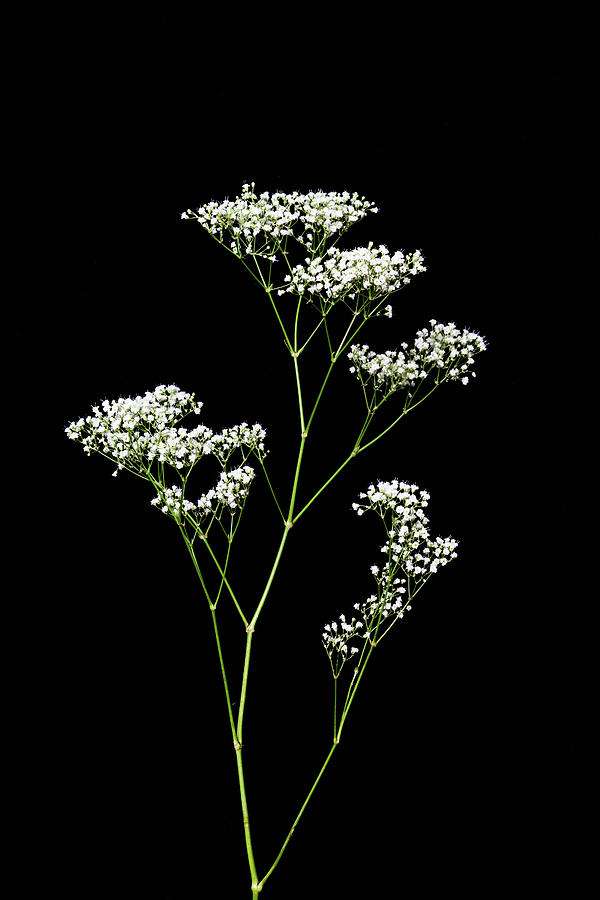
| Author Notes |
Baby's breath is a flower commonly used in flower arrangements.
GOGYOHKA is a five-line free-style Japanese poetic form with no strict rules on syllables count but as brief as possible. Any theme. Lines are grammatically connected. Alliteration, personification, and metaphor are okay but never rhyme. Japanese poets have written gogyohka since the 1910s. However, they did not name the form until 1983 by poet Enta Kusakabe. === source = writers digest ===source=wikipedia Thank you for taking the time to read and review my poem. Gypsy |
![]()
By Gypsy Blue Rose

raging autumn gale
blasts the moors outside my home
as the blazing sunset
sets my longing heart aflame
amidst the ashes of my one-sided love

| Author Notes |
GOGYOHKA is a five-line free-style Japanese poetic form with no strict rules on syllables count but as brief as possible. Any theme. Lines are grammatically connected. Alliteration, personification, and metaphor are okay but never rhyme. Japanese poets have written gogyohka since the 1910s. However, they did not name the form until 1983 by poet Enta Kusakabe. === source = writers digest ===source=wikipedia
Thank you for taking the time to read and review my poem. Gypsy |
![]()
By Gypsy Blue Rose

| Author Note: | If You Would Like To Join the Japanese Poetry Club, please check my author notes |
| Author Notes |
GOGYOHKA is a five-line free-style Japanese poetic form with no strict rules on syllables count but as brief as possible. Any theme. Lines are grammatically connected. Alliteration, personification, and metaphor are okay but never rhyme. Japanese poets have written gogyohka since the 1910s. However, they did not name the form until 1983 by poet Enta Kusakabe. === source = writers digest ===source=wikipedia
Thank you for taking the time to read and review my poem. Gypsy Painting by Ikenaga Yasunari |
![]()
By Gypsy Blue Rose

my heart skips a beat
when I see you on the street
I can tell you love it,
as I watch you from afar

| Author Notes |
TANKA is a Japanese unrhymed poem having about 12 to 31 syllables usually arranged in five lines. The first English-speaking poets imitated the Japanese models of 5-7-5-7-7 syllabic structure in five lines, but because Japanese syllables are shorter than English syllables the poems were too wordy and choppy. The beginning two lines are descriptive and image-focused, and the third line serves as a transition to the bottom two lines which are reflective using metaphor, simile, or personification. The subject matter varies, but most tanka are emotionally stirring or profound, and many are about love. Tanka originated in the seventh century in the Japanese Imperial Court, where women and men engaged in courtship. click here if you want to read modern tanka examples === click here to read Tanka Society of America === click here if you want to read modern tanka rules
Thank you very much for taking the time to read and review my poem. Gypsy "Poetry heals the wounds inflicted by reason." - Novalis Picture: Pedro Pascal Title: phrase from a Stephen King book, "Misery" - "I'm your number one fan" |
![]()
By Gypsy Blue Rose

I lose myself
in your deep midnight eyes
and sweet nectar lips
immersed in your massive sea
my passion ablaze
in raging winds
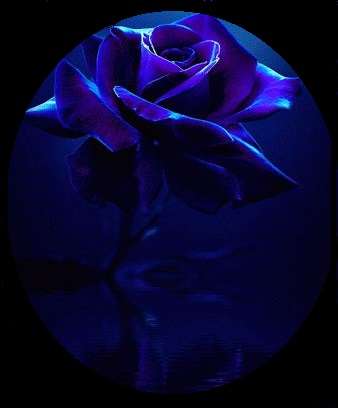
| Author Notes |
KANSHI√¢??s FORM IS WRITTEN IN 5 to 7 SYLLABLES AND 4 to 8 LINES. Japanese poets wrote in classical Chinese during the Tang Dynasty in the Heian Era (794-1185), Chinese was the language of courts in Japan. Kanshi was practiced and enjoyed only by aristocrats at the beginning but has remained popular throughout Japanese history, especially among academics and intellectuals. more info from wikipedia -- more info from simplyhaiku.com -- the HaikuFoundation.org
Gypsy "learn the rules like a pro, so you can break them like an artist". - Picasso picture from google public domain |
![]()
By Gypsy Blue Rose

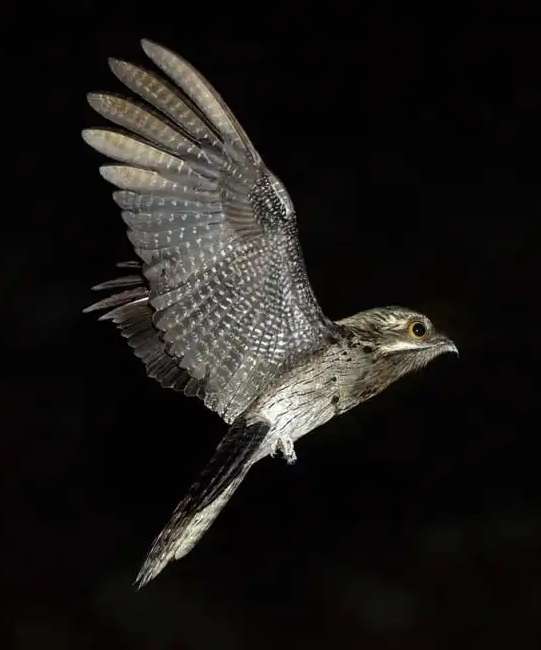
| Author Notes |
-- If someone is burning the midnight oil, they are staying up very late to write.
-- Potoo birds carry a mournful song, one of the most haunting in the bird world. KANSHI FORM IS WRITTEN IN 5 to 7 SYLLABLES AND 4 to 8 LINES. Japanese poets wrote in classical Chinese during the Tang Dynasty in the Heian Era (794-1185), Chinese was the language of courts in Japan. Kanshi was practiced and enjoyed only by aristocrats at the beginning but has remained popular throughout Japanese history, especially among academics and intellectuals. more info from wikipedia -- more info from simplyhaiku.com -- the HaikuFoundation.org Gypsy "The poet waits quietly to paint the unsaid." Atticus |
![]()
By Gypsy Blue Rose

| Author Note: | Romantic poem done in good taste |

| Author Notes |
TANKA is a Japanese unrhymed poem having about 12 to 31 syllables usually arranged in five lines. The first English-speaking poets imitated the Japanese models of 5-7-5-7-7 syllabic structure in five lines, but because Japanese syllables are shorter than English syllables the poems were too wordy and choppy. The beginning two lines are descriptive and image-focused, and the third line serves as a transition to the bottom two lines which are reflective using metaphor, simile, or personification. The subject matter varies, but most tanka are emotionally stirring or profound, and many are about love. Tanka originated in the seventh century in the Japanese Imperial Court, where women and men engaged in courtship. click here if you want to read modern tanka examples === click here to read Tanka Society of America === click here if you want to read modern tanka rules
Thank you very much for taking the time to read and review my poem. Gypsy "Poetry heals the wounds inflicted by reason." - Novalis |
![]()
By Gypsy Blue Rose

| Author Note: | For Rules, Please Read My Author Notes |
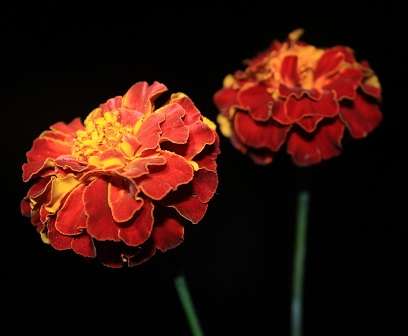
| Author Notes |
TANKA is a Japanese unrhymed poem having about 12 to 31 syllables usually arranged in five lines. The first English-speaking poets imitated the Japanese models of 5-7-5-7-7 syllabic structure in five lines, but because Japanese syllables are shorter than English syllables the poems were too wordy and choppy. The beginning two lines are descriptive and image-focused, and the third line serves as a transition to the bottom two lines which are reflective using metaphor, simile, or personification. The subject matter varies, but most tanka are emotionally stirring or profound, and many are about love. Tanka originated in the seventh century in the Japanese Imperial Court, where women and men engaged in courtship. click here if you want to read modern tanka examples === click here to read Tanka Society of America === click here if you want to read modern tanka rules
Thank you very much for taking the time to read and review my poem. Gypsy "Poetry heals the wounds inflicted by reason." - Novalis pictures from google public domain |
![]()
By Gypsy Blue Rose

| Author Note: | For Rules, Please Read My Author Notes |

| Author Notes |
- Bop on down = to go.
- Pad = home - The American bittern is a wading bird in the heron family. They can be very hard to see in the marsh vegetation. TANKA is a Japanese unrhymed poem having about 12 to 31 syllables usually arranged in five lines. The first English-speaking poets imitated the Japanese models of 5-7-5-7-7 syllabic structure in five lines, but because Japanese syllables are shorter than English syllables the poems were too wordy and choppy. The beginning two lines are descriptive and image-focused, and the third line serves as a transition to the bottom two lines which are reflective using metaphor, simile, or personification. The subject matter varies, but most tanka are emotionally stirring or profound, and many are about love. Tanka originated in the seventh century in the Japanese Imperial Court, where women and men engaged in courtship. click here if you want to read modern tanka examples === click here to read Tanka Society of America === click here if you want to read modern tanka rules Thank you very much for taking the time to read and review my poem. Gypsy "Poetry heals the wounds inflicted by reason." - Novalis top picture from google public domain bottom picture by Joel Sartore |
![]()
By Gypsy Blue Rose

| Author Note: | For Rules, Please Read My Author Notes |
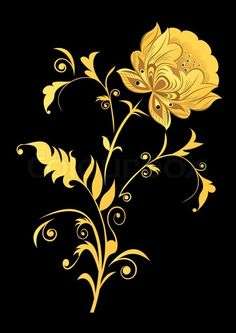
| Author Notes |
TANKA is a Japanese unrhymed poem having about 12 to 31 syllables usually arranged in five lines. The first English-speaking poets imitated the Japanese models of 5-7-5-7-7 syllabic structure in five lines, but because Japanese syllables are shorter than English syllables the poems were too wordy and choppy. The beginning two lines are descriptive and image-focused, and the third line serves as a transition to the bottom two lines which are reflective using metaphor, simile, or personification. The subject matter varies, but most tanka are emotionally stirring or profound, and many are about love. Tanka originated in the seventh century in the Japanese Imperial Court, where women and men engaged in courtship. click here if you want to read modern tanka examples === click here to read Tanka Society of America === click here if you want to read modern tanka rules
Thank you very much for taking the time to read and review my poem. Gypsy "Poetry heals the wounds inflicted by reason." - Novalis pictures from pinterest.com |
![]()
By Gypsy Blue Rose


| Author Notes |
TANKA is a Japanese unrhymed poem having about 12 to 31 syllables usually arranged in five lines. The first English-speaking poets imitated the Japanese models of 5-7-5-7-7 syllabic structure in five lines, but because Japanese syllables are shorter than English syllables the poems were too wordy and choppy. The beginning two lines are descriptive and image-focused, and the third line serves as a transition to the bottom two lines which are reflective using metaphor, simile, or personification. The subject matter varies, but most tanka are emotionally stirring or profound, and many are about love. Tanka originated in the seventh century in the Japanese Imperial Court, where women and men engaged in courtship. click here if you want to read modern tanka examples === click here to read Tanka Society of America === click here if you want to read modern tanka rules
Thank you very much for taking the time to read and review my poem. Gypsy "Poetry heals the wounds inflicted by reason." - Novalis picture from google public domain |
![]()
By Gypsy Blue Rose

| Author Note: | For Rules, Please Read My Author Notes |
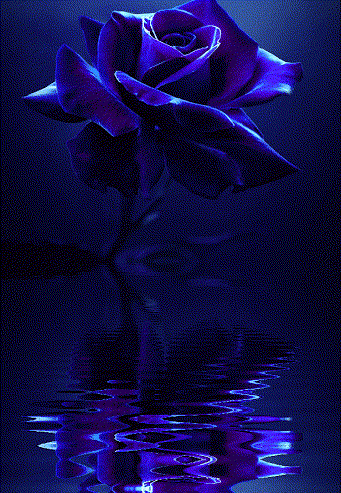
| Author Notes |
Music is powerful, it can conjure up all kinds of emotions.
TANKA is a Japanese unrhymed poem having about 12 to 31 syllables usually arranged in five lines. The first English-speaking poets imitated the Japanese models of 5-7-5-7-7 syllabic structure in five lines, but because Japanese syllables are shorter than English syllables the poems were too wordy and choppy. The beginning two lines are descriptive and image-focused, and the third line serves as a transition to the bottom two lines which are reflective using metaphor, simile, or personification. The subject matter varies, but most tanka are emotionally stirring or profound, and many are about love. Tanka originated in the seventh century in the Japanese Imperial Court, where women and men engaged in courtship. click here if you want to read modern tanka examples === click here to read Tanka Society of America === click here if you want to read modern tanka rules Thank you very much for taking the time to read and review my poem. Gypsy "Poetry heals the wounds inflicted by reason." - Novalis 'Rhapsody in Blue' is an old musical composition by George Gershwin - Painting by Yahya Ciftsuren |
![]()
By Gypsy Blue Rose

| Author Note: | For Rules, Please Read My Author Notes |

| Author Notes |
capriciously = unpredictable; erratic
TANKA is a Japanese unrhymed poem having about 12 to 31 syllables usually arranged in five lines. The first English-speaking poets imitated the Japanese models of 5-7-5-7-7 syllabic structure in five lines, but because Japanese syllables are shorter than English syllables the poems were too wordy and choppy. The beginning two lines are descriptive and image-focused, and the third line serves as a transition to the bottom two lines which are reflective using metaphor, simile, or personification. The subject matter varies, but most tanka are emotionally stirring or profound, and many are about love. Tanka originated in the seventh century in the Japanese Imperial Court, where women and men engaged in courtship. click here if you want to read modern tanka examples === click here to read Tanka Society of America === click here if you want to read modern tanka rules Thank you very much for taking the time to read and review my poem. Gypsy "Poetry heals the wounds inflicted by reason." - Novalis Picture: artmajeur gallery |
![]()
By Gypsy Blue Rose

| Author Note: | For Rules, Please Read My Author Notes |
dawn is breaking
and I’m tangled up in blue —
your dark contour
fades into the sunrise
and my love for you blooms

| Author Notes |
TANKA is a Japanese unrhymed poem having about 12 to 31 syllables usually arranged in five lines. The first English-speaking poets imitated the Japanese models of 5-7-5-7-7 syllabic structure in five lines, but because Japanese syllables are shorter than English syllables the poems were too wordy and choppy. The beginning two lines are descriptive and image-focused, and the third line serves as a transition to the bottom two lines which are reflective using metaphor, simile, or personification. The subject matter varies, but most tanka are emotionally stirring or profound, and many are about love. Tanka originated in the seventh century in the Japanese Imperial Court, where women and men engaged in courtship. click here if you want to read modern tanka examples === click here to read Tanka Society of America === click here if you want to read modern tanka rules
Thank you very much for taking the time to read and review my poem. Gypsy "Poetry heals the wounds inflicted by reason." - Novalis pictures from google public domain |
![]()
By Gypsy Blue Rose

waiting for the cool night,
I lie on fields of gold—
with a dry straw stem
in my salivating mouth
tasting the summer sun

| Author Notes |
GOGYOHKA is a five-line free-style Japanese poetic form with no strict rules on syllable count but as brief as possible. Any theme. Lines are grammatically connected. Alliteration, personification, and metaphor are okay but never rhyme. Japanese poets have written gogyohka since the 1910s. However, they did not name the form until 1983 by poet Enta Kusakabe. === source = writers digest ===source=wikipedia Thank you for taking the time to read and review my poem.
Gypsy "One must maintain a little bit of summer, even in the middle of winter." - Henry David Thoreau |
![]()
By Gypsy Blue Rose

| Author Note: | For Rules, Please Read My Author Notes |
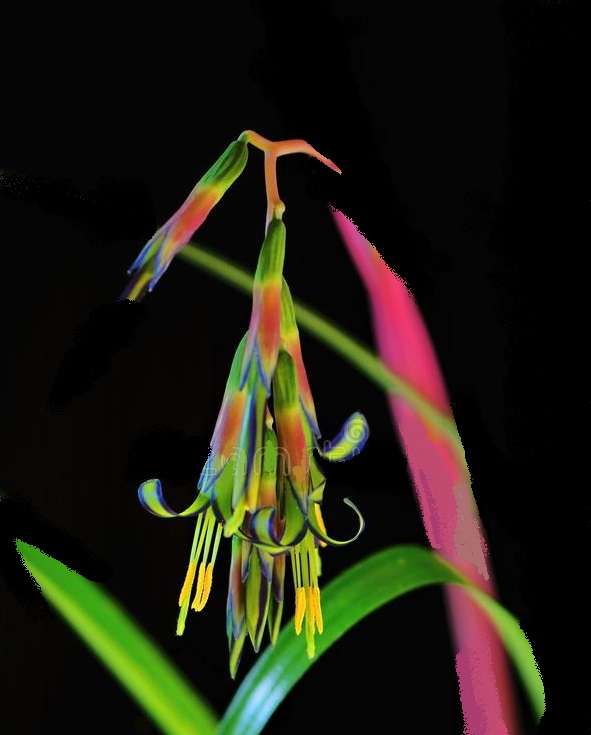
| Author Notes |
TANKA is a Japanese unrhymed poem having about 12 to 31 syllables usually arranged in five lines. The first English-speaking poets imitated the Japanese models of 5-7-5-7-7 syllabic structure in five lines, but because Japanese syllables are shorter than English syllables the poems were too wordy and choppy. The beginning two lines are descriptive and image-focused, and the third line serves as a transition to the bottom two lines which are reflective using metaphor, simile, or personification. The subject matter varies, but most tanka are emotionally stirring or profound, and many are about love. Tanka originated in the seventh century in the Japanese Imperial Court, where women and men engaged in courtship. click here if you want to read modern tanka examples === click here to read Tanka Society of America === click here if you want to read modern tanka rules
Thank you very much for taking the time to read and review my poem. Gypsy "Poetry heals the wounds inflicted by reason." - Novalis |
![]()
By Gypsy Blue Rose

| Author Note: | For Rules, Please Read My Author Notes |
Today,
not even the morning glories
want to rise —
‘cause they need to hide
their messy tendril hair
entwined with dreams of you
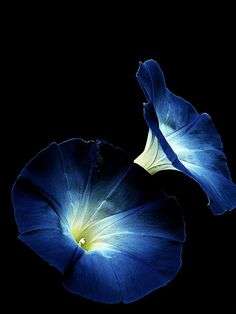
| Author Notes |
TANKA is a Japanese unrhymed love poem having about 12 to 31 syllables usually arranged in five lines. The first English-speaking poets imitated the Japanese models of 5-7-5-7-7 syllabic structure in five lines, but because Japanese syllables are shorter than English syllables the poems were too wordy and choppy. The beginning two lines are descriptive and image-focused, and the third line serves as a transition to the bottom two lines which are reflective using metaphor, simile, or personification. The subject matter varies, but most tanka are emotionally stirring or profound, and many are about love. Tanka originated in the seventh century in the Japanese Imperial Court, where women and men engaged in courtship. click here if you want to read modern tanka examples === click here to read Tanka Society of America === click here if you want to read modern tanka rules
Thank you very much for taking the time to read and review my poem. Gypsy "Poetry heals the wounds inflicted by reason." - Novalis |
![]()
By Gypsy Blue Rose

abandoned
on your discarded things boat —
adrift at sea
of forgotten forlorn love
drowning in cold waves

| Author Notes |
TANKA is a Japanese unrhymed love poem having about 12 to 31 syllables usually arranged in five lines. The first English-speaking poets imitated the Japanese models of 5-7-5-7-7 syllabic structure in five lines, but because Japanese syllables are shorter than English syllables the poems were too wordy and choppy. The beginning two lines are descriptive and image-focused, and the third line serves as a transition to the bottom two lines which are reflective using metaphor, simile, or personification. The subject matter varies, but most tanka are emotionally stirring or profound, and many are about love. Tanka originated in the seventh century in the Japanese Imperial Court, where women and men engaged in courtship. click here if you want to read modern tanka examples === click here to read Tanka Society of America === click here if you want to read modern tanka rules
Thank you very much for taking the time to read and review my poem. painting by Ikenaga Yasunari Gypsy "Poetry heals the wounds inflicted by reason." - Novalis |
![]()
By Gypsy Blue Rose

| Author Note: | For Rules, Please Read My Author Notes |

| Author Notes |
TANKA is a Japanese unrhymed love poem having about 12 to 31 syllables usually arranged in five lines. The first English-speaking poets imitated the Japanese models of 5-7-5-7-7 syllabic structure in five lines, but because Japanese syllables are shorter than English syllables the poems were too wordy and choppy. The beginning two lines are descriptive and image-focused, and the third line serves as a transition to the bottom two lines which are reflective using metaphor, simile, or personification. The subject matter varies, but most tanka are emotionally stirring or profound, and many are about love. Tanka originated in the seventh century in the Japanese Imperial Court, where women and men engaged in courtship. click here if you want to read modern tanka examples === click here to read Tanka Society of America === click here if you want to read modern tanka rules
pictures from Pinterest, bottom picture is a white egret orchid Thank you very much for taking the time to read and review my poem. Gypsy "Poetry heals the wounds inflicted by reason." - Novalis |
![]()
By Gypsy Blue Rose

cherry blossoms
surrender to the warm breeze
as she looks up to the sky
and her sweet lips
taste spring

| Author Notes |
GOGYOHKA is a five-line free-style Japanese poetic form with no strict rules on syllable count but as brief as possible. Any theme. Lines are grammatically connected. Alliteration, personification, and metaphor are okay but never rhyme. Japanese poets have written gogyohka since the 1910s. However, they did not name the form until 1983 by poet Enta Kusakabe. === source = writers digest ===source=wikipedia
Thank you for taking the time to read and review my poem. Gypsy pictures from pinterest |
![]()
By Gypsy Blue Rose

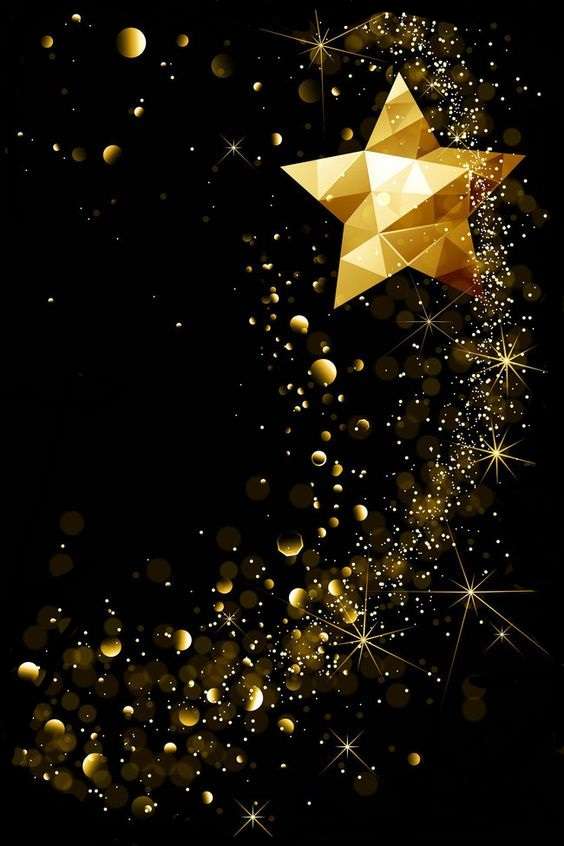
| Author Notes |
GOGYOHKA is a five-line free-style Japanese poetic form with no strict rules on syllable count but as brief as possible. Any theme. Lines are grammatically connected. Alliteration, personification, and metaphor are okay but never rhyme. Japanese poets have written gogyohka since the 1910s. However, they did not name the form until 1983 by poet Enta Kusakabe. === source = writers digest ===source=wikipedia
you for taking the time to read and review my poem. Gypsy pictures from pinterest |
![]()
By Gypsy Blue Rose

| Author Note: | For Rules, Please Read My Author Notes |
love poems
for the beautiful moon —
so full of herself
riding on night clouds
and whispering susurrus
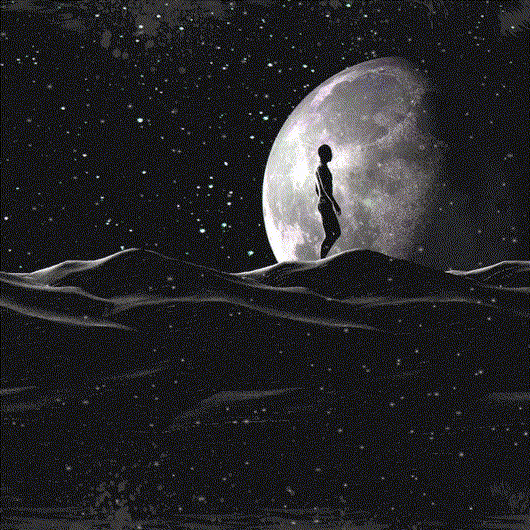
| Author Notes |
Susurrus = a soft murmuring or rustling sound; whisper
TANKA is a Japanese unrhymed love poem having about 12 to 31 syllables usually arranged in five lines. The first English-speaking poets imitated the Japanese models of 5-7-5-7-7 syllabic structure in five lines, but because Japanese syllables are shorter than English syllables the poems were too wordy and choppy. The beginning two lines are descriptive and image-focused, and the third line serves as a transition to the bottom two lines which are reflective using metaphor, simile, or personification. The subject matter varies, but most tanka are emotionally stirring or profound, and many are about love. Tanka originated in the seventh century in the Japanese Imperial Court, where women and men engaged in courtship. click here if you want to read modern tanka examples === click here to read Tanka Society of America === click here if you want to read modern tanka rules Thank you very much for taking the time to read and review my poem. Gypsy "Poetry heals the wounds inflicted by reason." - Novalis pictures: from pinterest |
![]()
By Gypsy Blue Rose

| Author Note: | For Rules, Please Read My Author Notes |
night sky aglow
with glittering stars —
but you’re not around
and my longing for you
grows fiery and fierce
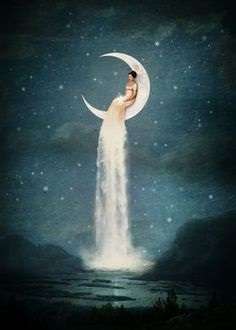
silvery moon casts
a tranquil ethereal light —
that tempers my need
to hold you, my love,
you are my universe
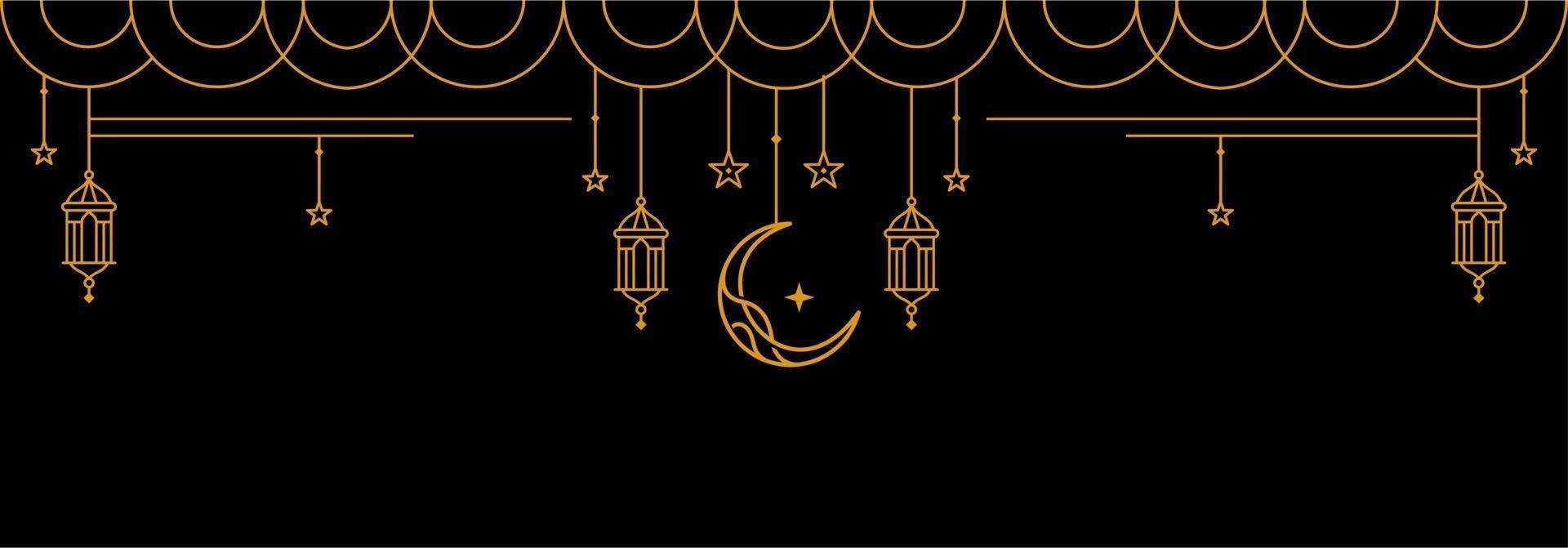
| Author Notes |
TANKA is a Japanese unrhymed love poem having about 12 to 31 syllables usually arranged in five lines. The first English-speaking poets imitated the Japanese models of 5-7-5-7-7 syllabic structure in five lines, but because Japanese syllables are shorter than English syllables the poems were too wordy and choppy. The beginning two lines are descriptive and image-focused, and the third line serves as a transition to the bottom two lines which are reflective using metaphor, simile, or personification. The subject matter varies, but most tanka are emotionally stirring or profound, and many are about love. Tanka originated in the seventh century in the Japanese Imperial Court, where women and men engaged in courtship. click here if you want to read modern tanka examples === click here to read Tanka Society of America === click here if you want to read modern tanka rules
Thank you very much for taking the time to read and review my poem. Gypsy "Poetry heals the wounds inflicted by reason." - Novalis pictures from pinterest.com |
![]()
By Gypsy Blue Rose

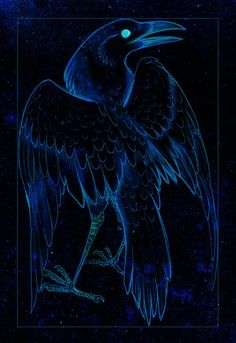
| Author Notes |
Crows eat bugs, small animals, grains, and roadkill. Crows aren't too picky - they'll eat anything they can catch!
GOGYOHKA is a five-line free-style Japanese poetic form with no strict rules on syllable count but as brief as possible. Any theme. Lines are grammatically connected. Alliteration, personification, and metaphor are okay but never rhyme. Japanese poets have written gogyohka since the 1910s. However, they did not name the form until 1983 by poet Enta Kusakabe. === source = writers digest ===source=wikipedia Thank you for taking the time to read and review my poem. Gypsy picture from pinterest.com |
![]()
By Gypsy Blue Rose

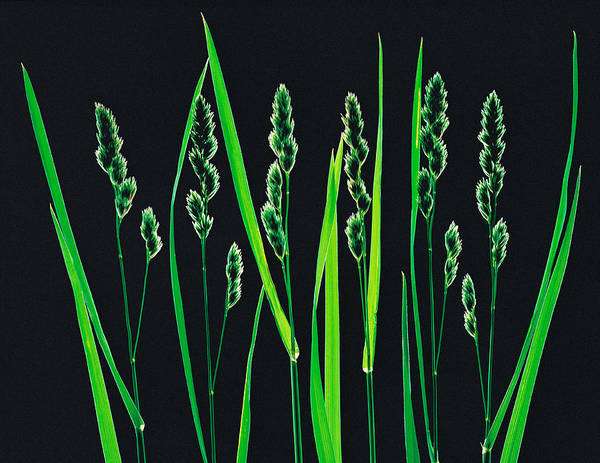
| Author Notes |
GOGYOHKA is a five-line free-style Japanese poetic form with no strict rules on syllable count but as brief as possible. Any theme. Lines are grammatically connected. Alliteration, personification, and metaphor are okay but never rhyme. Japanese poets have written gogyohka since the 1910s. However, they did not name the form until 1983 by poet Enta Kusakabe. === source = writers digest ===source=wikipedia
Thank you for taking the time to read and review my poem. Gypsy "Ever has it been that love knows not its own depth until the hour of separation." - Kahlil Gibran |
![]()
By Gypsy Blue Rose

| Author Note: | For Rules, Please Read My Author Notes |
painting a landscape
of paradise at sunrise —
strong brush strokes
blending and smudging wet paint
my mind still in bed with you
| Author Notes |
TANKA is a Japanese unrhymed love poem having about 12 to 31 syllables usually arranged in five lines. The first English-speaking poets imitated the Japanese models of 5-7-5-7-7 syllabic structure in five lines, but because Japanese syllables are shorter than English syllables the poems were too wordy and choppy. The beginning two lines are descriptive and image-focused, and the third line serves as a transition to the bottom two lines which are reflective using metaphor, simile, or personification. The subject matter varies, but most tanka are emotionally stirring or profound, and many are about love. Tanka originated in the seventh century in the Japanese Imperial Court, where women and men engaged in courtship. click here if you want to read modern tanka examples === click here to read Tanka Society of America === click here if you want to read modern tanka rules
Thank you very much for taking the time to read and review my poem. Gypsy "Poetry heals the wounds inflicted by reason." - Novalis |
![]()
By Gypsy Blue Rose

| Author Note: | For Rules, Please Read My Author Notes |

| Author Notes |
FOREST FLOOR is the part of a forest ecosystem that mediates between the living, aboveground portion, and the soil, composed of dead wood and shed leaves.
TANKA is a Japanese unrhymed love poem having about 12 to 31 syllables usually arranged in five lines. The first English-speaking poets imitated the Japanese models of 5-7-5-7-7 syllabic structure in five lines, but because Japanese syllables are shorter than English syllables the poems were too wordy and choppy. The beginning two lines are descriptive and image-focused, and the third line serves as a transition to the bottom two lines which are reflective using metaphor, simile, or personification. The subject matter varies, but most tanka are emotionally stirring or profound, and many are about love. Tanka originated in the seventh century in the Japanese Imperial Court, where women and men engaged in courtship. click here if you want to read modern tanka examples === click here to read Tanka Society of America === click here if you want to read modern tanka rules Thank you very much for taking the time to read and review my poem. Gypsy "Poetry heals the wounds inflicted by reason." - Novalis |
![]()
By Gypsy Blue Rose

| Author Note: | If You Would Like To Join the Japanese Poetry Club, please check my author notes |

| Author Notes |
GOGYOHKA is a five-line free-style Japanese poetic form with no strict rules on syllable count but as brief as possible. Any theme. Lines are grammatically connected. Alliteration, personification, and metaphor are okay but never rhyme. Japanese poets have written gogyohka since the 1910s. However, they did not name the form until 1983 by poet Enta Kusakabe. === source = writers digest ===source=wikipedia
Thank you for taking the time to read and review my poem. Gypsy "love knows not its own depth until the hour of separation." -- Kahlil Gibran |
![]()
By Gypsy Blue Rose

| Author Note: | For Rules, Please Read My Author Notes |
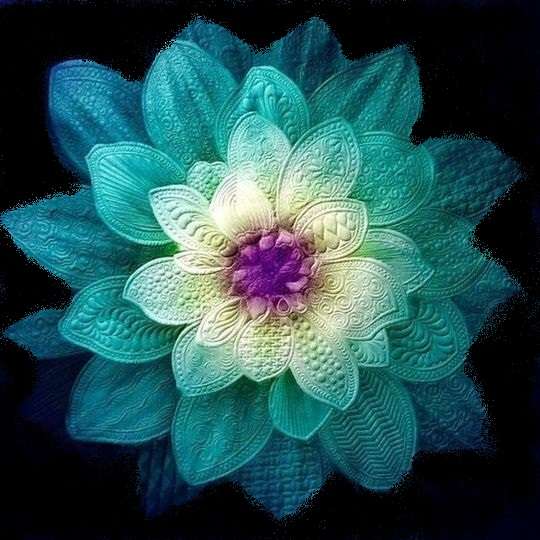
| Author Notes |
"May your sails always billow and your boat remain free from the doldrums. May your voyage be triumphant." - anonymous
-- Mast = a structure rising above the hull of a boat to hold sails -- To find north the sun's highest point (noon or high noon) is directly south TANKA is a Japanese unrhymed love poem having about 12 to 31 syllables usually arranged in five lines. The first English-speaking poets imitated the Japanese models of 5-7-5-7-7 syllabic structure in five lines, but because Japanese syllables are shorter than English syllables the poems were too wordy and choppy. The beginning two lines are descriptive and image-focused, and the third line serves as a transition to the bottom two lines which are reflective using metaphor, simile, or personification. The subject matter varies, but most tanka are emotionally stirring or profound, and many are about love. Tanka originated in the seventh century in the Japanese Imperial Court, where women and men engaged in courtship. click here if you want to read modern tanka examples === click here to read Tanka Society of America === click here if you want to read modern tanka rules Thank you very much for taking the time to read and review my poem. Gypsy "Poetry heals the wounds inflicted by reason." - Novalis picture from Pinterest.com |
![]()
By Gypsy Blue Rose

| Author Note: | For Rules, Please Read My Author Notes |

| Author Notes |
TANKA is a Japanese unrhymed love poem having about 12 to 31 syllables usually arranged in five lines. The first English-speaking poets imitated the Japanese models of 5-7-5-7-7 syllabic structure in five lines, but because Japanese syllables are shorter than English syllables the poems were too wordy and choppy. The beginning two lines are descriptive and image-focused, and the third line serves as a transition to the bottom two lines which are reflective using metaphor, simile, or personification. The subject matter varies, but most tanka are emotionally stirring or profound, and many are about love. Tanka originated in the seventh century in the Japanese Imperial Court, where women and men engaged in courtship. click here if you want to read modern tanka examples === click here to read Tanka Society of America === click here if you want to read modern tanka rules
Thank you very much for taking the time to read and review my poem. Gypsy "Poetry heals the wounds inflicted by reason." - Novalis pictures from pinterest |
![]()
By Gypsy Blue Rose

| Author Note: | For Rules, Please Read My Author Notes |
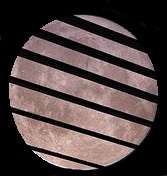
| Author Notes |
TANKA is a Japanese unrhymed love poem having about 12 to 31 syllables usually arranged in five lines. The first English-speaking poets imitated the Japanese models of 5-7-5-7-7 syllabic structure in five lines, but because Japanese syllables are shorter than English syllables the poems were too wordy and choppy. The beginning two lines are descriptive and image-focused, and the third line serves as a transition to the bottom two lines which are reflective using metaphor, simile, or personification. The subject matter varies, but most tanka are emotionally stirring or profound, and many are about love. Tanka originated in the seventh century in the Japanese Imperial Court, where women and men engaged in courtship. click here if you want to read modern tanka examples === click here to read Tanka Society of America === click here if you want to read modern tanka rules
Thank you very much for taking the time to read and review my poem. Gypsy "Poetry heals the wounds inflicted by reason." - Novalis pictures from google public domain |
![]()
By Gypsy Blue Rose

| Author Note: | For Rules, Please Read My Author Notes |
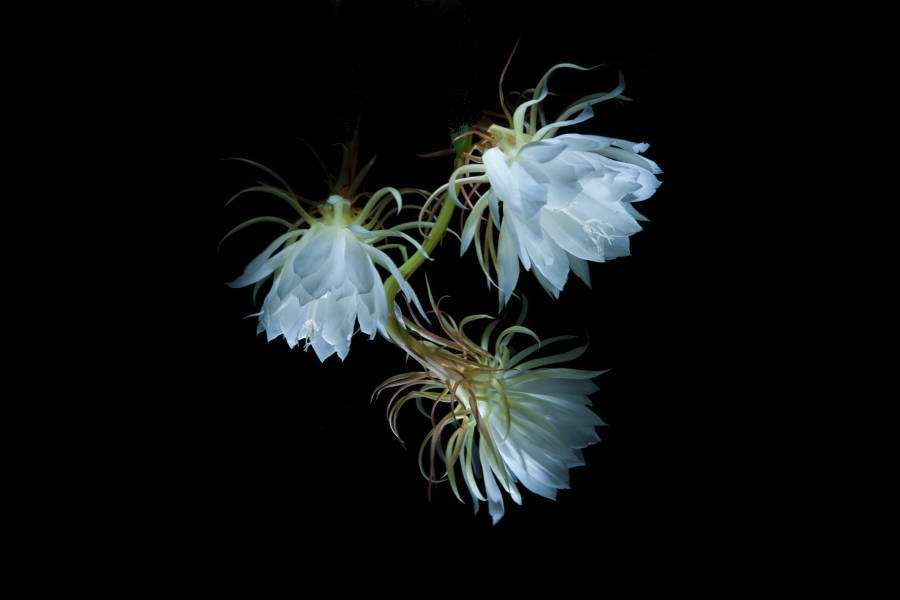
| Author Notes |
The Rubenesque figure is related to the painter Rubens's artworks, especially rounded curvy figures in a pleasing or attractive way.
TANKA is a Japanese unrhymed love poem having about 12 to 31 syllables usually arranged in five lines. The first English-speaking poets imitated the Japanese models of 5-7-5-7-7 syllabic structure in five lines, but because Japanese syllables are shorter than English syllables the poems were too wordy and choppy. The beginning two lines are descriptive and image-focused, and the third line serves as a transition to the bottom two lines which are reflective using metaphor, simile, or personification. The subject matter varies, but most tanka are emotionally stirring or profound, and many are about love. Tanka originated in the seventh century in the Japanese Imperial Court, where women and men engaged in courtship. click here if you want to read modern tanka examples === click here to read Tanka Society of America === click here if you want to read modern tanka rules Thank you very much for taking the time to read and review my poem. Gypsy "Poetry heals the wounds inflicted by reason." - Novalis pictures from pinterest |
![]()
By Gypsy Blue Rose

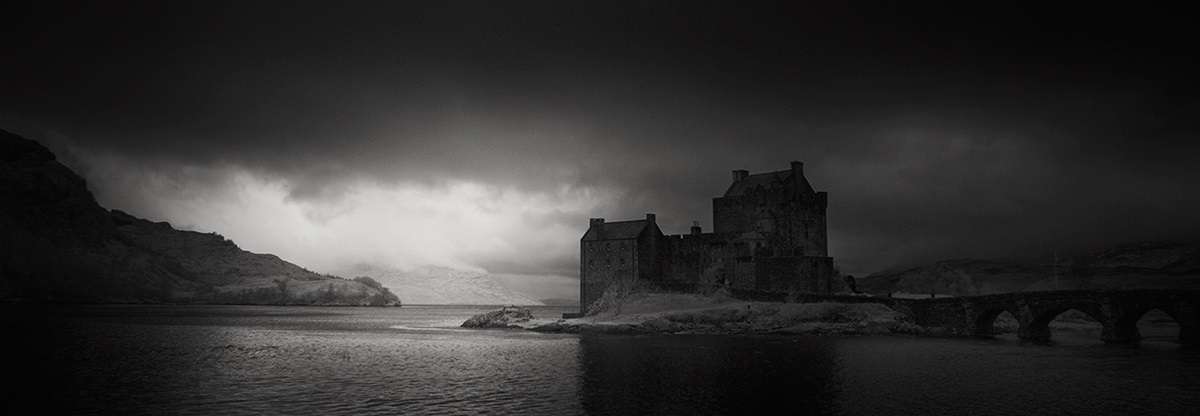
| Author Notes |
"Pain is inevitable, suffering is optional." - Buddhist Proverb
A curtain wall is a defensive wall between two fortified towers of a castle GOGYOHKA is a five-line free-style Japanese poetic form with no strict rules on syllable count but as brief as possible. Any theme. Lines are grammatically connected. Alliteration, personification, and metaphor are okay but never rhyme. Japanese poets have written gogyohka since the 1910s. However, they did not name the form until 1983 by poet Enta Kusakabe. === source = writers digest ===source=wikipedia Thank you for taking the time to read and review my poem. Gypsy |
![]()
By Gypsy Blue Rose

| Author Note: | For Rules, Please Read My Author Notes |
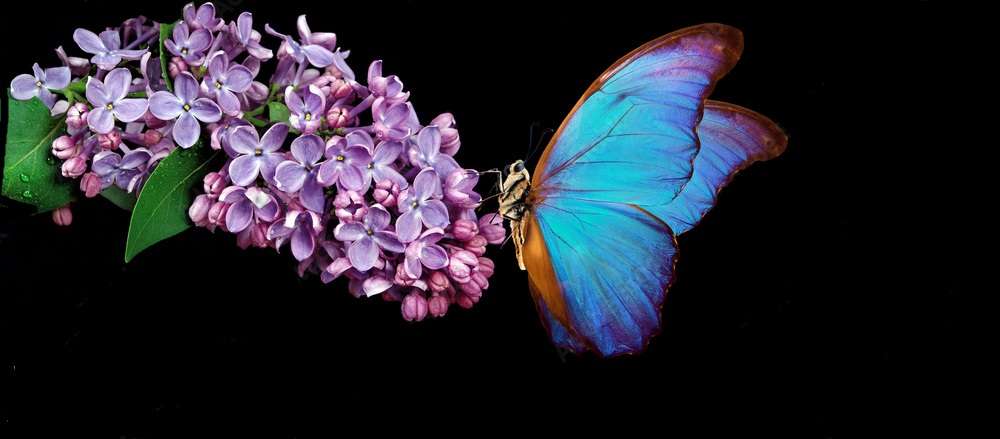
| Author Notes |
TANKA is a Japanese unrhymed love poem having about 12 to 31 syllables usually arranged in five lines. The first English-speaking poets imitated the Japanese models of 5-7-5-7-7 syllabic structure in five lines, but because Japanese syllables are shorter than English syllables the poems were too wordy and choppy. The beginning two lines are descriptive and image-focused, and the third line serves as a transition to the bottom two lines which are reflective using metaphor, simile, or personification. The subject matter varies, but most tanka are emotionally stirring or profound, and many are about love. Tanka originated in the seventh century in the Japanese Imperial Court, where women and men engaged in courtship. click here if you want to read modern tanka examples === click here to read Tanka Society of America === click here if you want to read modern tanka rules
Thank you very much for taking the time to read and review my poem. Gypsy "Poetry heals the wounds inflicted by reason." - Novalis picture from google public domain |
![]()
By Gypsy Blue Rose

| Author Note: | For Rules, Please Read My Author Notes |

| Author Notes |
TANKA is a Japanese unrhymed love poem having about 12 to 31 syllables usually arranged in five lines. The first English-speaking poets imitated the Japanese models of 5-7-5-7-7 syllabic structure in five lines, but because Japanese syllables are shorter than English syllables the poems were too wordy and choppy. The beginning two lines are descriptive and image-focused, and the third line serves as a transition to the bottom two lines which are reflective using metaphor, simile, or personification. The subject matter varies, but most tanka are emotionally stirring or profound, and many are about love. Tanka originated in the seventh century in the Japanese Imperial Court, where women and men engaged in courtship. click here if you want to read modern tanka examples === click here to read Tanka Society of America === click here if you want to read modern tanka rules
Thank you very much for taking the time to read and review my poem. Gypsy "Poetry heals the wounds inflicted by reason." - Novalis Painting: "Ashus, Forever Forlorn", the story doesn't relate to my poem, I just liked it. Found it on Pinterest.com Her story: Ashus is a mythical goddess. She had been abducted by a pack of demons and treated like a slave. Her unwavering faith in her gods didn't save her. Her alluring beauty had brought this horrific fate and salvation would never come. |
![]()
By Gypsy Blue Rose

| Author Note: | tanka in black font in my author notes- for those who can't read bright red |
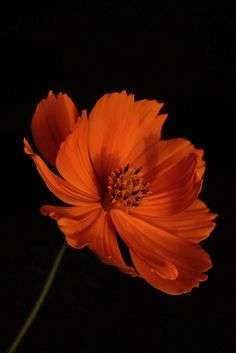
| Author Notes |
alluring beauty
in vermilion and cinnabar shades of sunrise - she's engulfed in radiant flames I dare not touch Vermilion and Cinnabar are spicy red-orange shades of minerals initially used in the 19th century TANKA is a Japanese unrhymed love poem having about 12 to 31 syllables usually arranged in five lines. The first English-speaking poets imitated the Japanese models of 5-7-5-7-7 syllabic structure in five lines, but because Japanese syllables are shorter than English syllables the poems were too wordy and choppy. The beginning two lines are descriptive and image-focused, and the third line serves as a transition to the bottom two lines which are reflective using metaphor, simile, or personification. The subject matter varies, but most tanka are emotionally stirring or profound, and many are about love. Tanka originated in the seventh century in the Japanese Imperial Court, where women and men engaged in courtship. click here if you want to read modern tanka examples === click here to read Tanka Society of America === click here if you want to read modern tanka rules Thank you very much for taking the time to read and review my poem. Gypsy "Poetry heals the wounds inflicted by reason." - Novalis picture from Pinterest.com |
![]()
By Gypsy Blue Rose


| Author Notes |
Amorous = expressing love
GOGYOHKA is a five-line free-style Japanese poetic form with no strict rules on syllable count but as brief as possible. Any theme. Lines are grammatically connected. Alliteration, personification, and metaphor are okay but never rhyme. Japanese poets have written gogyohka since the 1910s. However, they did not name the form until 1983 by poet Enta Kusakabe. === source = writers digest ===source=wikipedia Thank you very much for taking the time to read and review my poem. Gypsy "Poetry heals the wounds inflicted by reason." - Novalis pictures from Pinterest.com |
![]()
By Gypsy Blue Rose

| Author Note: | For Rules, Please Read My Author Notes |

| Author Notes |
TANKA is a Japanese unrhymed love poem having about 12 to 31 syllables usually arranged in five lines. The first English-speaking poets imitated the Japanese models of 5-7-5-7-7 syllabic structure in five lines, but because Japanese syllables are shorter than English syllables the poems were too wordy and choppy. The beginning two lines are descriptive and image-focused, and the third line serves as a transition to the bottom two lines which are reflective using metaphor, simile, or personification. The subject matter varies, but most tanka are emotionally stirring or profound, and many are about love. Tanka originated in the seventh century in the Japanese Imperial Court, where women and men engaged in courtship. click here if you want to read modern tanka examples === click here to read Tanka Society of America === click here if you want to read modern tanka rules
Thank you very much for taking the time to read and review my poem. Gypsy "Poetry heals the wounds inflicted by reason." - Novalis pictures from Pinterest.com |
![]()
By Gypsy Blue Rose

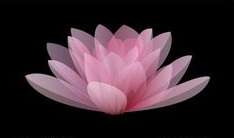
| Author Notes |
GOGYOHKA is a five-line free-style Japanese poetic form with no strict rules on syllable count but as brief as possible. Any theme. Lines are grammatically connected. Alliteration, personification, and metaphor are okay but never rhyme. Japanese poets have written gogyohka since the 1910s. However, they did not name the form until 1983 by poet Enta Kusakabe. === source = writers digest ===source=wikipedia
Thank you for taking the time to read and review my poem. Gypsy pictures from Pinterest.com |
![]()
By Gypsy Blue Rose

| Author Note: | For Rules, Please Read My Author Notes |
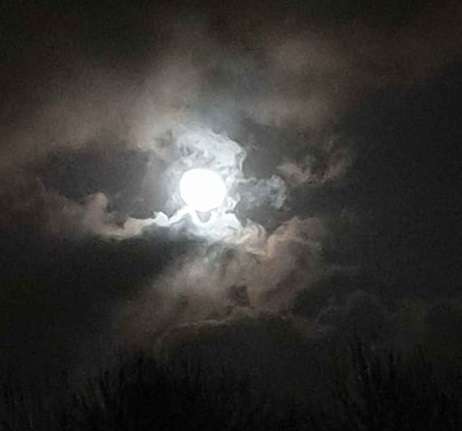
| Author Notes |
TANKA is a Japanese unrhymed love poem having about 12 to 31 syllables usually arranged in five lines. The first English-speaking poets imitated the Japanese models of 5-7-5-7-7 syllabic structure in five lines, but because Japanese syllables are shorter than English syllables the poems were too wordy and choppy. The beginning two lines are descriptive and image-focused, and the third line serves as a transition to the bottom two lines which are reflective using metaphor, simile, or personification. The subject matter varies, but most tanka are emotionally stirring or profound, and many are about love. Tanka originated in the seventh century in the Japanese Imperial Court, where women and men engaged in courtship. click here if you want to read modern tanka examples === click here to read Tanka Society of America === click here if you want to read modern tanka rules
Thank you very much for taking the time to read and review my poem. Gypsy "Poetry heals the wounds inflicted by reason." - Novalis pictures from pinterest.com |
![]()
By Gypsy Blue Rose

| Author Note: | For Rules, Please Read My Author Notes |
to this hazy amber night —
drenched in loneliness
craving your searing touch
and old spice
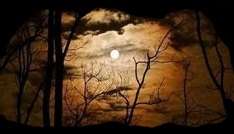
| Author Notes |
TANKA is a Japanese unrhymed love poem having about 12 to 31 syllables usually arranged in five lines. The first English-speaking poets imitated the Japanese models of 5-7-5-7-7 syllabic structure in five lines, but because Japanese syllables are shorter than English syllables the poems were too wordy and choppy. The beginning two lines are descriptive and image-focused, and the third line serves as a transition to the bottom two lines which are reflective using metaphor, simile, or personification. The subject matter varies, but most tanka are emotionally stirring or profound, and many are about love. Tanka originated in the seventh century in the Japanese Imperial Court, where women and men engaged in courtship. click here if you want to read modern tanka examples === click here to read Tanka Society of America === click here if you want to read modern tanka rules
Thank you very much for taking the time to read and review my poem. Gypsy "Poetry heals the wounds inflicted by reason." - Novalis |
![]()
By Gypsy Blue Rose

| Author Note: | For Rules, Please Read My Author Notes |
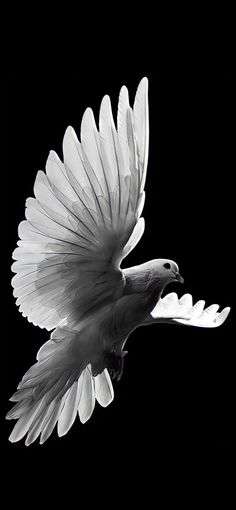
| Author Notes |
The pain of loss cuts deep. It can immobilize us with its heavy burden, we are like a bird with a broken wing, unable to fly.
Ekphrastic is a poem inspired by a picture or painting TANKA is a Japanese unrhymed love poem having about 12 to 31 syllables usually arranged in five lines. The first English-speaking poets imitated the Japanese models of 5-7-5-7-7 syllabic structure in five lines, but because Japanese syllables are shorter than English syllables the poems were too wordy and choppy. The beginning two lines are descriptive and image-focused, and the third line serves as a transition to the bottom two lines which are reflective using metaphor, simile, or personification. The subject matter varies, but most tanka are emotionally stirring or profound, and many are about love. Tanka originated in the seventh century in the Japanese Imperial Court, where women and men engaged in courtship. click here if you want to read modern tanka examples === click here to read Tanka Society of America === click here if you want to read modern tanka rules Thank you very much for taking the time to read and review my poem. Gypsy "Poetry heals the wounds inflicted by reason." - Novalis picture from pinterest.com |
![]()
By Gypsy Blue Rose

| Author Note: | For Rules, Please Read My Author Notes |
red sunset
over a bleeding sea
where I drown
in your absence … so absolute
not even echoes left of you

| Author Notes |
TANKA is a Japanese unrhymed love poem having about 12 to 31 syllables usually arranged in five lines. The first English-speaking poets imitated the Japanese models of 5-7-5-7-7 syllabic structure in five lines. Still, because Japanese syllables are shorter than English syllables the poems were too wordy and choppy. The beginning two lines are descriptive and image-focused, and the third line serves as a transition to the bottom two lines which are reflective using metaphor, simile, or personification. The subject matter varies, but most tanka are emotionally stirring or profound, and many are about love. Tanka originated in the seventh century in the Japanese Imperial Court, where women and men engaged in courtship. click here if you want to read modern tanka examples === click here to read Tanka Society of America === click here if you want to read modern tanka rules
Thank you very much for taking the time to read and review my poem. Gypsy "Poetry heals the wounds inflicted by reason." - Novalis pictures from Pinterest.com |
![]()
By Gypsy Blue Rose

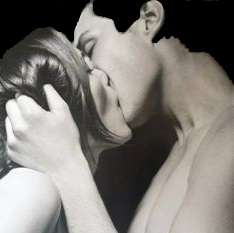
![]()
By Gypsy Blue Rose

| Author Note: | For Rules, Please Read My Author Notes |
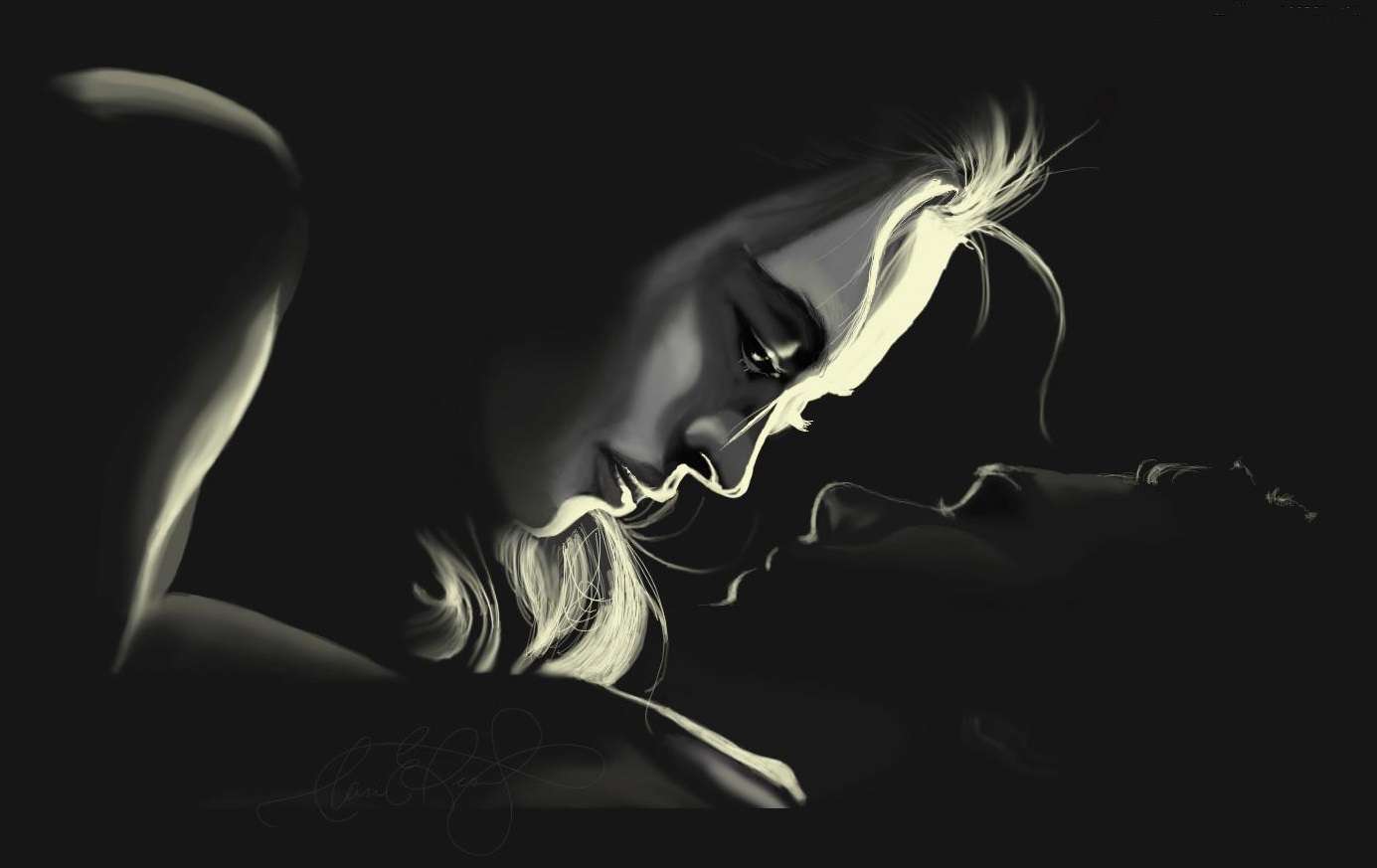
| Author Notes |
TANKA is a Japanese unrhymed love poem having about 12 to 31 syllables usually arranged in five lines. The first English-speaking poets imitated the Japanese models of 5-7-5-7-7 syllabic structure in five lines, but because Japanese syllables are shorter than English syllables the poems were too wordy and choppy. The beginning two lines are descriptive and image-focused, and the third line serves as a transition to the bottom two lines which are reflective using metaphor, simile, or personification. The subject matter varies, but most tanka are emotionally stirring or profound, and many are about love. Tanka originated in the seventh century in the Japanese Imperial Court, where women and men engaged in courtship. click here if you want to read modern tanka examples === click here to read Tanka Society of America === click here if you want to read modern tanka rules
Thank you very much for taking the time to read and review my poem. Gypsy "Poetry heals the wounds inflicted by reason." - Novalis pictures from Pinterest.com |
![]()
By Gypsy Blue Rose

| Author Note: | For Rules, Please Read My Author Notes |

| Author Notes |
TANKA is a Japanese unrhymed love poem having about 12 to 31 syllables usually arranged in five lines. The first English-speaking poets imitated the Japanese models of 5-7-5-7-7 syllabic structure in five lines, but because Japanese syllables are shorter than English syllables the poems were too wordy and choppy. The beginning two lines are descriptive and image-focused, and the third line serves as a transition to the bottom two lines which are reflective using metaphor, simile, or personification. The subject matter varies, but most tanka are emotionally stirring or profound, and many are about love. Tanka originated in the seventh century in the Japanese Imperial Court, where women and men engaged in courtship. click here if you want to read modern tanka examples === click here to read Tanka Society of America === click here if you want to read modern tanka rules
Thank you very much for taking the time to read and review my poem. Gypsy "Poetry heals the wounds inflicted by reason." - Novalis picture from pinterest |
![]()
By Gypsy Blue Rose

| Author Note: | For Rules, Please Read My Author Notes |
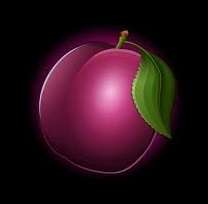
| Author Notes |
TANKA is a Japanese unrhymed love poem having about 12 to 31 syllables usually arranged in five lines. The first English-speaking poets imitated the Japanese models of 5-7-5-7-7 syllabic structure in five lines, but because Japanese syllables are shorter than English syllables the poems were too wordy and choppy. The beginning two lines are descriptive and image-focused, and the third line serves as a transition to the bottom two lines which are reflective using metaphor, simile, or personification. The subject matter varies, but most tanka are emotionally stirring or profound, and many are about love. Tanka originated in the seventh century in the Japanese Imperial Court, where women and men engaged in courtship. click here if you want to read modern tanka examples === click here to read Tanka Society of America === click here if you want to read modern tanka rules
Thank you very much for taking the time to read and review my poem. Gypsy "Poetry heals the wounds inflicted by reason." - Novalis picture from pinterest.com |
![]()
By Gypsy Blue Rose


| Author Notes |
Purple Haze" is a song written by Jimi Hendrix
EKPHRASTIC is a poem inspired by a picture TANKA is a Japanese unrhymed love poem having about 12 to 31 syllables usually arranged in five lines. The first English-speaking poets imitated the Japanese models of 5-7-5-7-7 syllabic structure in five lines, but because Japanese syllables are shorter than English syllables the poems were too wordy and choppy. The beginning two lines are descriptive and image-focused, and the third line serves as a transition to the bottom two lines which are reflective using metaphor, simile, or personification. The subject matter varies, but most tanka are emotionally stirring or profound, and many are about love. Tanka originated in the seventh century in the Japanese Imperial Court, where women and men engaged in courtship. click here if you want to read modern tanka examples === click here to read Tanka Society of America === click here if you want to read modern tanka rules Thank you very much for taking the time to read and review my poem. Gypsy "Poetry heals the wounds inflicted by reason." - Novalis Picture from DeviantArt.com |
![]()
By Gypsy Blue Rose

| Author Note: | For Rules, Please Read My Author Notes |

| Author Notes |
The notifiers are the officers who deliver the death notice. Marines provide guidance, casualty reporting; notification; mortuary affairs; military funeral honors; benefits; entitlements assistance; and all administrative requirements.
TANKA is a Japanese unrhymed love poem having about 12 to 31 syllables usually arranged in five lines. The first English-speaking poets imitated the Japanese models of 5-7-5-7-7 syllabic structure in five lines, but because Japanese syllables are shorter than English syllables the poems were too wordy and choppy. The beginning two lines are descriptive and image-focused, and the third line serves as a transition to the bottom two lines which are reflective using metaphor, simile, or personification. The subject matter varies, but most tanka are emotionally stirring or profound, and many are about love. Tanka originated in the seventh century in the Japanese Imperial Court, where women and men engaged in courtship. click here if you want to read modern tanka examples === click here to read Tanka Society of America === click here if you want to read modern tanka rules Thank you very much for taking the time to read and review my poem. Gypsy "Poetry heals the wounds inflicted by reason." - Novalis |
![]()
By Gypsy Blue Rose


| Author Notes |
A siege is a collective noun for herons
Cinquain Tanka is a combination of a cinquain poem and a tanka. It's written using 5 lines with 5 syllables on each line. "Cinq" is French for the number 5. Tanka is a Japanese poem with five lines too. I created this new poem form. It never rhymes. You can use any subject. Line one: 5 syllables Line two: 5 syllables Line tree: 5 syllables Line four: 5 syllables Line five: 5 syllables Thank you very much for taking the time to read and review my poem. Gypsy pictures from pinterest.com |
|
You've read it - now go back to FanStory.com to comment on each chapter and show your thanks to the author! |
![]()
| © Copyright 2015 Gypsy Blue Rose All rights reserved. Gypsy Blue Rose has granted FanStory.com, its affiliates and its syndicates non-exclusive rights to display this work. |
© 2015 FanStory.com, Inc. All Rights Reserved. Terms under which this service is provided to you. Privacy Statement